Category: History
40 Times People Found Hidden Treasures Left By Previous Owners Inside Their Homes
September 7, 2023
Many old houses have their charm. It’s truly amazing to start a new chapter of your life in a place that was constructed long ago and carries a rich history. Just imagine, countless people might have lived there, rising each morning, preparing meals, fostering bonds with their loved ones, and having numerous conversations.
When you move into a home with such a storied past, it becomes intriguing to immerse yourself in the house’s atmosphere, honor its history, and perhaps even stumble upon hidden clues left behind by previous owners.
We’ve assembled a collection of pics with moments when people experienced exactly that. From discovering coins hidden in a wall to uncovering a hidden jacuzzi beneath the ground, these homeowners came across some truly cool surprises upon moving into their new homes.
#1 My Grandparents Have A Glassed-Over Well In Their Kitchen
They bought the house 10 years ago, they stripped it down and they found it then. They thought it was quite unique and wanted it as a feature, it’s about 25 foot deep and connects to a small old river that ran under a long time ago. Fortunately I have yet to see anything down there!
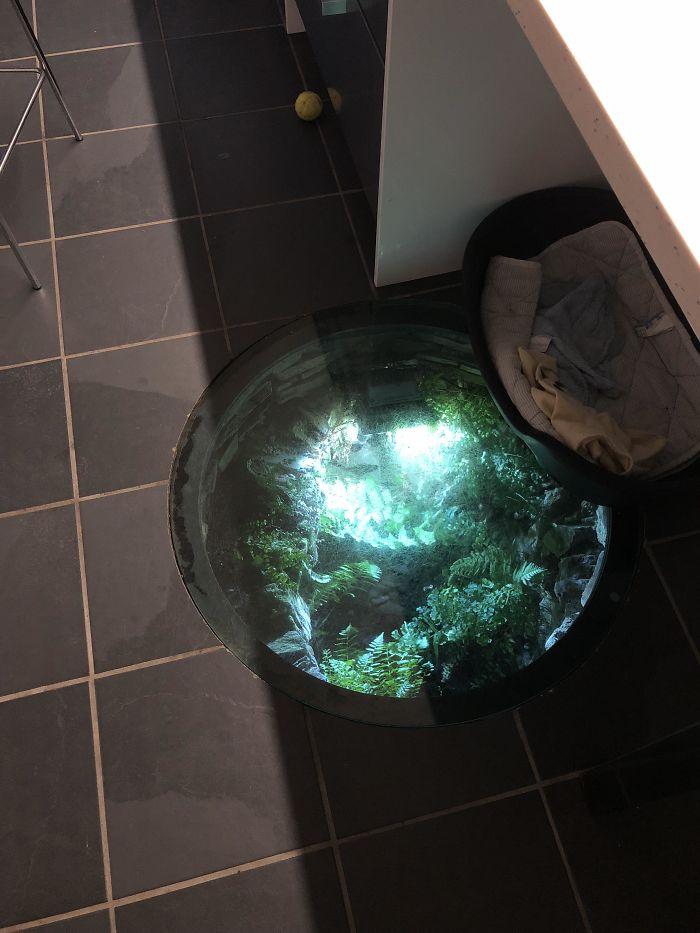
Image credits: TheRedGeradir
There are many things that we can find in the walls of old houses, like a scorched red corset, a 9th-century clay pipe or a mastodon. When you start digging, whether it’s for a construction project in a long-inhabited area or renovating a house, surprises await. You might find something like a ritual object meant to ward off spirits, whether it’s from 300 years ago or just a few decades back. It could have been placed there intentionally or left by accident. Unless it’s a time capsule with a note, its true purpose may remain unknown.
#2 I Was Helping My Dad Move Into His New Office, When We Found A Trapdoor

Image credits: Lumarous
#3 Finally, A Good, Safe, Story
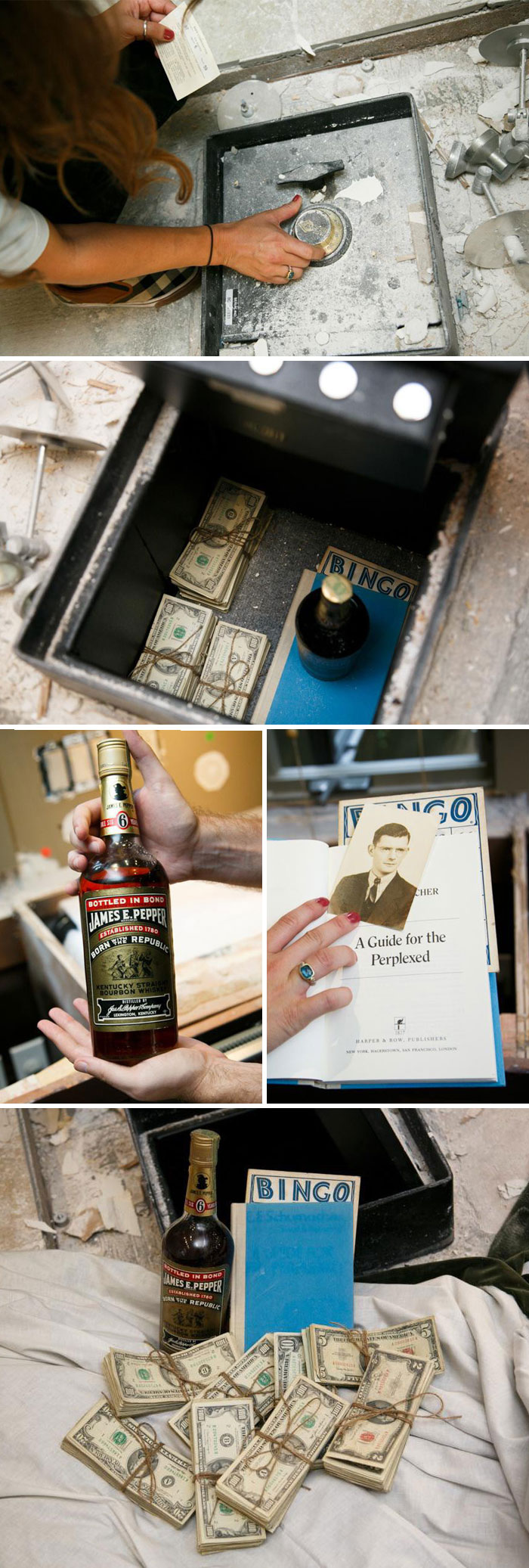
Image credits: sarmik
Every building holds its own history within its walls, ceilings, floors, and foundations. The very materials, like wood, plaster, and stone, can hide secrets or even special items left for future generations to uncover—a connection between the past and the future.
#4 Found A Paw Print On A Brick Wall
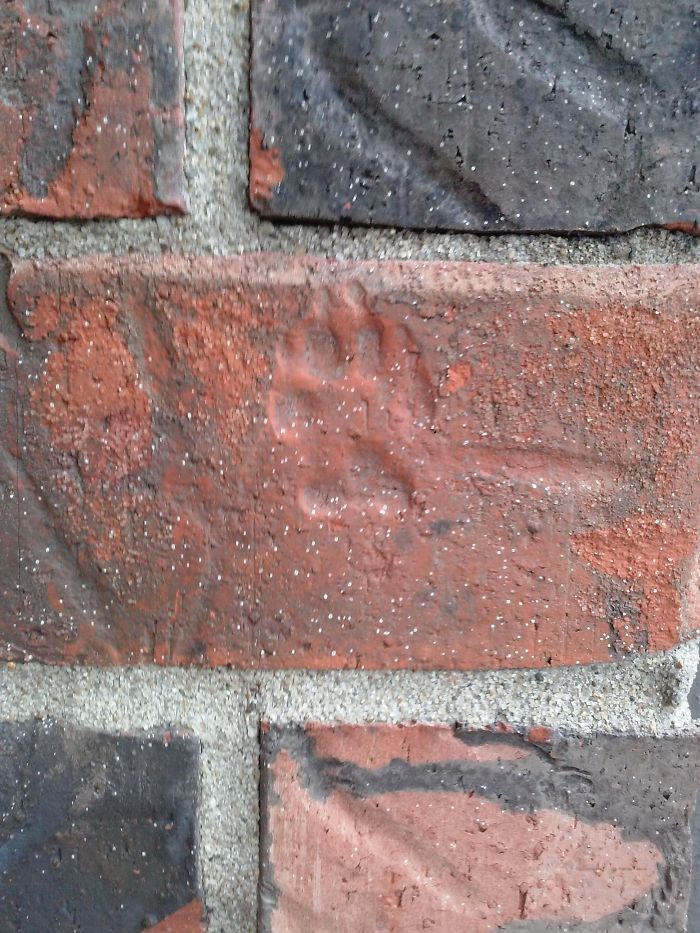
Image credits: PoisoNinja
#5 This Vintage Space Themed Wallpaper Found Under 3 Layers Of Other Wallpaper In An Old Farm House
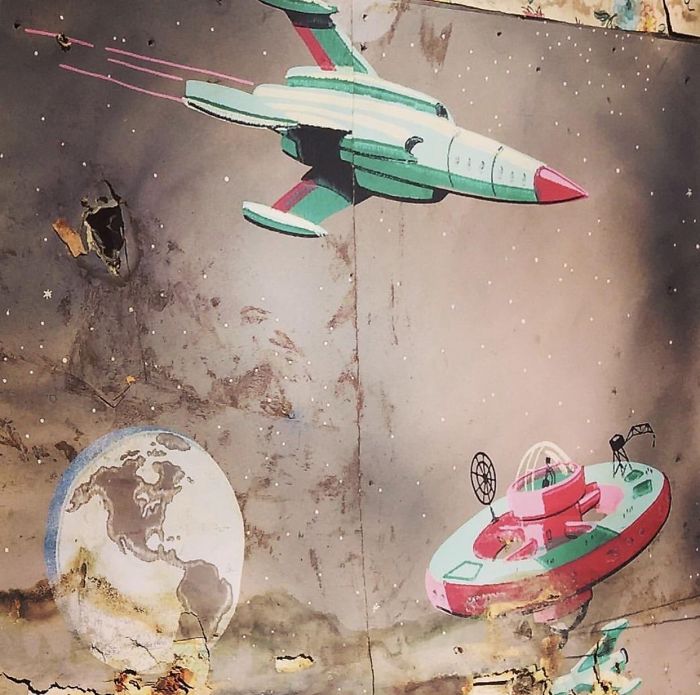
Image credits: bubbaloon
#6 They Found The Old Bath Under Their Living Room
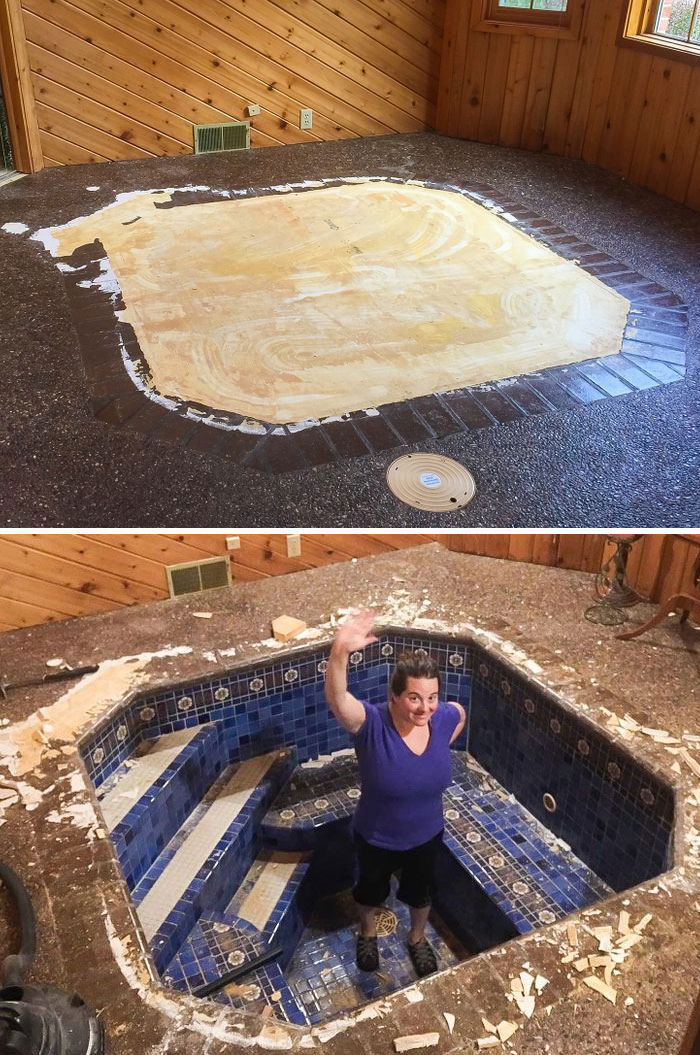
Image credits: markronz
American houses dating back to the Revolutionary War era had secret rooms designed for hiding food, contraband, and militia members from the redcoats. These rooms could have served as safe havens for women and children.
#7 My Apartment Is An Old Police Station And Still Has The Original Cell Doors But Painted
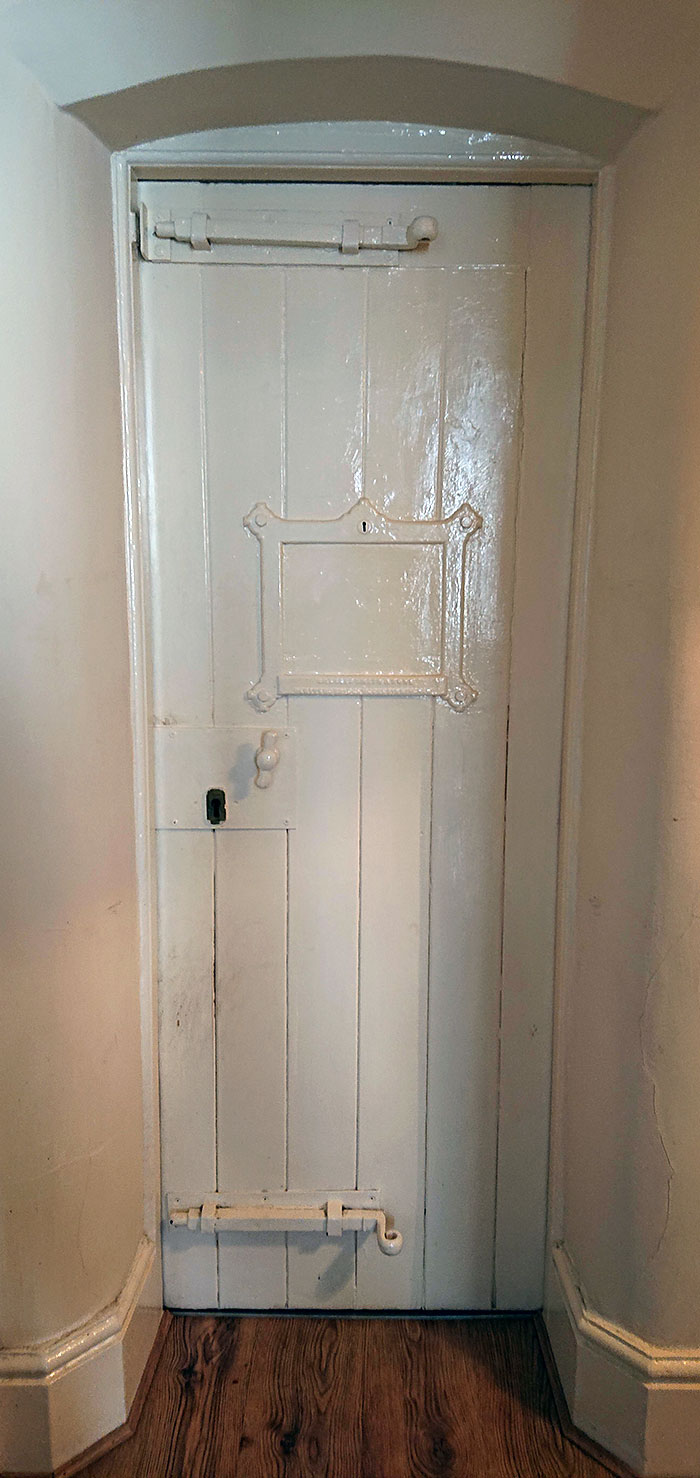
Image credits: RubMyRing
#8 Found A Message While Removing Our Cork Floor Tiles
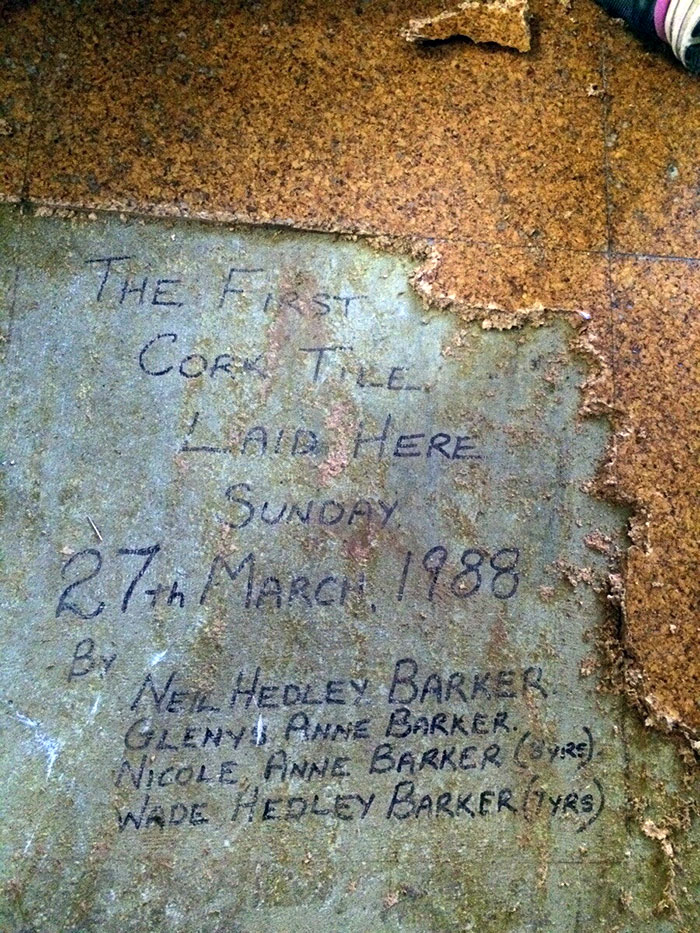
Image credits: tougemonster
#9 Pulled Up The Carpet At The House, And Guess What I Found!
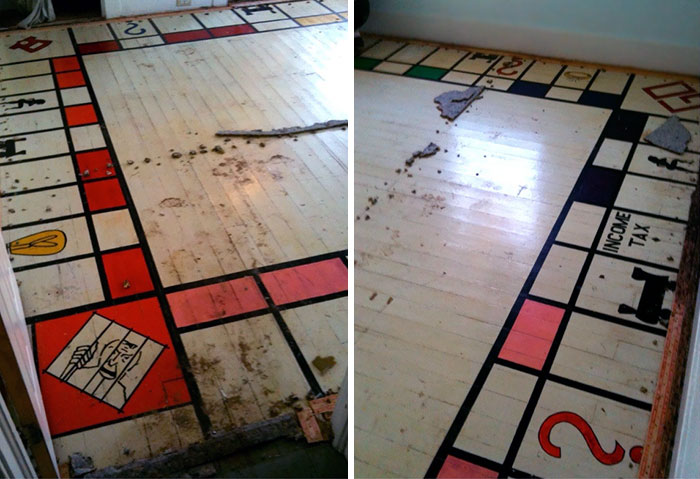
Image credits: Nnewel
Here are some reasons why old houses have secret rooms:
⦁In the early 1800s, many houses were equipped with secret rooms used to shelter runaway slaves.
⦁During the Prohibition era, secret rooms were essential for concealing and producing illicit alcohol.
⦁Reflecting on Anne Frank’s experience, it’s likely that secret rooms were used in Europe during World War II to shelter fugitive Jews.
#10 The Table At This Pub Has A Well In The Middle Of It (England)
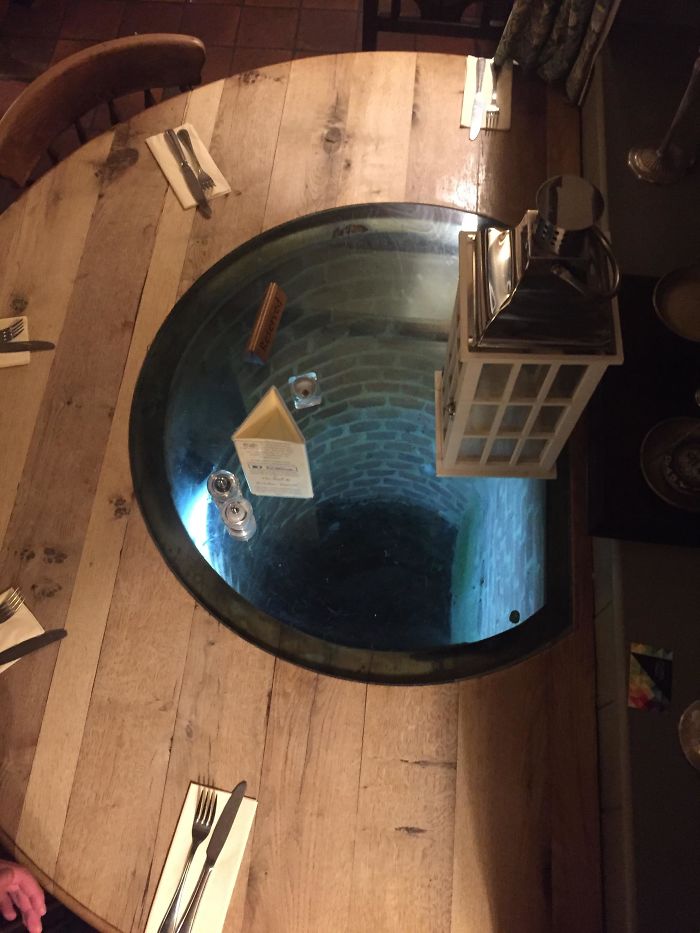
Image credits: TeddyTeey
#11 Friend Was Redecorating His New House And Found This Under A Layer Of Wallpaper
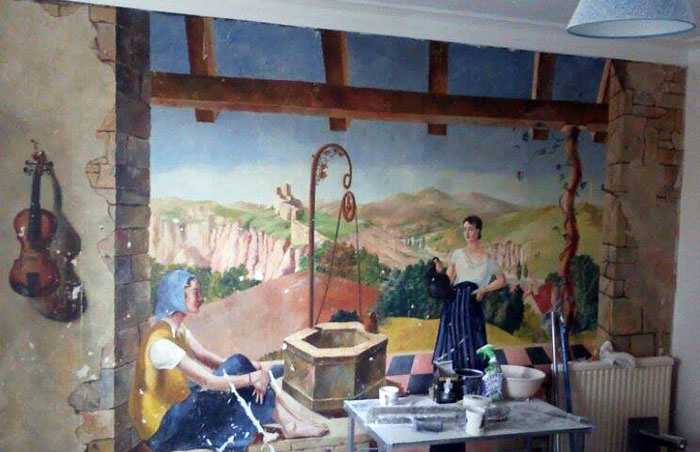
Image credits: thatjasonguy_
#12 Our New Apartment Has A Little Milk Door Under The Cabinets
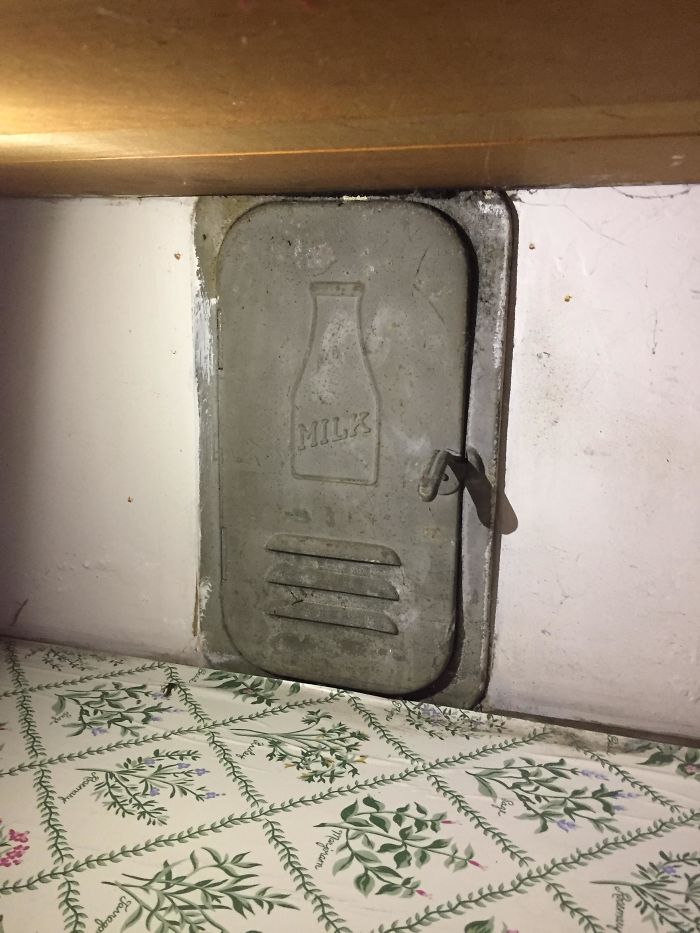
Image credits: d416
The magic of secret rooms lies in their mystique and intrigue, captivating people’s imaginations. In today’s world, concerns about societal breakdown and a general distrust of the government could drive someone to desire such hidden spaces.
#13 Untouched 1800’s Cemetery Preserved In The Basement Of A Tall Building Built Over It
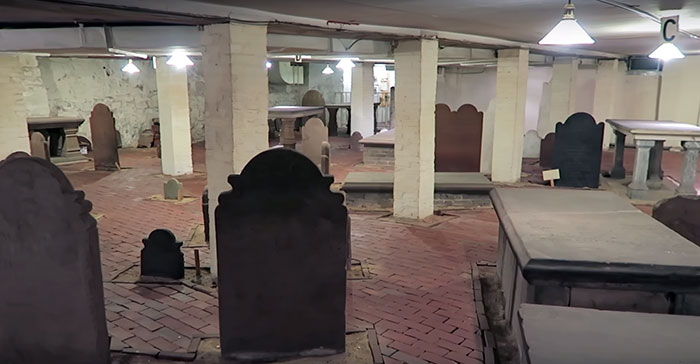
Image credits: HierEncore
#14 Treasure In My Bathroom

Image credits: Oldred92
#15 Lost Hippie Mural Found Under My Flooded House

Image credits: howisnapoleonbonerpartyalreadytaken
While it’s easy to see some great things about old houses, like their timeless character, there are plenty of additional reasons why old houses are better than new ones.
Old houses have a welcoming charm and unique architectural features like crown moldings, stained-glass windows, arched doorways, and antique chandeliers that you rarely find in new builds. In contrast, newer neighborhoods often have houses that look very similar, creating a “cookie-cutter” look without the individuality and character of older homes.
#16 Found Some Friends In A Mile-Long Tunnel That Travels Beneath My Apartment Building
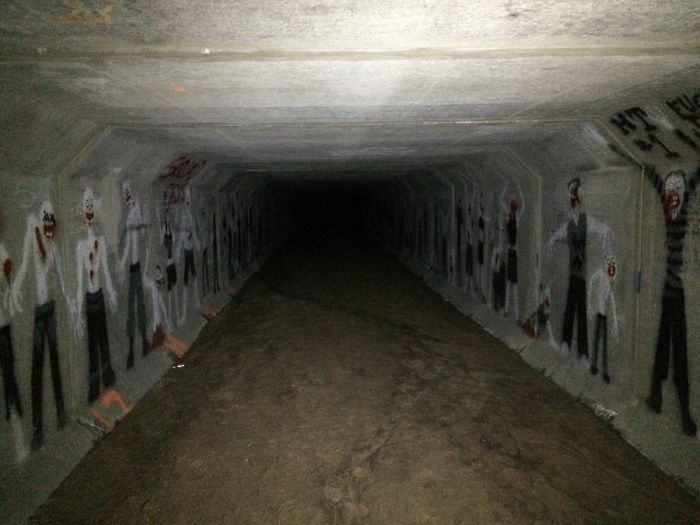
Image credits: holleyfieldart
#17 100-Year-Old Elevator Handle I Saved
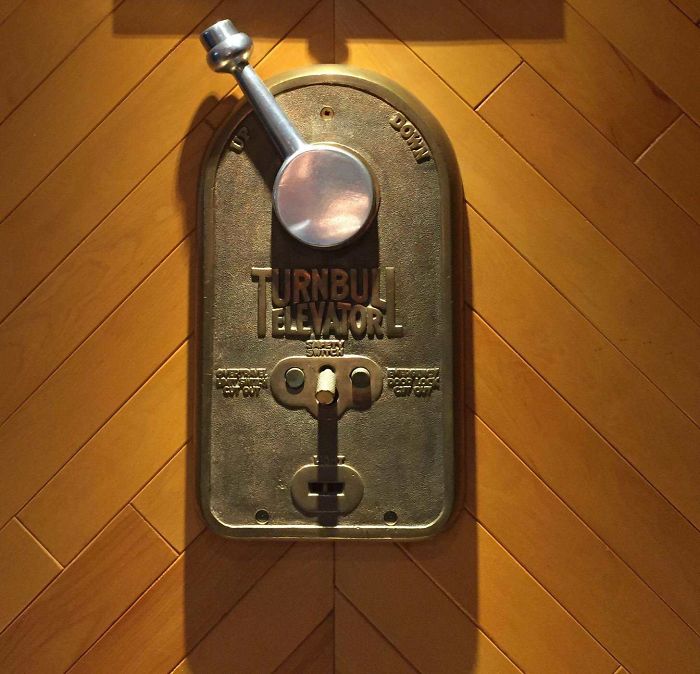
Image credits: Canars1
#18 These “Tom And Jerry” Type Mouse Holes Gnawed In A House Built In 1741
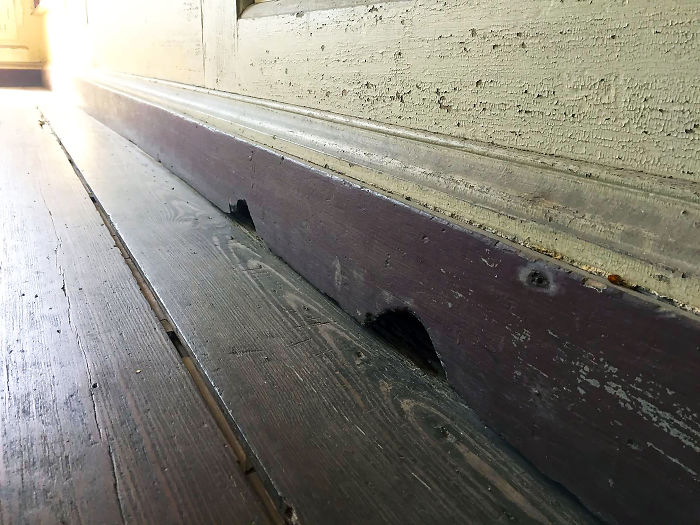
Image credits: oppleTANK
The saying “they don’t make them like they used to” is popular because it’s true. Why? Let us give you a few examples.
Older homes were built with strong materials like stone, brick, and solid wood. For instance, the wood in old houses was from high-quality trees that are more durable and rot-resistant than today’s wood.
#19 My Friend Decided To Replace Her Old Carpet And She Found A Cellar Door And A Cool Surprise

Image credits: madhats86
#20 This Building Has The Original 1909 Electrical Switches
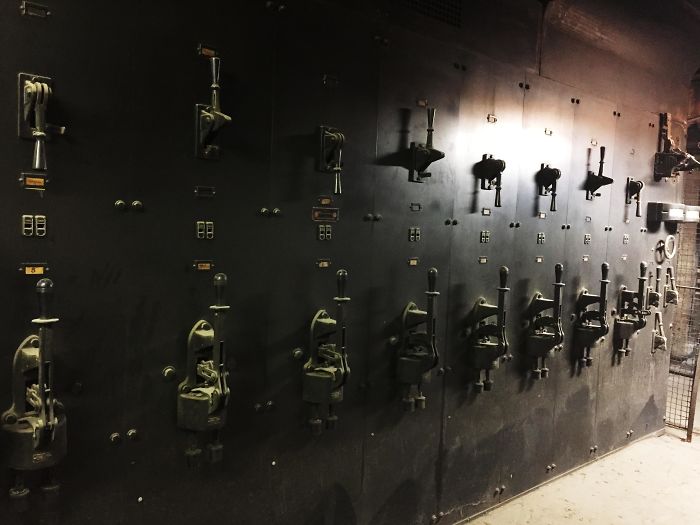
Image credits: Canaris1
#21 Found Some Nice Drawings Under The Wallpaper I’m Removing
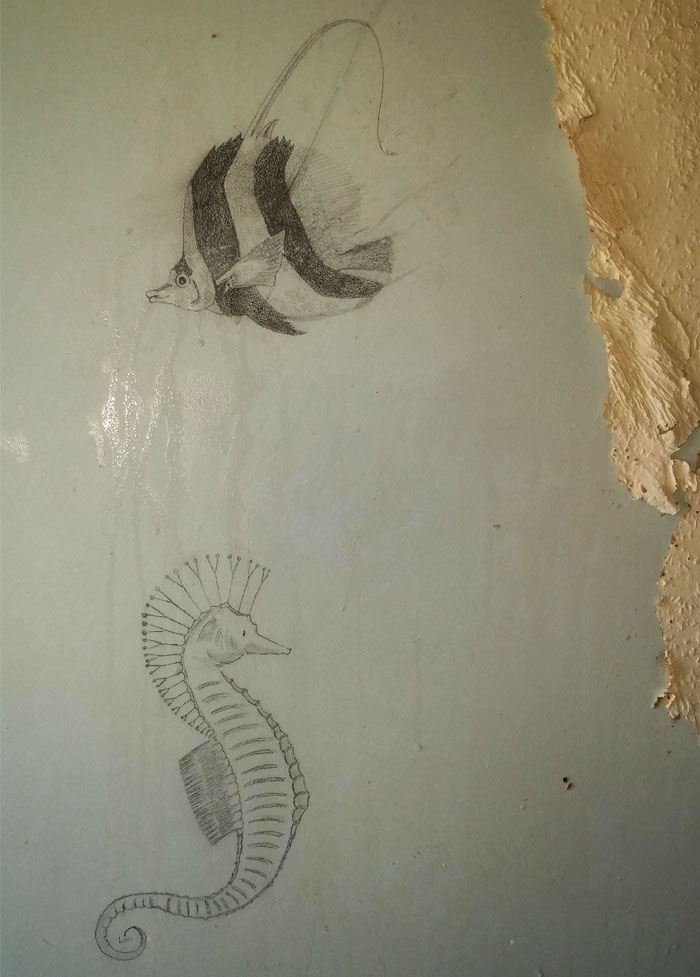
Image credits: Fristiloverke13
Another example is the use of plaster in old homes for walls, which is better than today’s drywall in terms of insulation, soundproofing, fire resistance, and mold resistance.
Today, the common practice is to use cheaper manufactured materials like particle board and drywall to save money.
#22 Uncovered At A Times Square Construction Site
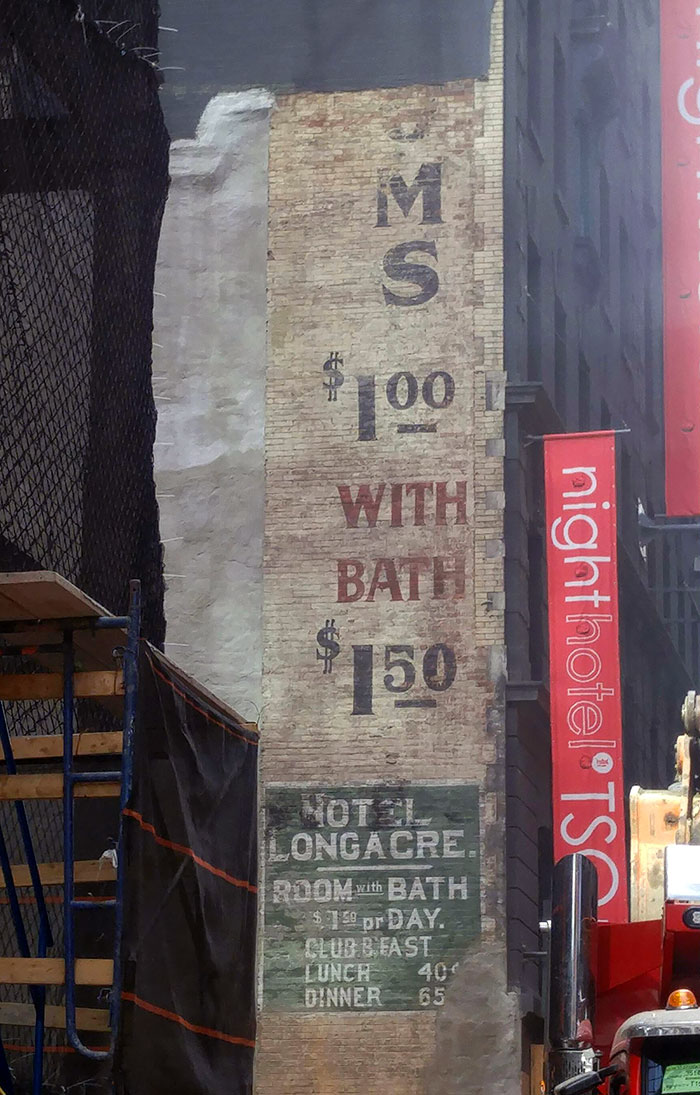
Image credits: elshgi
#23 This Wall Broke Exposing Years Of Layers Of Paint
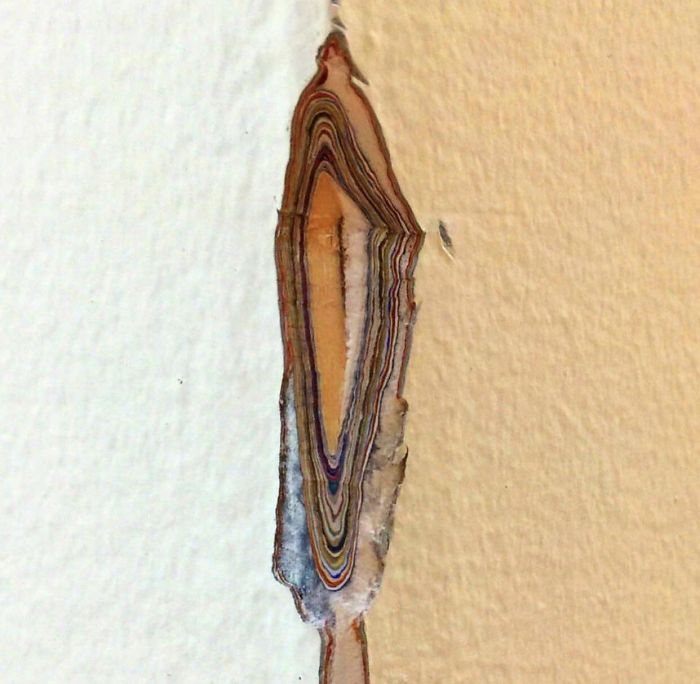
Image credits: Cummiekazi
#24 My House Used To Be A Bank, So We Use The Old Safe/Vault As A Basement
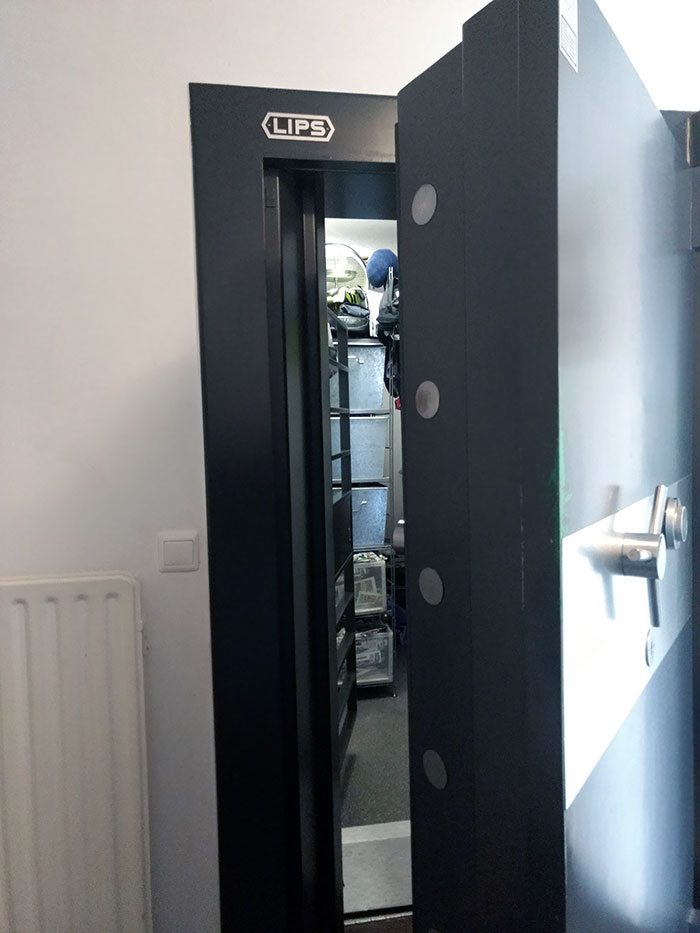
Image credits: Pscel
Additionally, old houses were constructed with a different mindset. They were meant to be repaired, not torn down and replaced. New homes often don’t prioritize the durability of materials. For example, most replacement windows today are made from vinyl, which typically lasts only 20-25 years. On the other hand, well-maintained wood windows in old houses can last over 100 years.
#25 I’ve Been Living In My House And I Just Noticed My Back Door Handle Is A Spoon
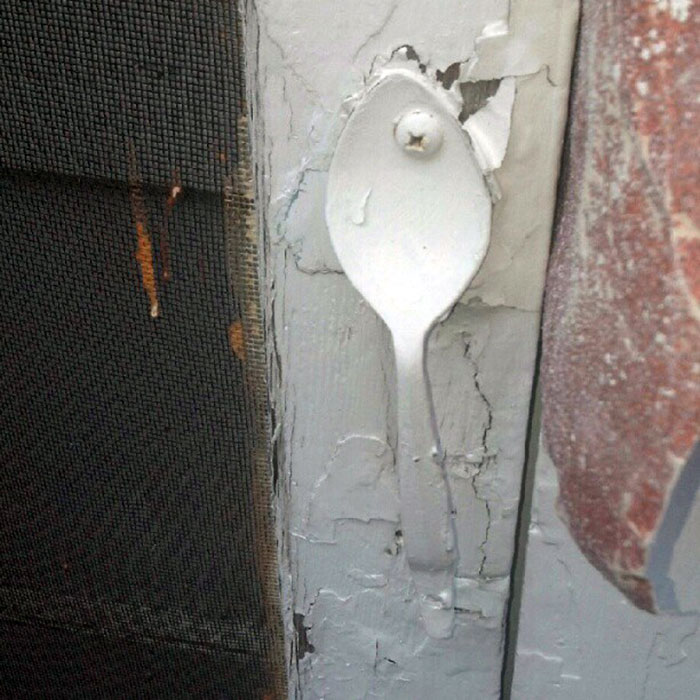
Image credits: Basselopehunter
#26 My House Still Has Old-Fashioned Light Switches From Its Original Construction
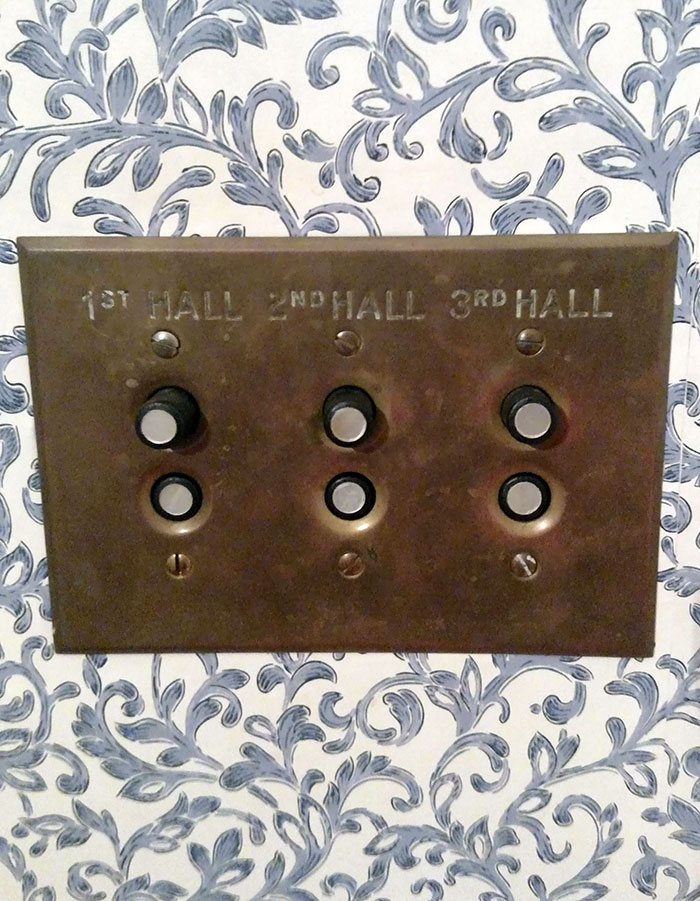
Image credits: NoFairYouCheated
#27 This Headstone Found Under My Garage
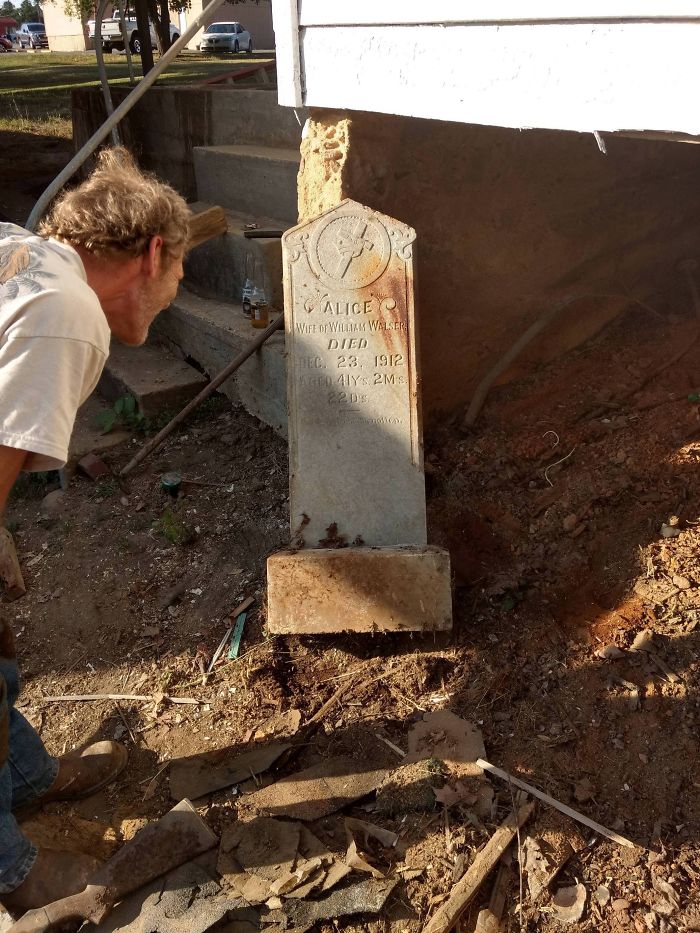
Image credits: Bouncingbatman
#28 Friend Tore Down His Wall For Renovations And Found This Mural On Another Wall Behind It
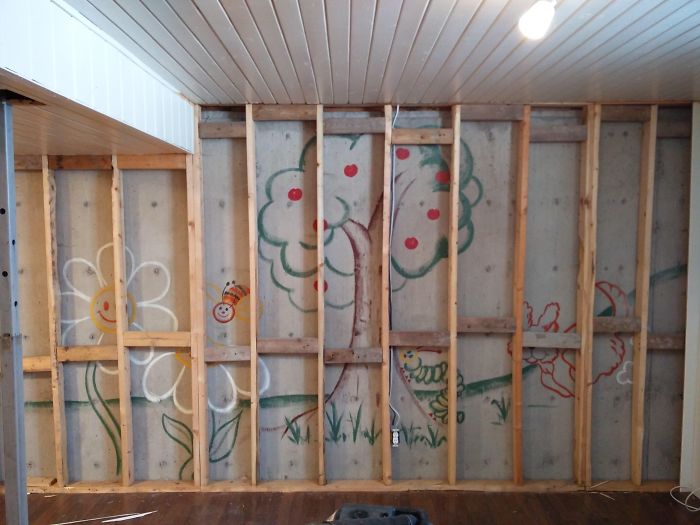
Image credits: Gritzenizer
#29 My Living Room Was Built Around A Huge Sandstone Rock
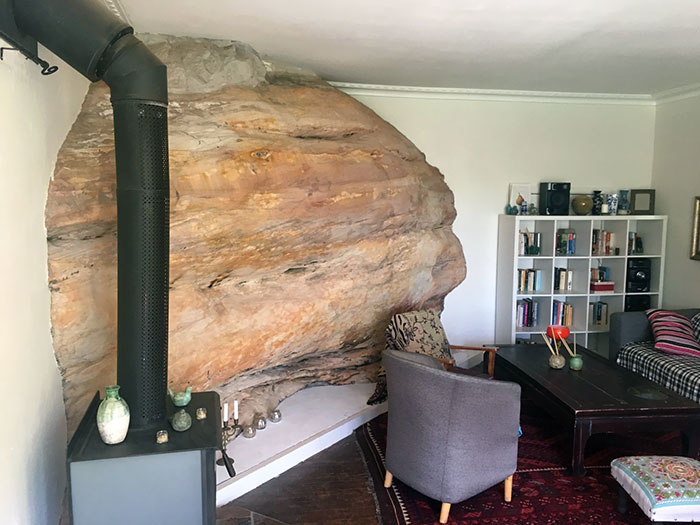
Image credits: Jesse158
#30 The House I’m Staying In Has Kept Its Original Well As A Feature
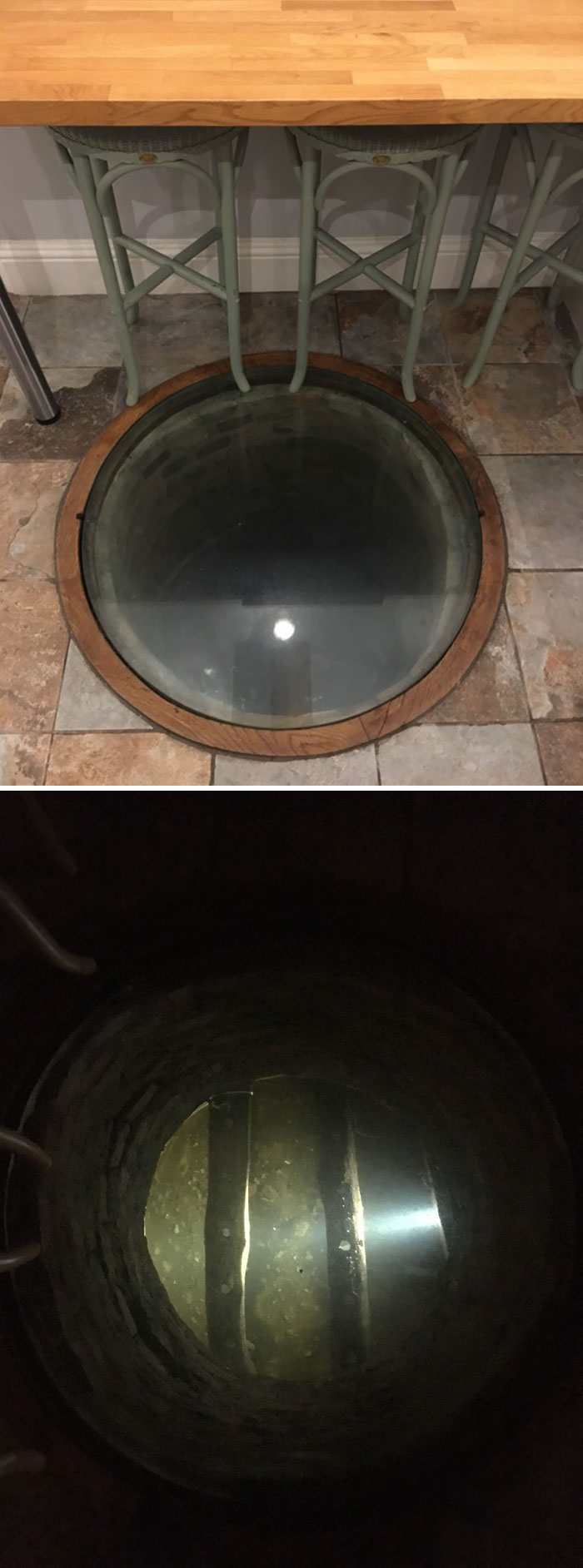
Image credits: Gberry13
#31 Bad**s Old Oscilloscope I Found In My Grandparents Garage
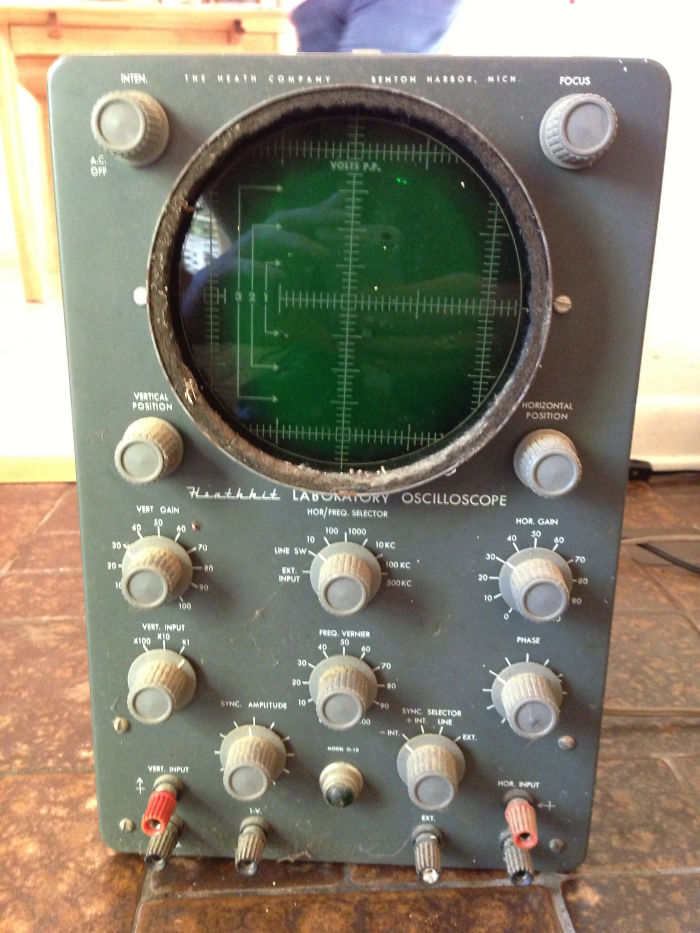
Image credits: bananas2bananas
#32 While Renovating My Basement We Found This Painting On The Cement Behind The Wall
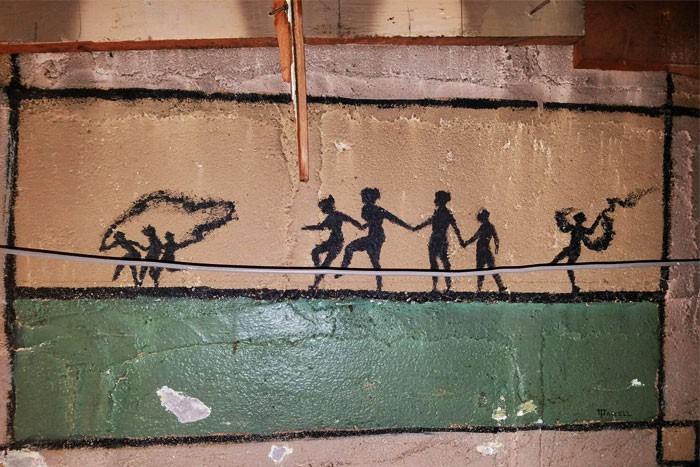
Image credits: J_A_Prufrock5
#33 So I Just Moved Into A New Apartment, And Made A Big Discovery

Image credits: demc7
#34 There’s A Random Chain Embedded In The Wall Of My 1930s-Era Home
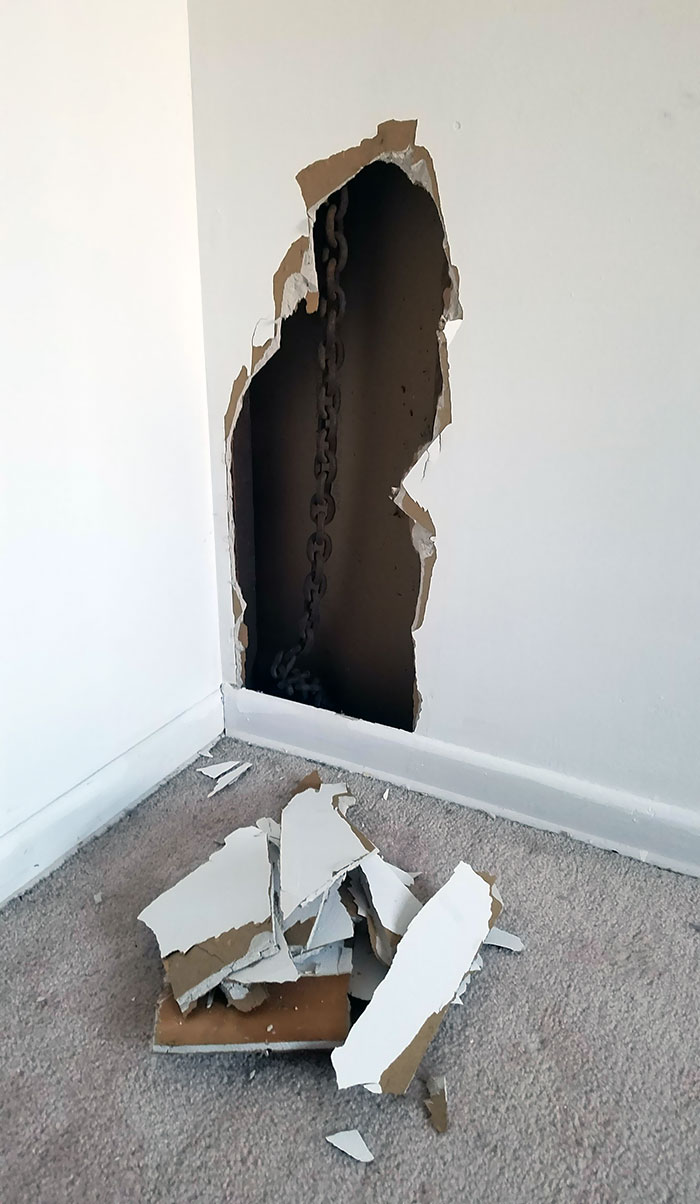
Image credits: WomanOfEld
#35 My Grandmother Found “Rouge” From The 1950s
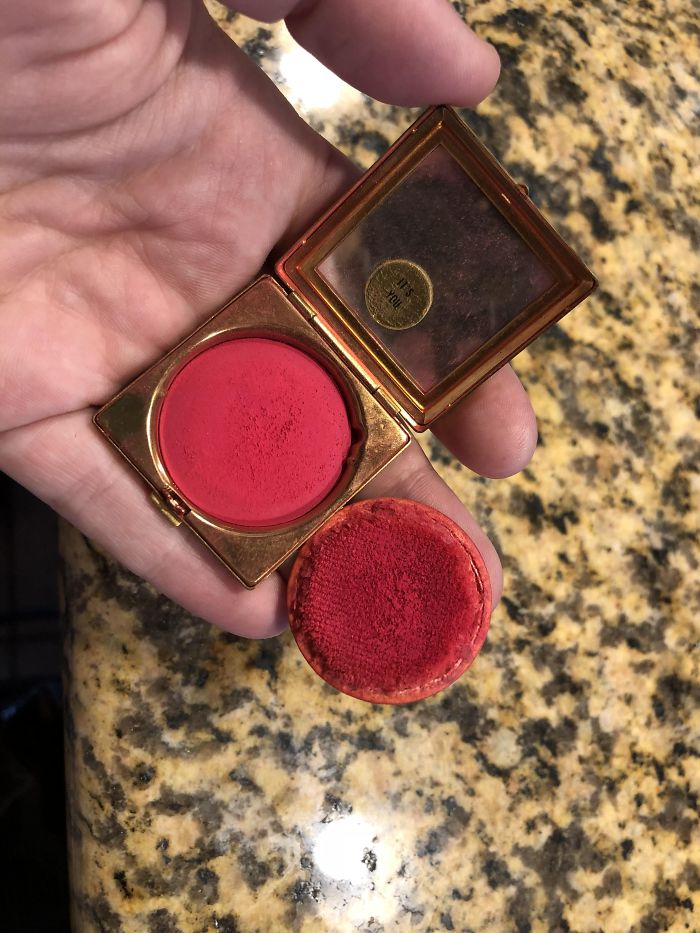
Image credits: annabelleliz
#36 Tore Down The Floor In Our 50-Year-Old House, Found This. I’d Love To Know Who She Was And If She’s Still Alive
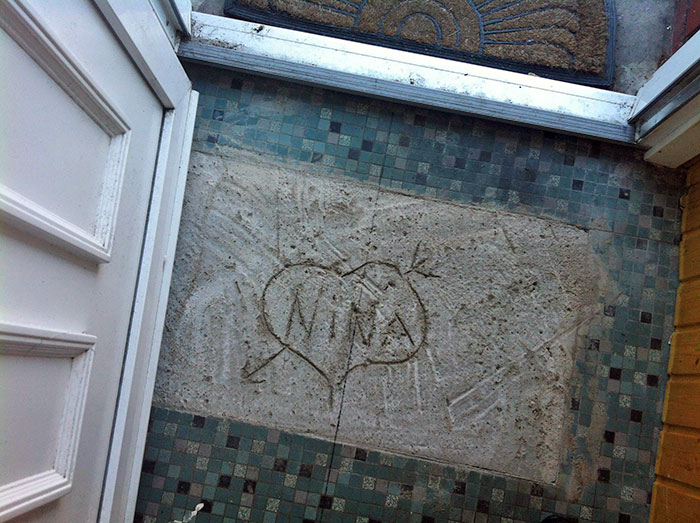
Image credits: tokulix
#37 Apparently, Disposing Of Old Razor Blades Inside Your Wall Was Acceptable In The 1950’s
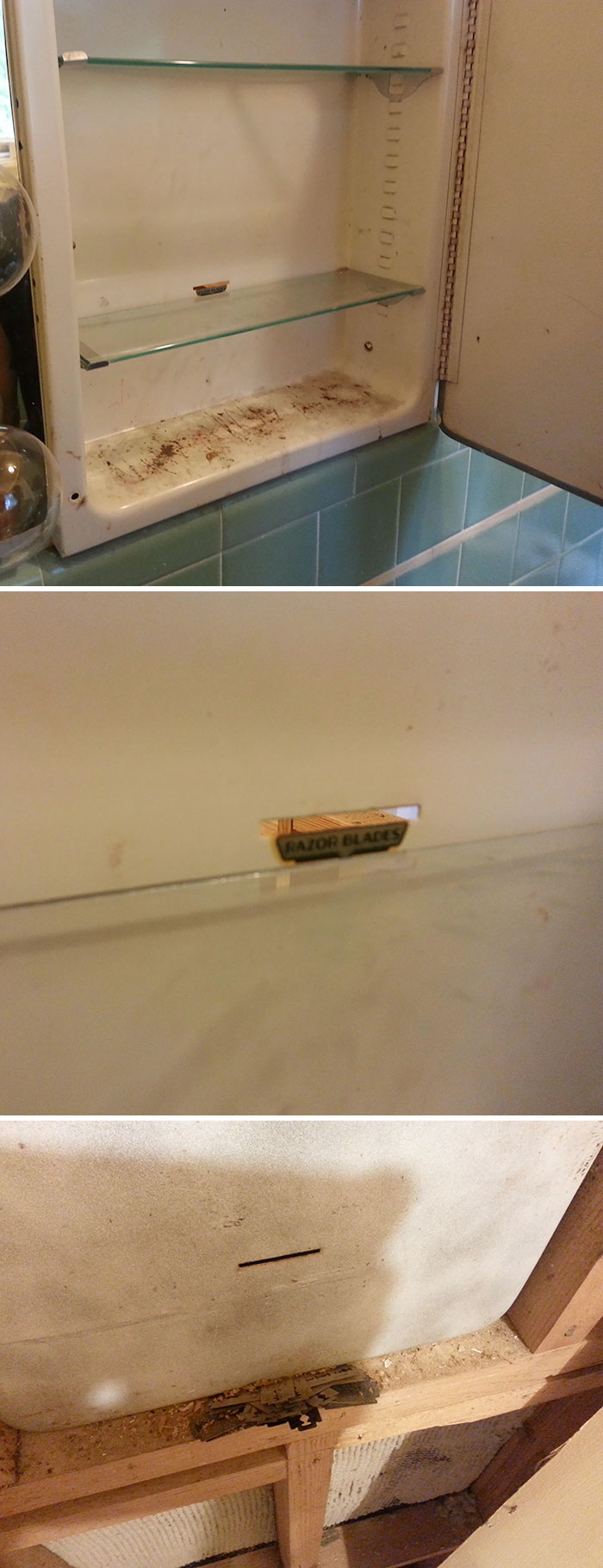
Image credits: usefulthings
#38 Found This 20-Year-Old Promise Hidden Under The Wallpaper In Our New House
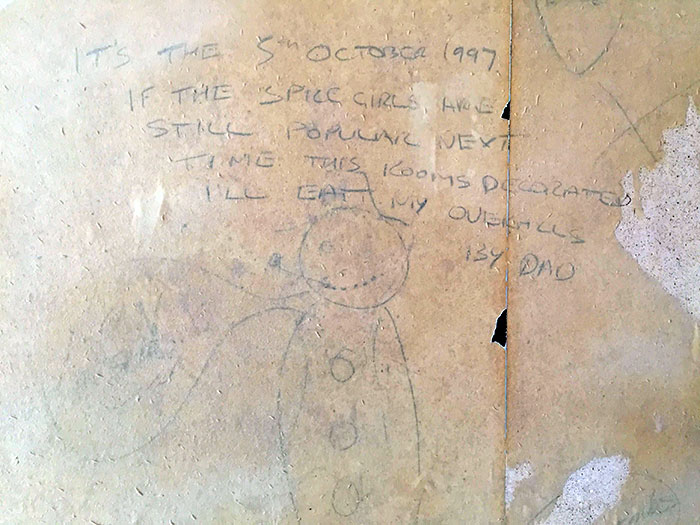
Image credits: AngeB1818
#39 I Recently Moved Into A 70s Dream Home. This Is My Bathtub

Image credits: Miners_Not_Minors
#40 My House Still Has The Original Light Switches
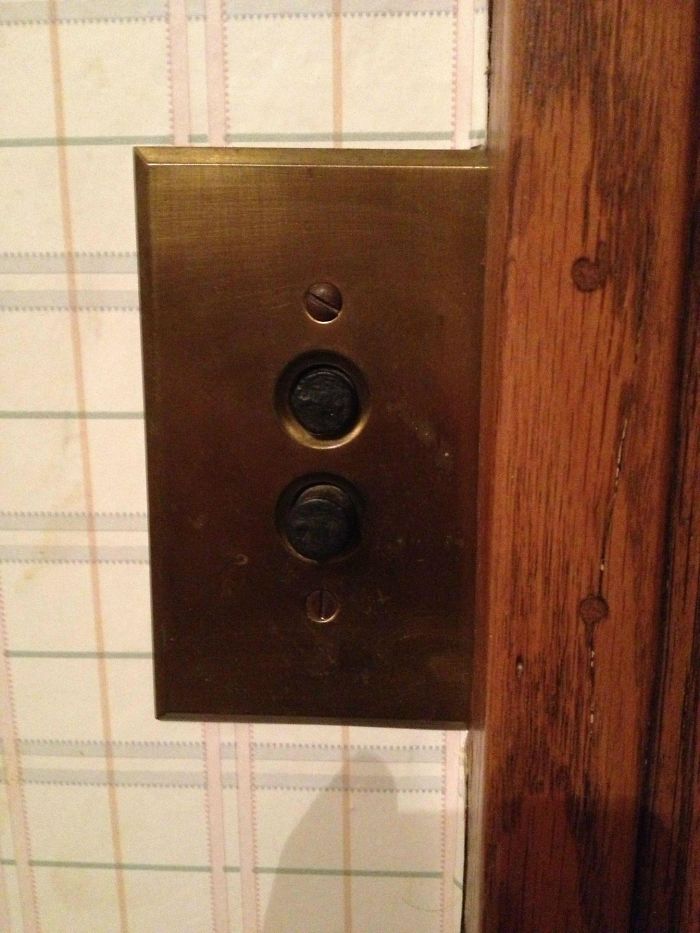
Image credits: tugging_me_softly
50 Important Historical Images That Might Change Your Perspective On Things, As Shared By This Instagram Page
January 7, 2023
Today we’d like for you to take a look at an Instagram account by the name of “The History Atlas”. This page collects interesting and unseen historic images and shares them with its whopping 81K followers on the platform.
In fact, most of these images are rather rare or previously unseen by the public, as they depict people, places, and fascinating events from the past. For some of the images, the page also includes captions and explanations about the images, providing historical context and background information to quench your thirst for knowledge of the human past.
The article also includes an exclusive interview with a Hellenistic period historian Dr Elke Close, so make sure to keep on reading.
With that being said, if you’d love to see images of the old Cincinnati library before it was demolished, the creation of the central line in 1898, and many other things, then scroll down below!
#1 A White And A Black Men Leading A Civil Rights March In The Late 1950s
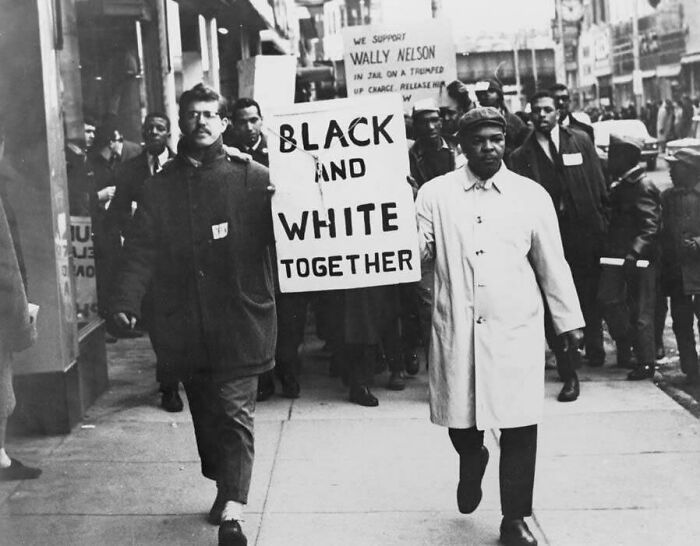
Image credits: historyatlas
To hear some more interesting facts, Bored Panda reached out to Dr Elke Close. Dr Elke Close is a Belgian Classical Languages and History Teacher with a PhD from the University of Edinburgh in the Netherlands who has created her own online education tool related to ancient history, as well as started informative and topic related pages on Instagram and Facebook (@hellenistichistory). She also makes illustrations (@drawingancienthistory on Instagram) inspired by the classical world and is currently working on a colouring book and podcast related to Ancient Greece!
#2 Police Dog On Duty In Side Car. 1930s
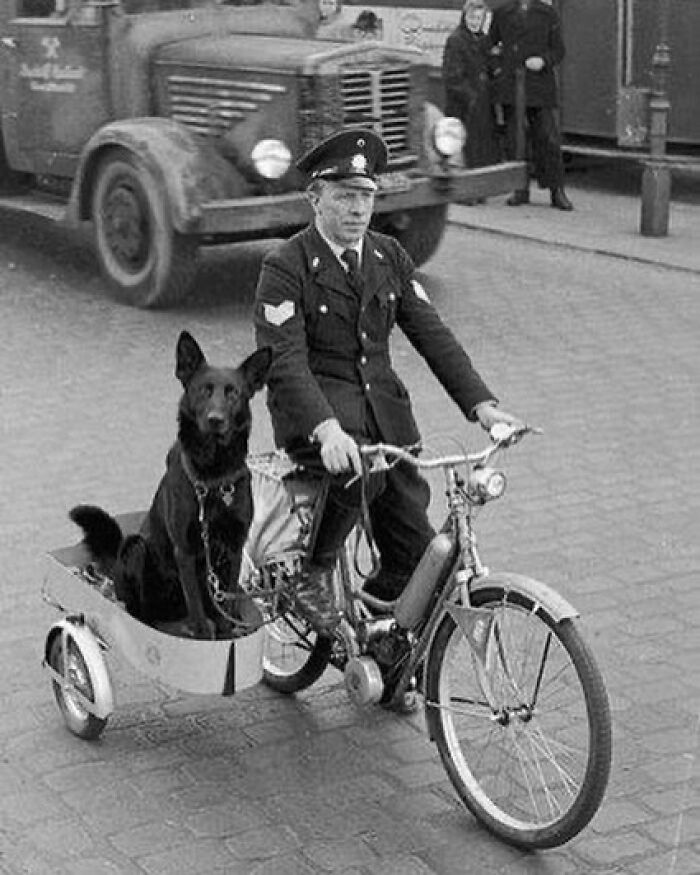
Image credits: historyatlas
#3 The Old Cincinnati Library Before Being Demolished, 1874-1955
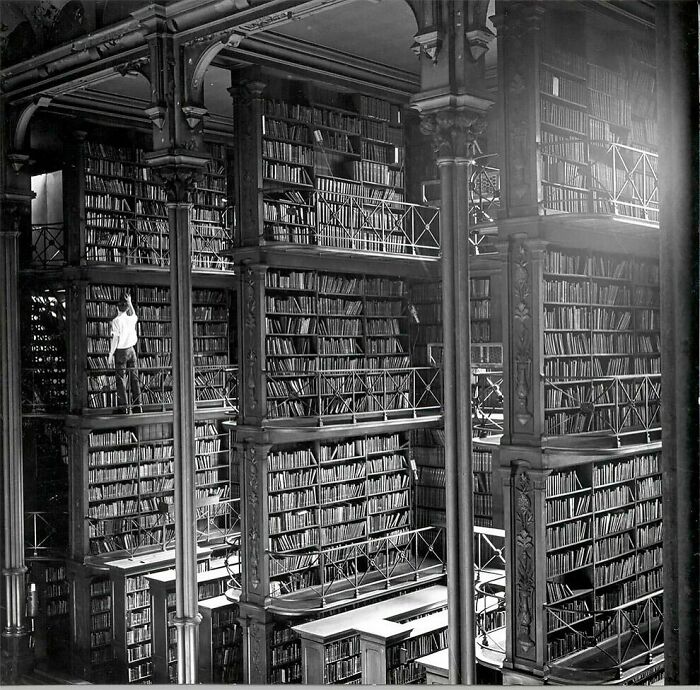
Image credits: historyatlas
You might be wondering what exactly is Hellenistic age, just like Elke did all those years ago. Interestingly enough, the historian became interested in the Hellenistic Age by accident.
“My interest in the Hellenistic Age (i.e. the period of Greek history after the death of Alexander the Great), came about by accident. I had always been interested in Ancient Greece and Rome while in high school, so at University I decided to study Ancient History.
For one of my courses of my bachelor, I had to write about a random revolt that happened to take place during the Hellenistic Age. When I then went on Erasmus to Greece, I had a single course dedicated to the period which was so enthralling that I ended up writing my MA thesis on the Graeco-Roman interactions in the 3rd and 2nd century BC. When I realized that I wanted to pursue a PhD in Classics, needless to say it was going to be about a topic related to Hellenistic History. Now that I’ve finished that project I wanted to keep learning more about the period, as it such a fascinating time period.”
#4 The Soldiers Fed The Polar Bears With Condensed Milk Tins. Soviet Union, 1950
Photo taken during a routine military expedition in Chukchi Peninsula, Soviet Union. It isn’t sure if the Chukchi Peninsula has more people or white bears. The climate is very severe and sometimes weather can be so fierce in winter that the temperature falls 60 C degrees below zero (-76 Fahrenheit).
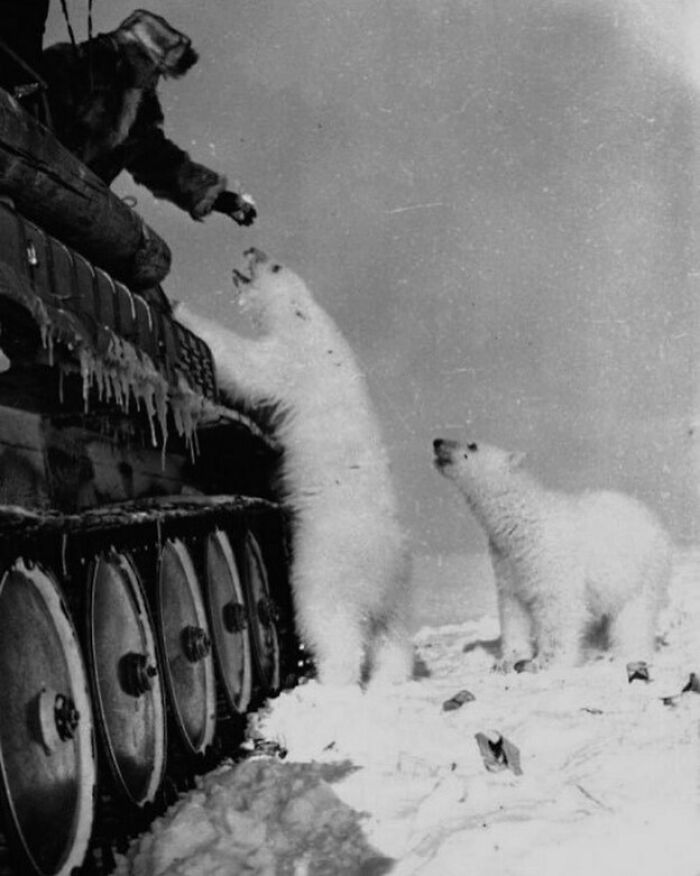
Image credits: historyatlas
#5 Milk Delivery By Dogcart, Studio City, Ca, Circa 1910
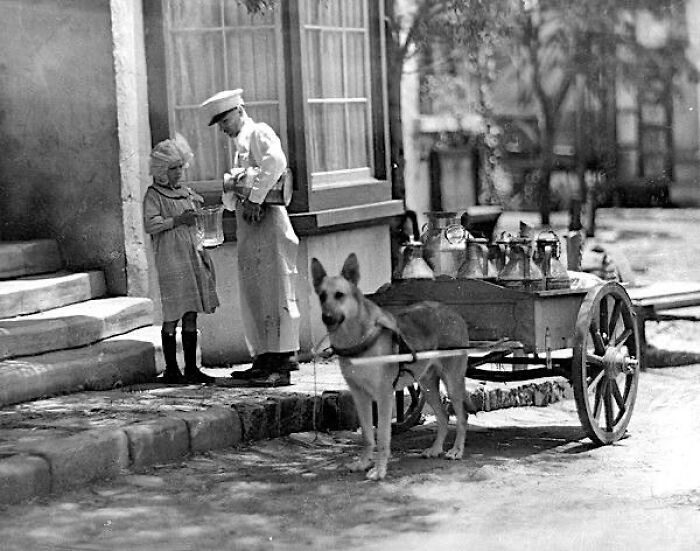
Image credits: historyatlas
A lot of you Pandas may be interested in learning about the key events and developments that took place during the Hellenistic period, so we kindly asked Dr Elke to share some interesting facts with us.
“The Hellenistic period is marked by several events and developments that changed the Ancient World forever. The conquests of Philip V of Macedon and his son Alexander the Great had already changed the Greek world before the start of the Hellenistic period and the death of Alexander the Great in 323 BC without a proper marks the beginning of the Hellenistic period and leads to a series of wars among his successors (the Successor Wars 322 -275 BC) that saw his large empire crumble into the three large Hellenistic Kingdoms: the Ptolemies in Egypt, the Seleucids in the East and the Antigonids in Macedon.” She explained to us.
“From that point onwards, the Hellenistic kingdoms and Rome, for this is also the period in which the Romans turned their interest to the East, become the most important players in the Greek speaking world. The Roman conquest of Macedon in 168 and Greece in 146 BC is the start of a long process in which step by step the Hellenistic world becomes part of the Roman empire. This ends with the defeat of the last of the Hellenistic rulers, the famous Cleopatra VI, at Actium by the soon-to-be-emperor Augustus. Even though the defeat of Cleopatra and Marc Anthony in generally considered to be the end of the period, there is some discussion among scholars for alternative dates such as 146 BC.”
#6 Snowman On A Soviet Scale. Ussr. Late 1960s
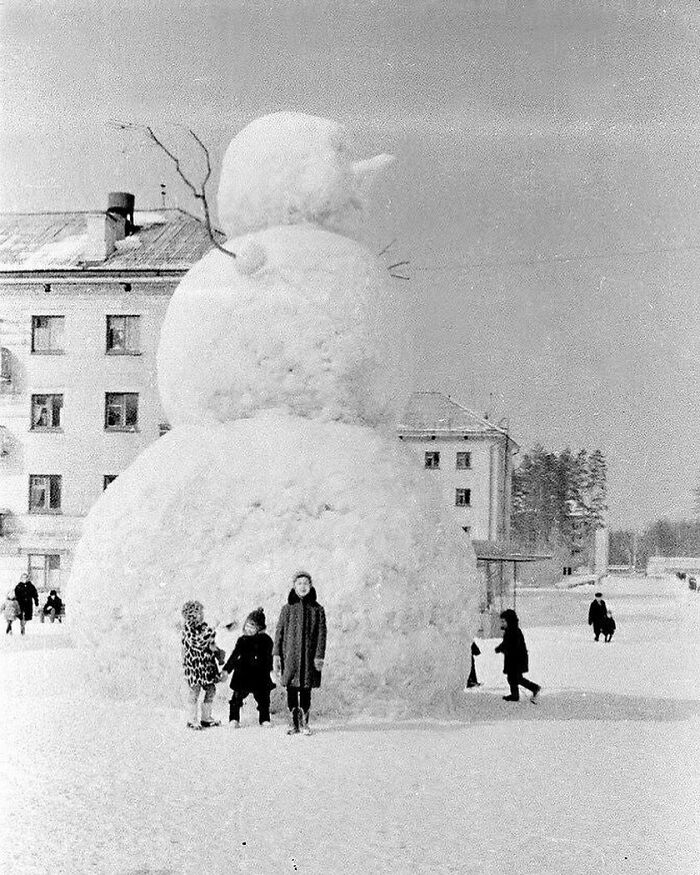
Image credits: historyatlas
#7 In The 1920s And 1930s, Sheep Were Routinely Introduced Into London Parks To Keep The Grass Under Control And Reduce Mowing Costs
Shepherds competed for the privilege of grazing their flocks on Hyde Park, Kensington Gardens, Clapham Common and other pastures around the city. Sheep are like a lawn care multi-tool. As they cut your grass, they also aerate the lawn with their hooves and spread fertilizer in the form of urine and manure. Sheep don’t require gasoline and oil changes, and although they are certainly not maintenance-free, grass-fed sheep are a sustainable alternative to lawn mower.
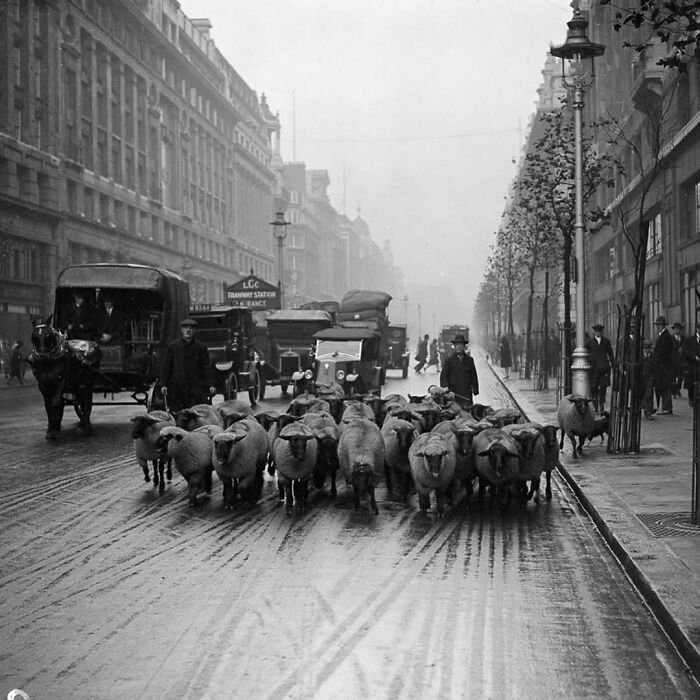
Image credits: historyatlas
Following our previous question, we asked Close to describe how the Hellenistic world differed from the classical world that preceded it. “The Hellenistic World was different form the classical period in several ways. The Greek mainland was no longer the centre of influence, this position had been taken up by new cities such as Alexandria. These new centres of power and learning resulted in progress in science, literature and art which are marked by a new more complex, individual nature. Because of Alexander’s vast expansion of his empire, the ‘Greek’ world had become so much bigger and the interactions between Greek society and the indigenous people created a new and multicultural society and world that was vastly different than that of the 5th century.
Greek culture and language became more widespread than before and the Greek gods were often syncretised with local gods, creating new deities such as Greco-Egyption god Serapis. Even though there were plenty of Greek poleis, the world was now ruled by kings and consuls in stead of the smaller Greek democracies – which does not mean however that they ceased to play a role in the Hellenistic period. If we compare the Hellenistic and Classical world, one can say that the conquests of Alexander created a cosmopolitan, multicultural society which transcended classical Greece.”
#8 Charitable Chinese Man Feeding A Criminal In A Cangue. Ca. 1905
Petty criminals were sentenced to wear the canque, often for a couple of months, and display themselves in public places. At best they were humbled by dependence on others to be fed, at worst, they might starve to death. The sign on the cangue describes the man’s crime.
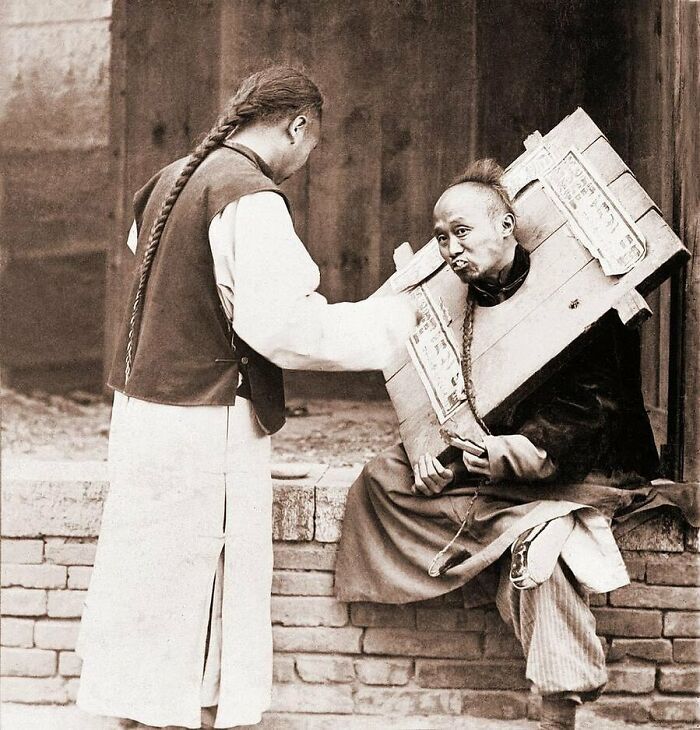
Image credits: historyatlas
#9 Here We See The Creation Of The Central Line In 1898
here are a million fascinating facts and figures about the London Underground, but this rarely seen photograph reminds us just what an engineering feat the construction process was.
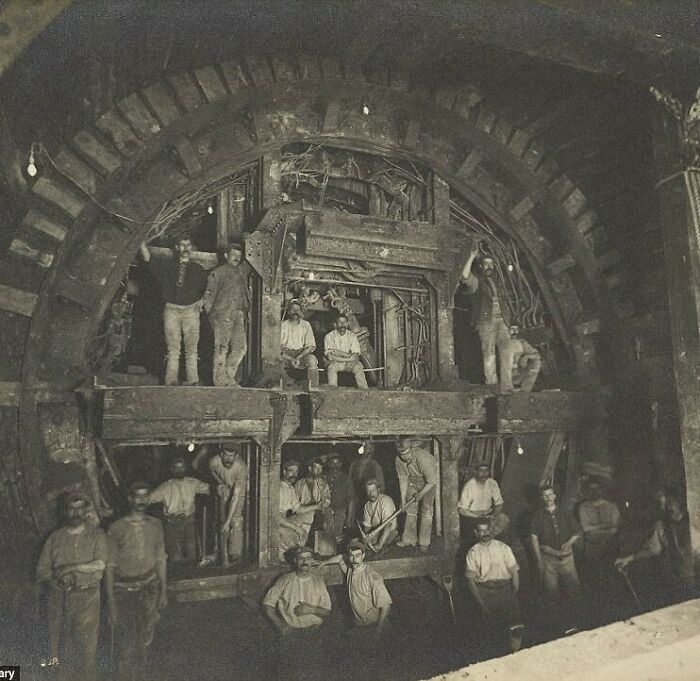
Image credits: historyatlas
Dr Close also opened up about her approach to research and writing about historical events and figures. “This kind of depends on the topic I am planning to write about. If it is something that I am completely new to, I tend to start by compiling some basic information – I am not afraid to say that Wikipedia has been rather useful here.” She told Bored Panda. “Then I start to look at more specialized works such as academic books and articles or blog posts which I combine with different kinds of primary sources such as ancient authors, epigraphic texts or numismatic evidence. Due to the fragmentary nature of a lot of the ancient source material, I have found it to be necessary to combine as much of the material as possible in order to get the full picture.”
#10 Country Store, North Carolina 1939
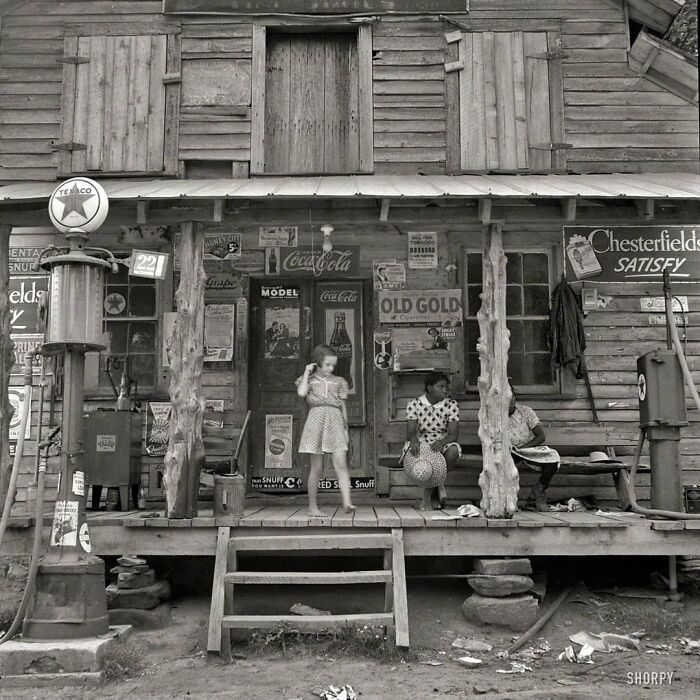
Image credits: historyatlas
#11 Gypsy Children Being Taught To Play The Violin In A Courtyard Of One Of The Poorer Houses. Budapest, Hungary, 1939 By William Vandivert
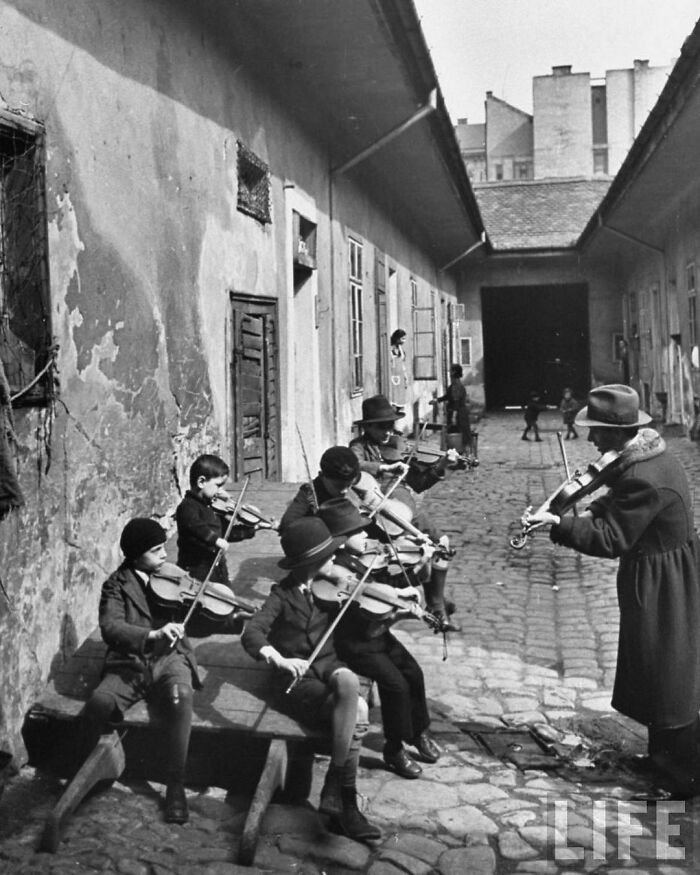
Image credits: historyatlas
When asked about what she found most rewarding about her work as a historian, Dr Elke told us this, “Working as a historian – and a Classical language teacher – allows me to write and talk about topics that personally interest me and share those interest with others. Every day I am able to find out more and more things about the ways people live thousands of years or about the ways in which they organised their lives, and to me that is absolutely amazing. There is nothing better than going on holiday to search for traces of those people among long forgotten ruins.”
#12 Woman Hailing A Cab In New York City, 1956
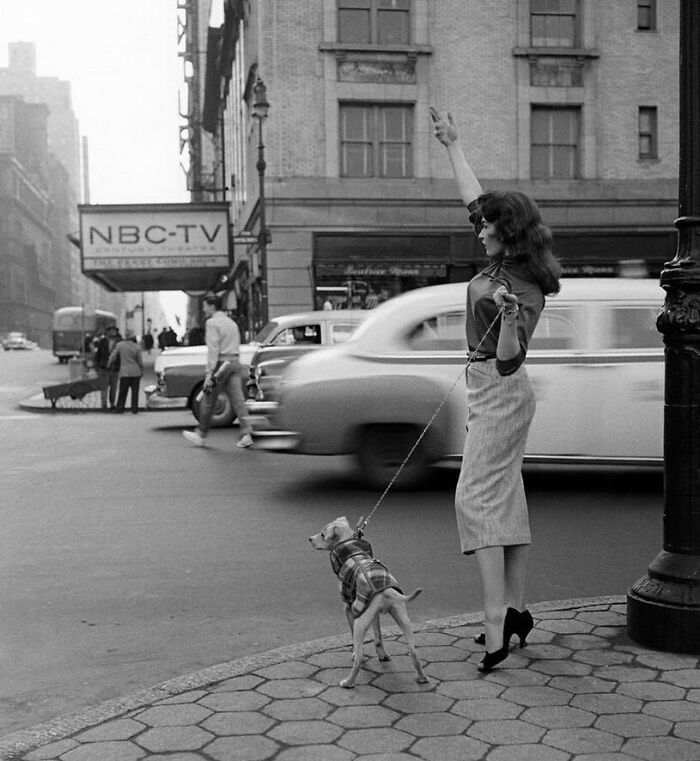
Image credits: historyatlas
#13 Viet Cong Medics Operate On An Injured Cambodian Solider, 1970
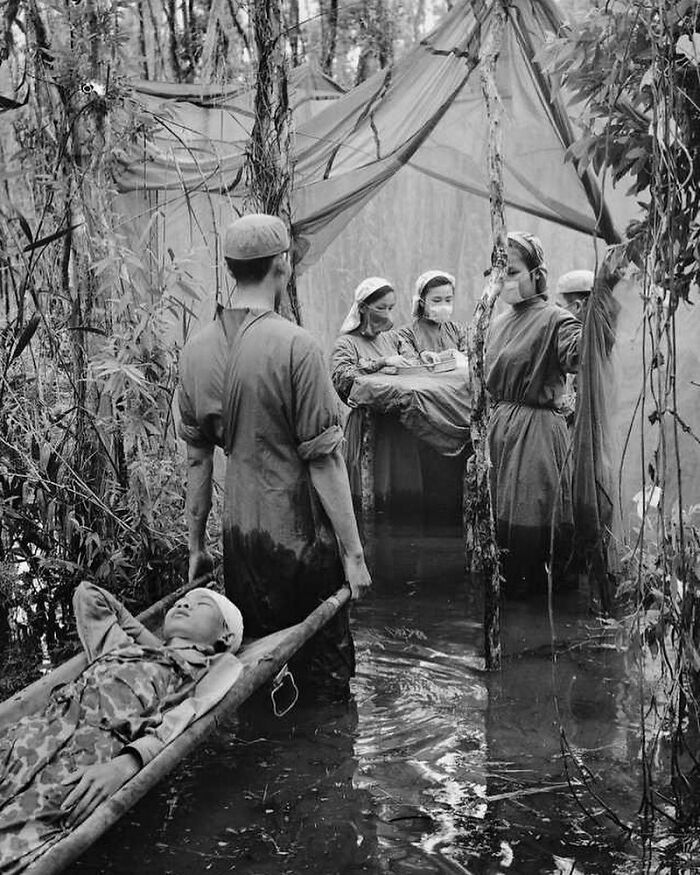
Image credits: historyatlas
The historian also discussed with us how she integrates different perspectives and interpretations of historical events and figures into her work.
“Sometimes it is easy to forget that our historical sources were also made from a certain perspective. While is true for any kind of source, including the less obvious ones such a 19th century photo, I find that when creating a narrative, it can already be enough to give an overview to your readers of the different interpretations that exist in the modern scholarship about a certain event or figure. Of course, this rather depends on what kind of work you have to produce, sometimes you just do not have the room to do so as can be the case with shorter blogs or social media posts.” She said to us.
#14 Finnish Cavalry Training 1930s
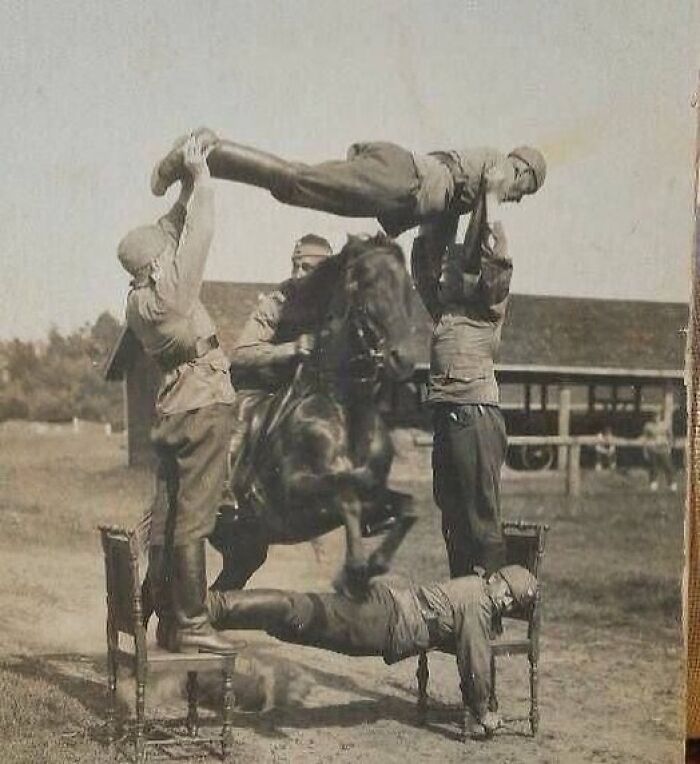
Image credits: historyatlas
#15 People Sleeping On The Crowded Platform Of Elephant And Castle Tube Station While Taking Shelter From German Air Raids During The London Blitz
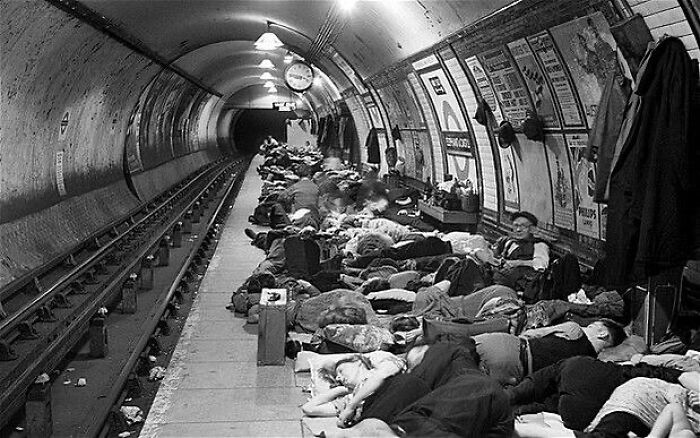
Image credits: historyatlas
The historian also told us how she thinks the study of history can inform our understanding of the present day. “The study of history is a tool for those of us who want to understand how certain things today were shaped by events in the past. It provides us with analytical tools and empowers our critical thinking, so that by looking at what came before, we can more easily understand what kind of patterns lead to certain problems and how can we avoid or solve them. Studying the past is looking at ways in which our society changed over time and how these changes not only had an impact on humanity in general but on us as individuals as well. History is everywhere and if you learn how to interpret it, it can be the greatest tool to understand the present society.” Dr Elke shared with Bored Panda.
#16 An Elevator Parking Lot In New York. C.1920
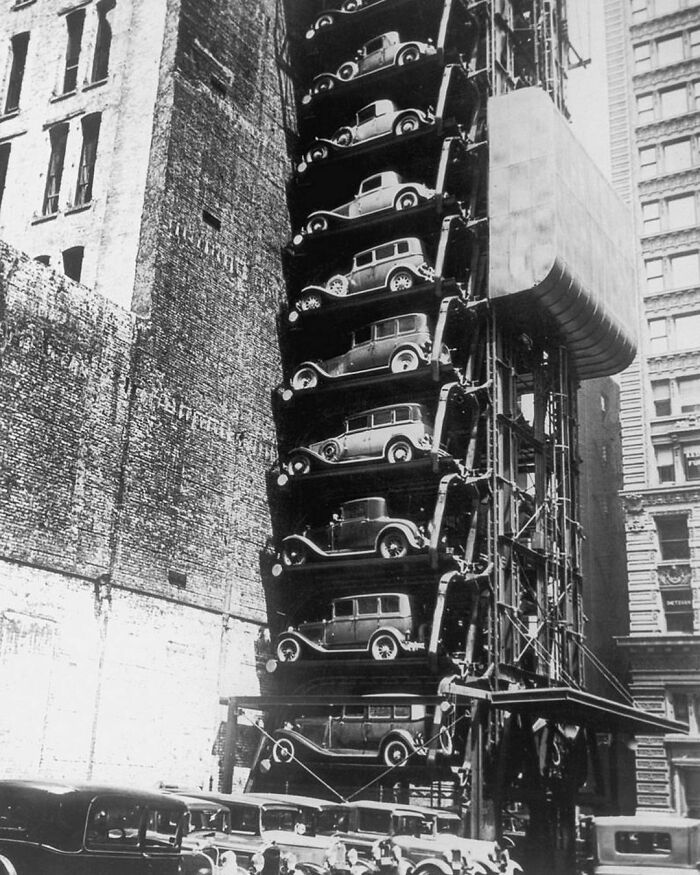
Image credits: historyatlas
#17 High School Teenagers 1947

Image credits: historyatlas
When asked for advice on pursuing a career in the field of history, Dr. Elke Close emphasized the importance of not allowing others to discourage you from pursuing your passion, and to have confidence in your ability to succeed. “Do not let anyone discourage you from pursuing your passion, you just have to know how you want to get started.” She said. “Aside from the traditional careers such as history teacher or university lecturer, there are so many exciting ways in which you can work with history: you can create your own projects, apply for a heritage job, produce books and podcast, become an advisor for historical games… The list is endless. Just be sure to keep on reading and developing your knowledge about your area of interest!”
#18 A Man Standing On The First Cables During The Construction Of The Golden Gate Bridge, With The Presidio And San Francisco In The Background. 1935
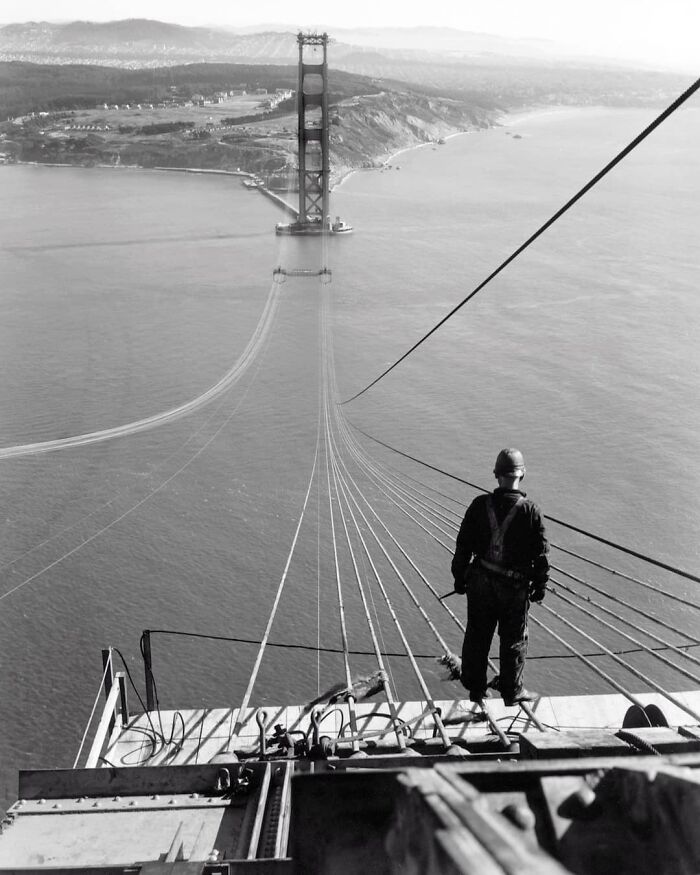
Image credits: historyatlas
#19 Sunday At Coney Island 1949
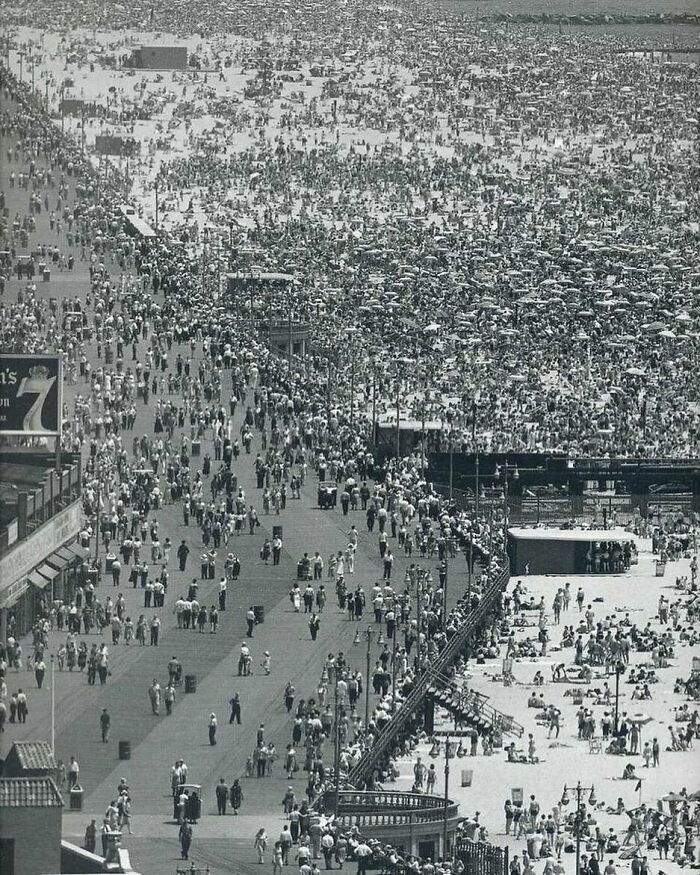
Image credits: historyatlas
Dr Close expressed her excitement about the increasing use of social media and digital tools to make history more accessible and engaging for a wider audience. “I love that there are more and more people using social media and digital tools to tear down the barrier that history has to be boring or is only applicable for a certain group of people. Those stuffy lessons from high school or boring documentaries belong to the past. Why not use games or AI to teach subject in classes or give workshops in museums?” She shared at the end of the interview.
#20 On Oct. 22, 1895, The Express Train From Granville To Paris
On Oct. 22, 1895, the express train from Granville to Paris was running late.
Hoping to arrive on time, the driver increased the speed of the steam locomotive, which was carrying 131 passengers.
As it entered the Montparnasse terminal, the train was traveling approximately 25 to 37 miles per hour.
The air brake either failed or was applied too late, and the conductor was too preoccupied with paperwork to throw the hand brake in time. The train crashed through the buffers at the end of the track, crossed the 100-foot concourse and burst through the wall of the station, tumbling onto the street below.
A woman on the sidewalk who was minding her husband’s newsstand was killed by falling masonry. Five people on board the train were injured.
For four days, the train stood intact outside the station, drawing crowds of curious onlookers.
The driver was fined 50 francs.
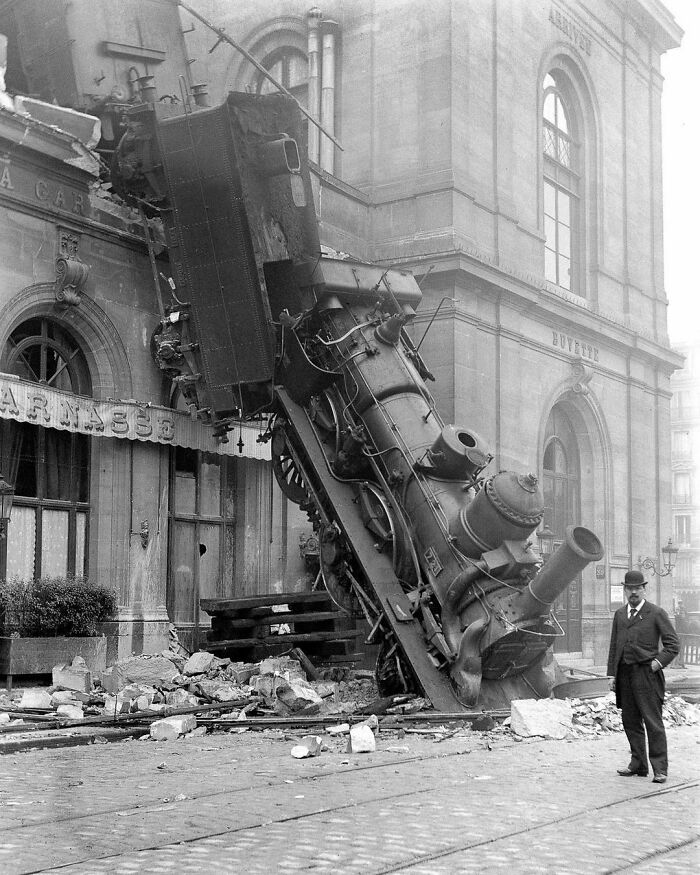
Image credits: historyatlas
#21 Moving A House Using Horses. San Francisco, 1908
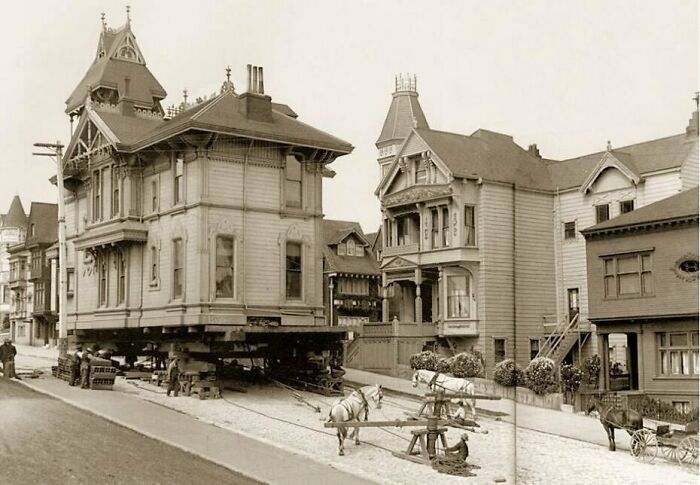
Image credits: historyatlas
We hope you found our exclusive interview with the renowned hellenistic period historian, Dr Elke Close, to be informative and enjoyable. We also hope that the accompanying article provided a deeper understanding and appreciation of the fascinating topic of history that surrounds our world. Thank you for joining us for this engaging and educational discussion, dear Pandas!
#22 A Lot Of People Think That Hemp Is Some New Trend, Truth Is It Dates Back As Early As The 1800’s
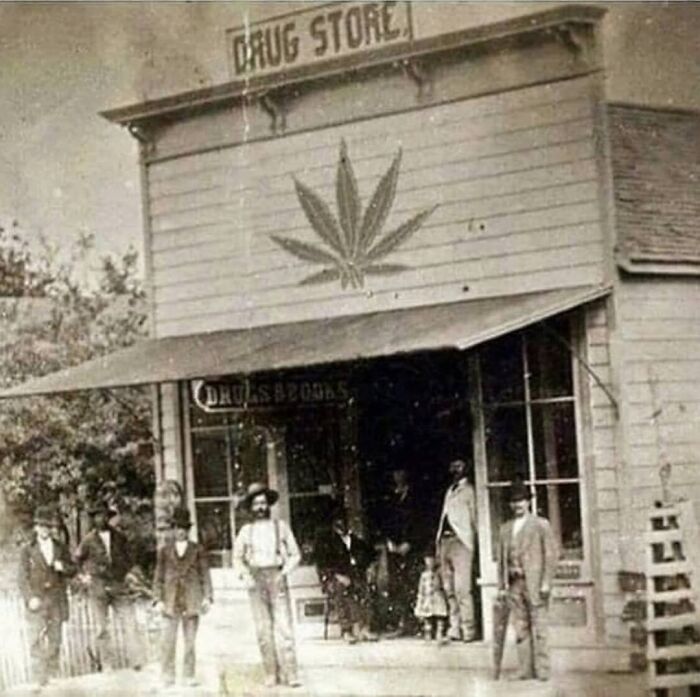
Image credits: historyatlas
#23 Police Officer Guarding A Pharmacy In High-Flood Waters, Ontario, 1974
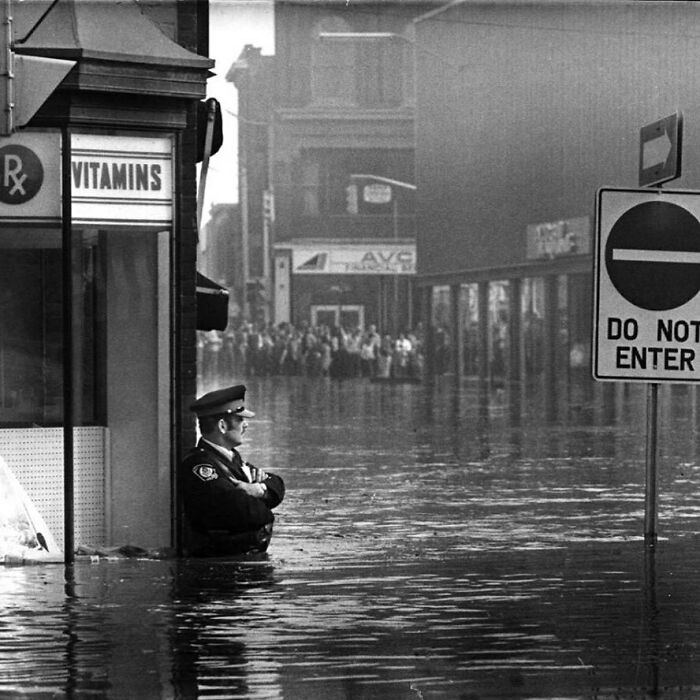
Image credits: historyatlas
#24 Kids Playing In A Fire Hydrant In NYC In The Summer Of 1954
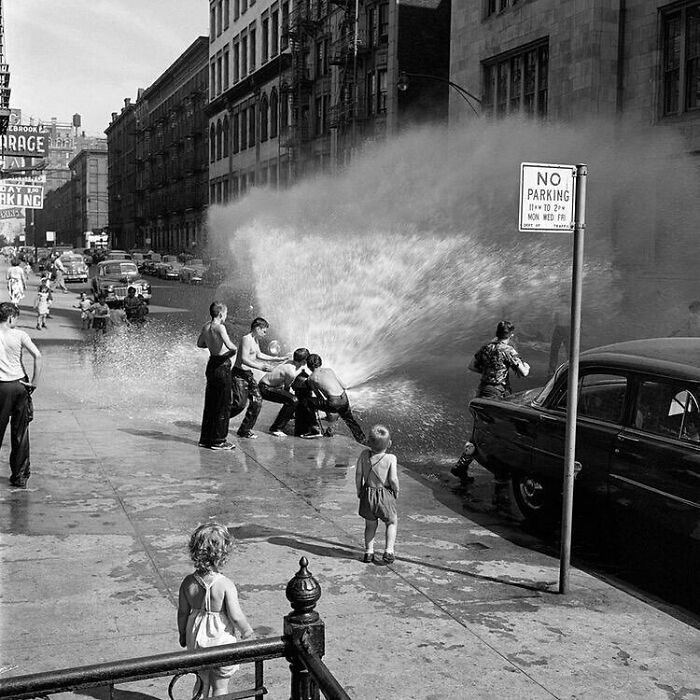
Image credits: historyatlas
#25 This Is Believed To Be The Earliest Photograph Of NYC. Taken At Broadway Between Franklin And Leonard Streets, May 1850
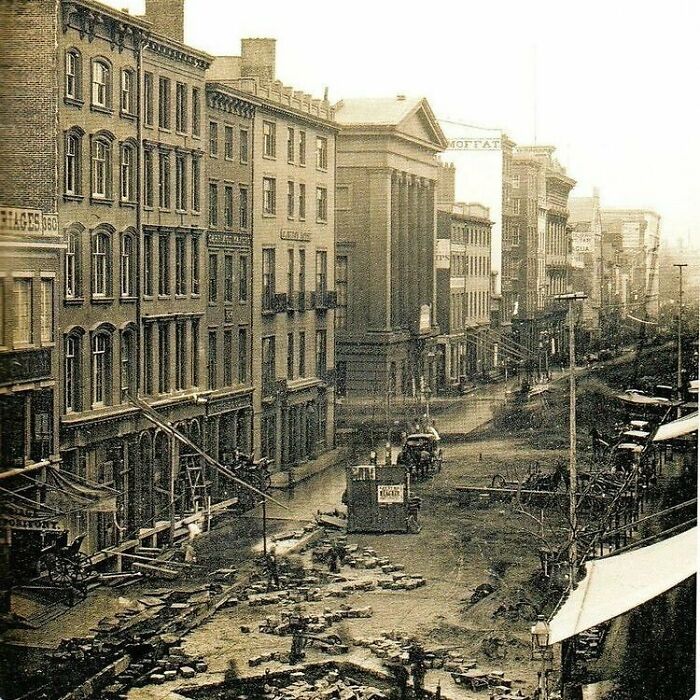
Image credits: historyatlas
#26 A New York Construction Worker Walks Along A Girder High Above The City Streets, Circa 1950
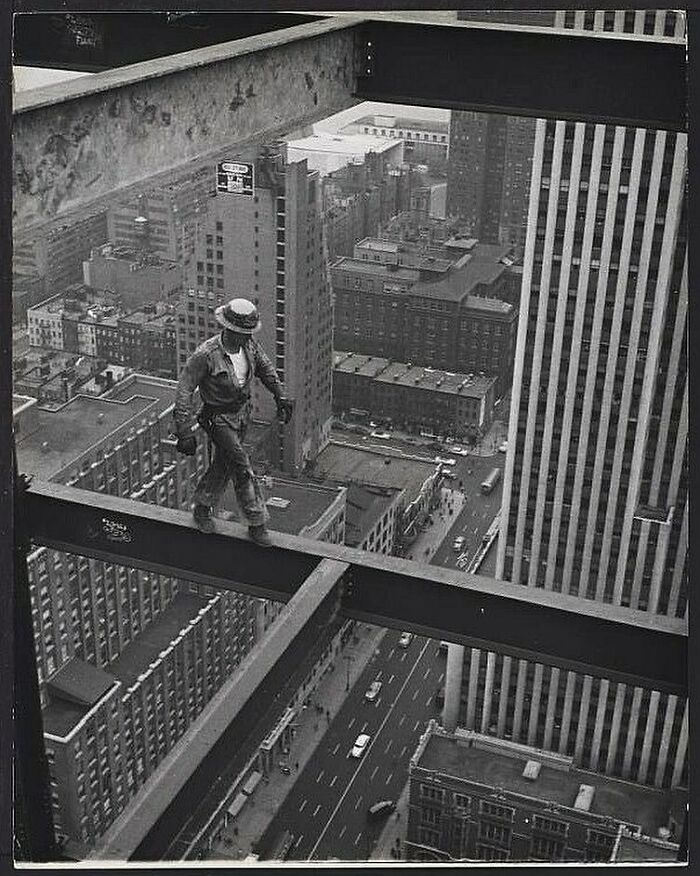
Image credits: historyatlas
#27 Boys Sidewalk Sledding On Steep San Francisco Hill Street, 1952
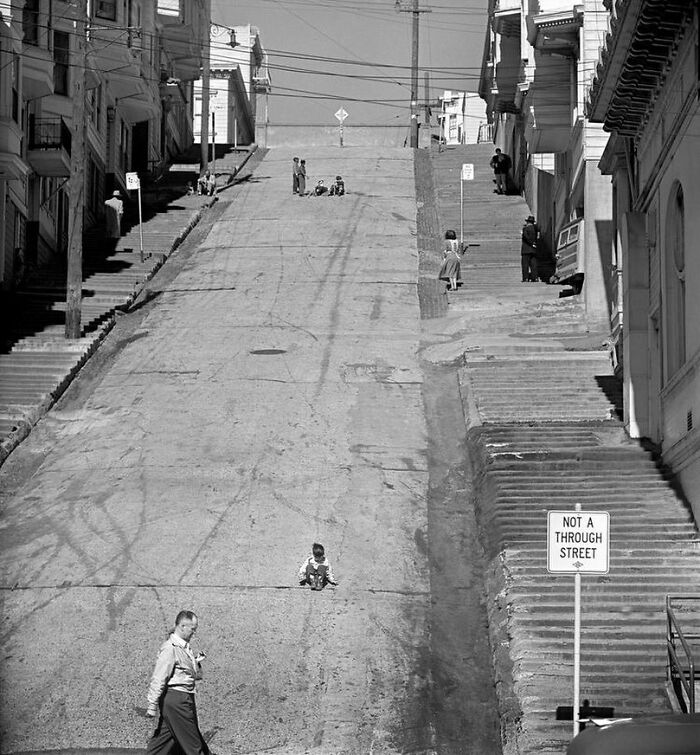
Image credits: historyatlas
#28 Couples Dancing In The Grand Foyer Of The Paris Opera House At A Victory Ball
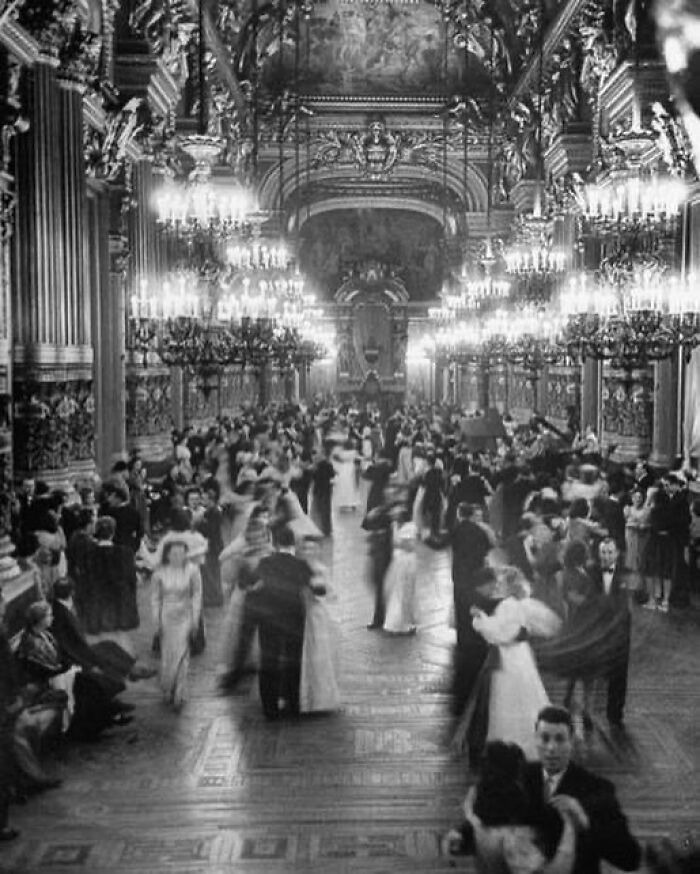
Image credits: historyatlas
#29 Three Boys Are Fishing For Change During The Great Depression, New York, 1930
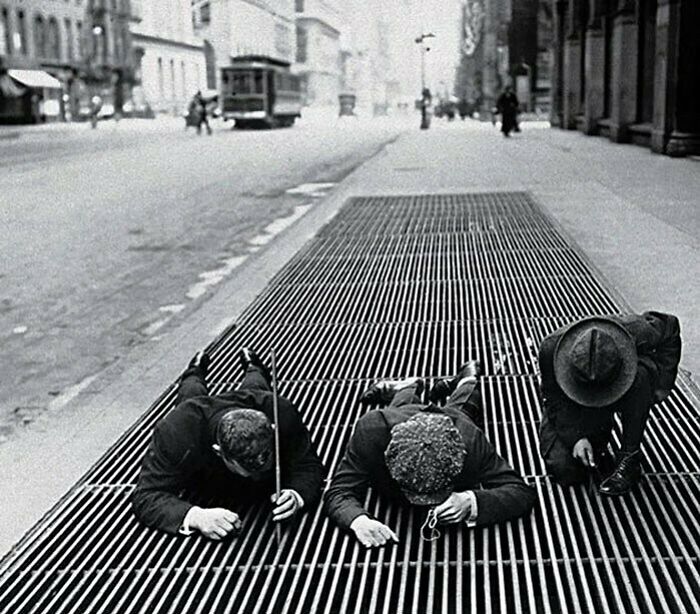
Image credits: historyatlas
#30 The Barge “Marine Angel” Negotiates A Turn Through The Upraised Michigan Ave. Bridge, Chicago, 1953
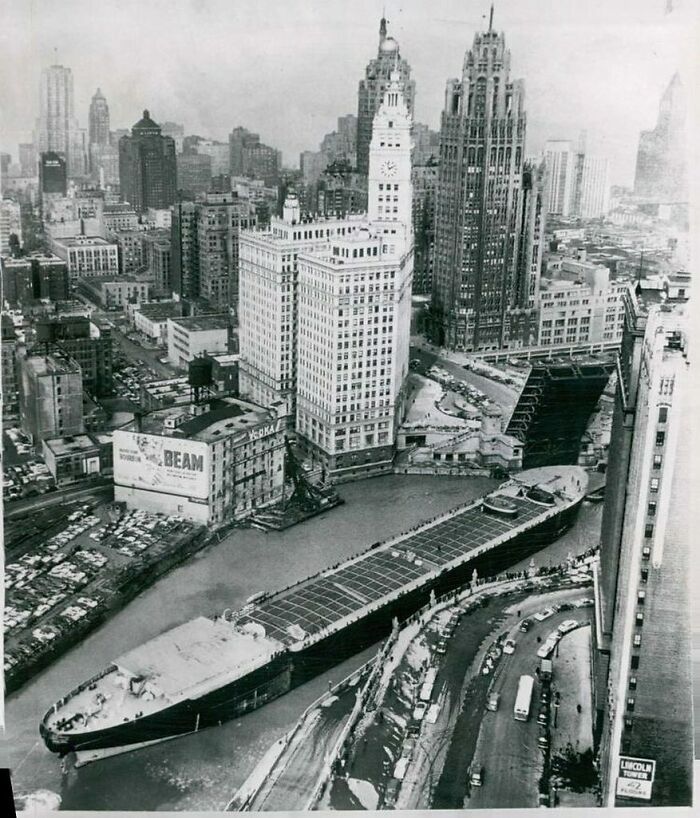
Image credits: historyatlas
#31 Kids Playing On The Lower East Side, New York, 1963
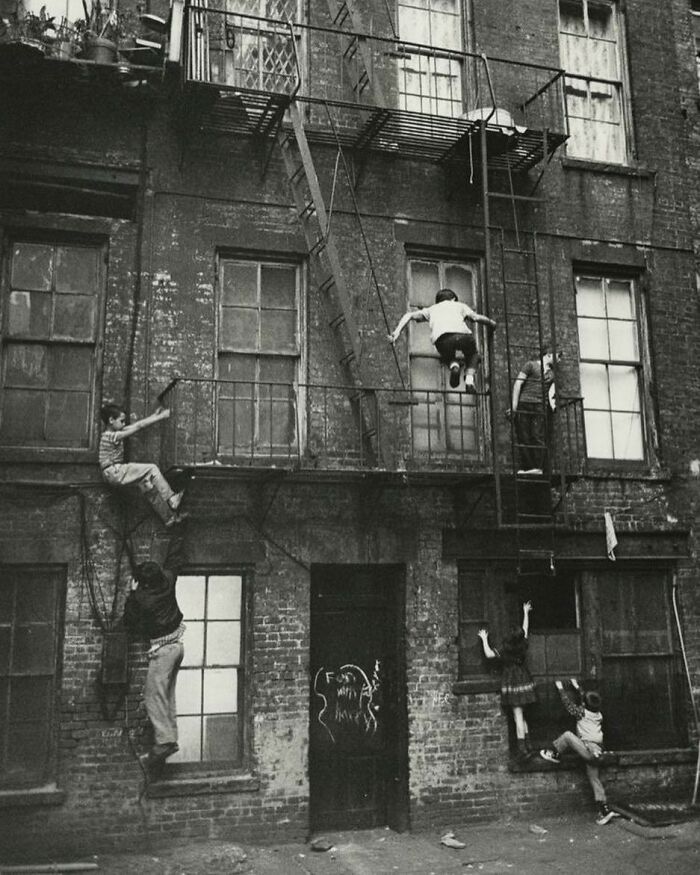
Image credits: historyatlas
#32 Daytona Beach 1903
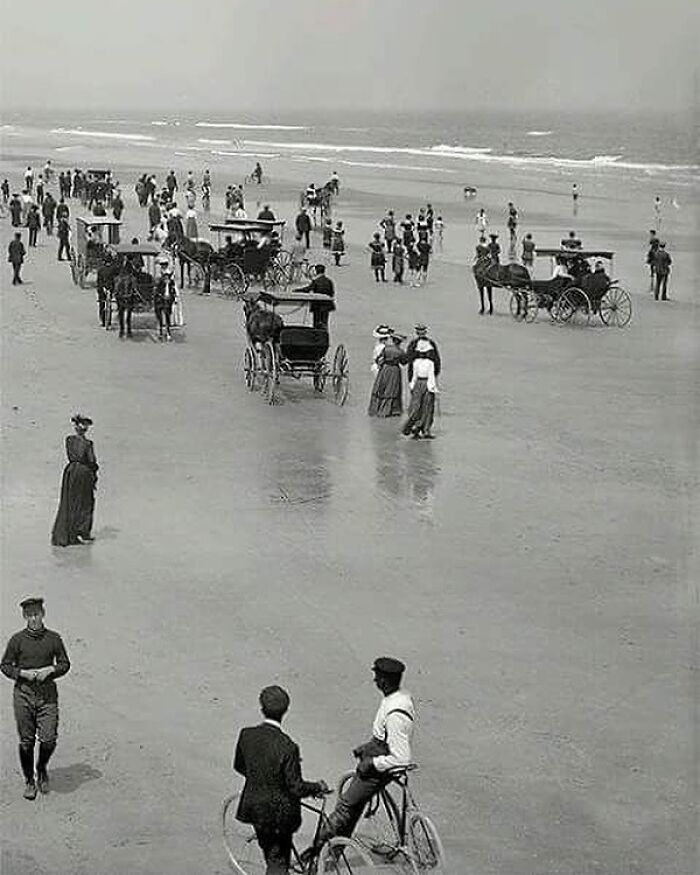
Image credits: historyatlas
#33 San Francisco’s Golden Gate Bridge
A stunning technological and artistic achievement, opens to the public after five years of construction. On opening day–“Pedestrian Day”–some 200,000 bridge walkers marveled at the 4,200-foot-long suspension bridge, which spans the Golden Gate Strait at the entrance to San Francisco Bay and connects San Francisco and Marin County. On May 28, the Golden Gate Bridge opened to vehicular traffic.
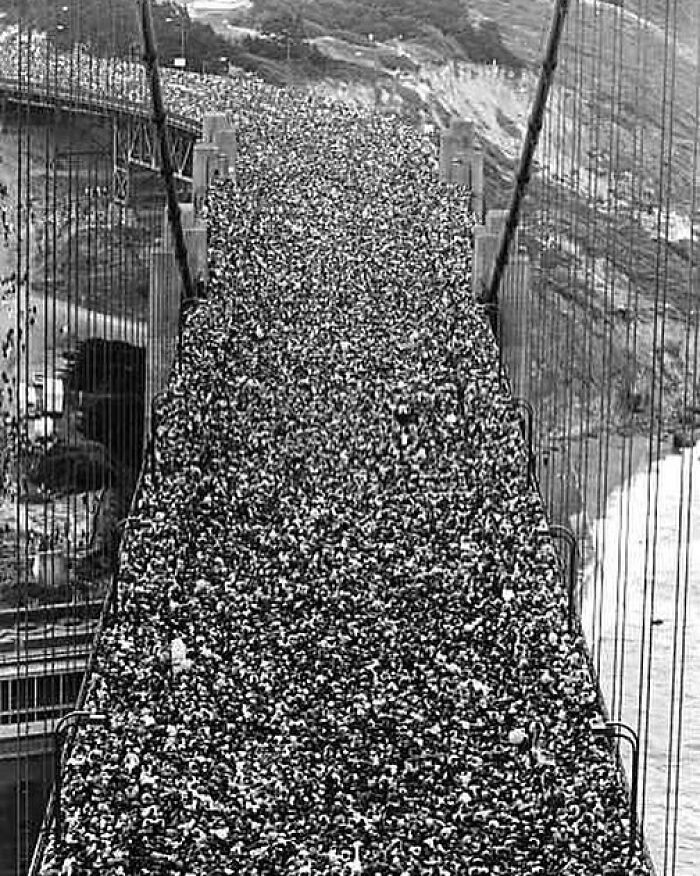
Image credits: historyatlas
#34 Delta Delta Delta Sorority Sisters, University Of Texas, Austin, 1944
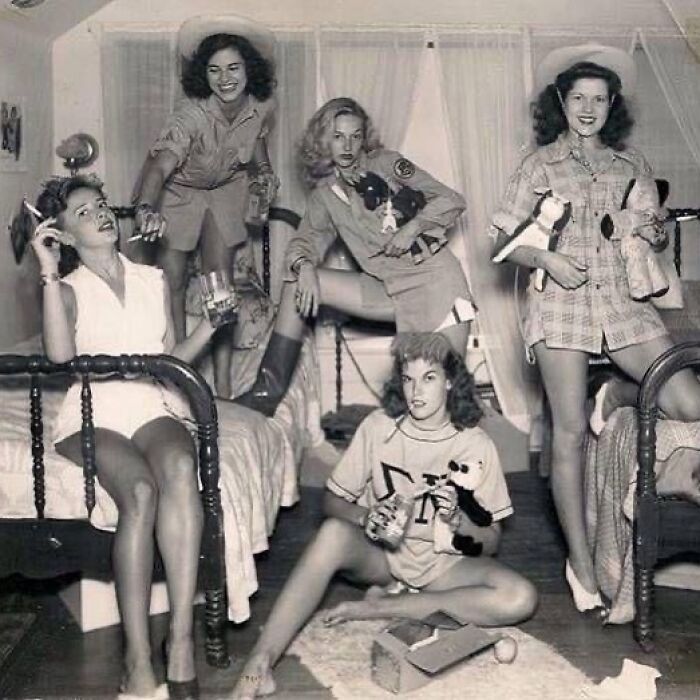
Image credits: historyatlas
#35 Man Standing In The Lumberyard Of Seattle Cedar Lumber Manufacturing, 1939
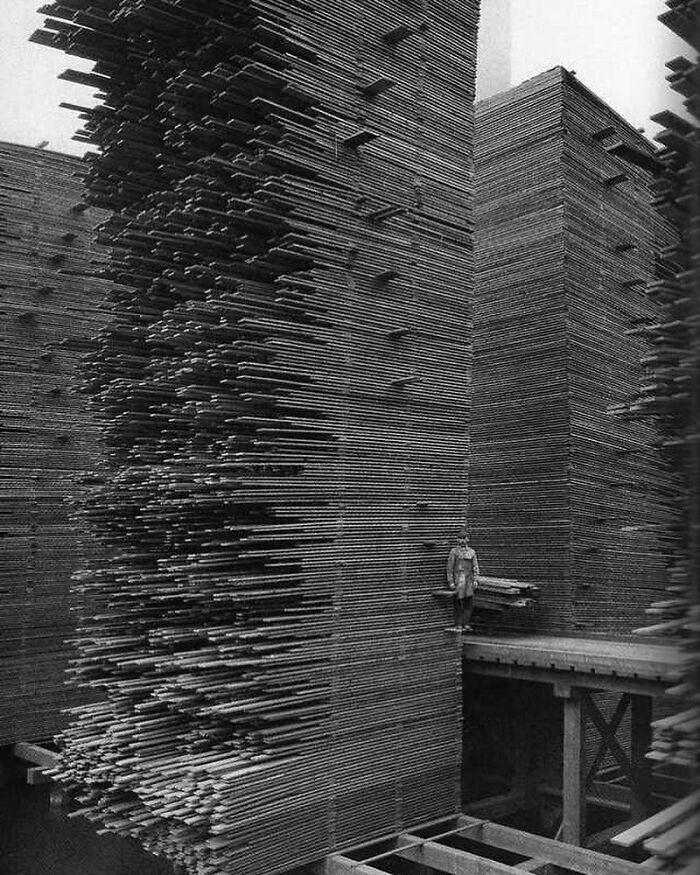
Image credits: historyatlas
#36 The Beatles’ Rooftop Concert In 1969
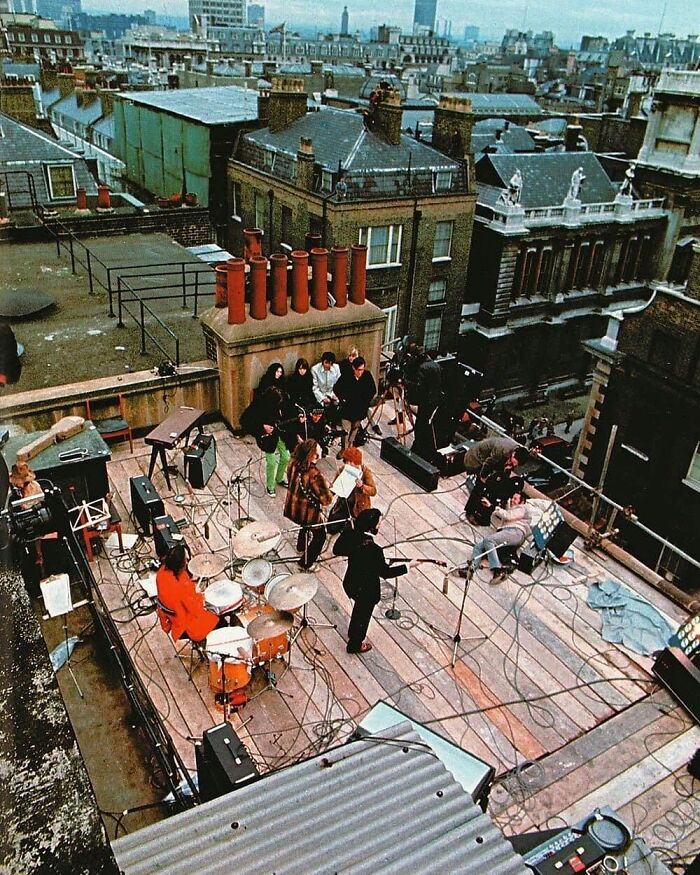
Image credits: historyatlas
#37 The Grand Prix In Monaco, 1937
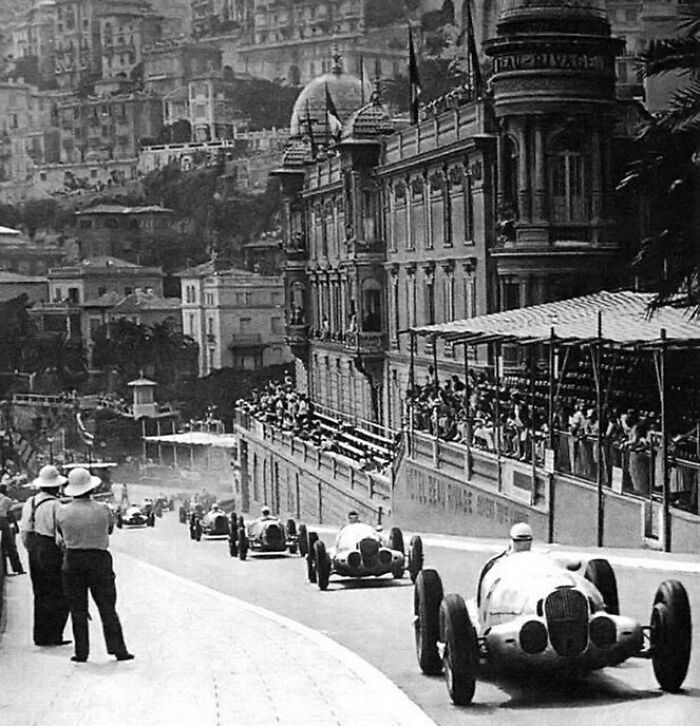
Image credits: historyatlas
#38 Drive-In Theatre. Chicago 1951
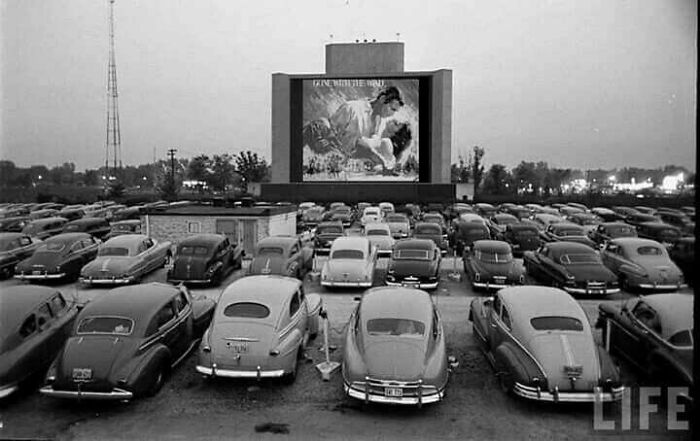
Image credits: historyatlas
#39 R.m.s. Mauretania 1909
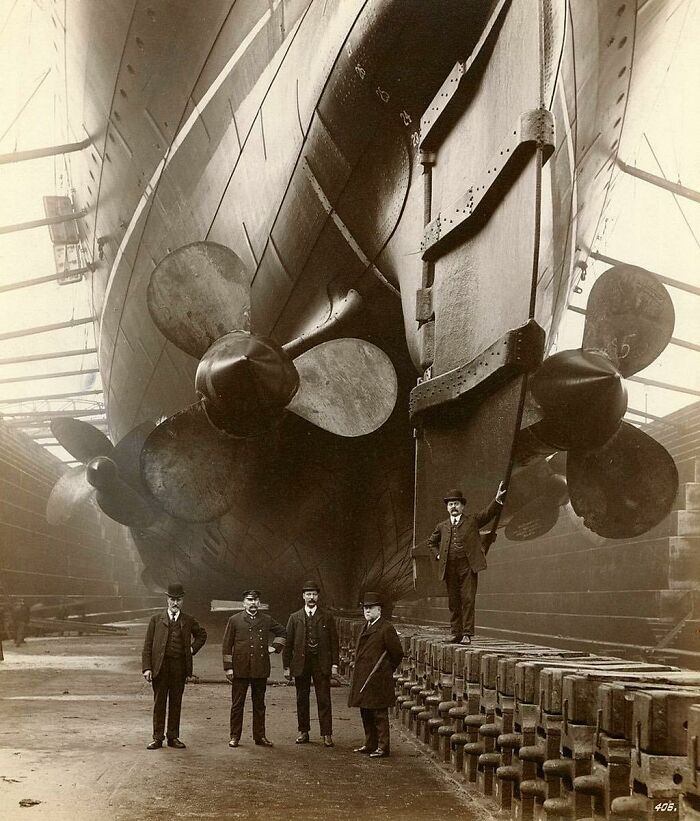
Image credits: historyatlas
#40 Paris Viewed From The Top Of Notre Dame, 1955
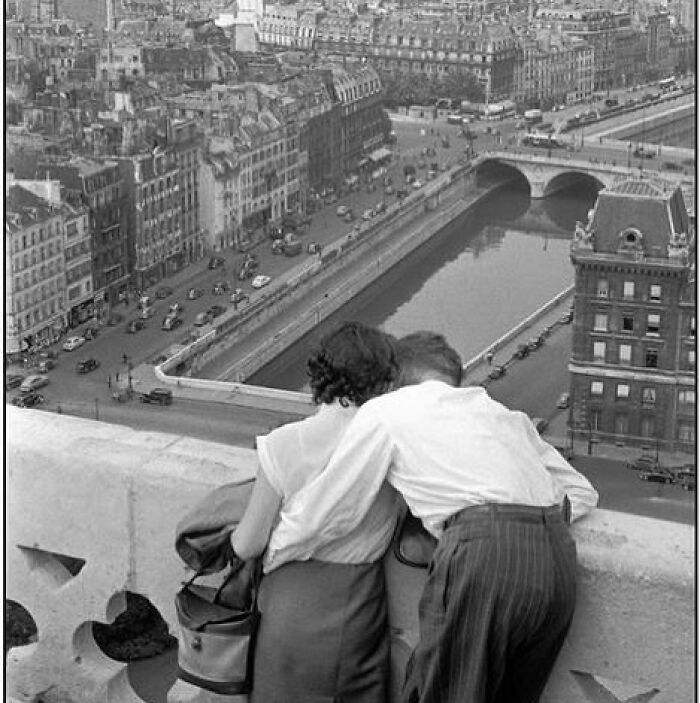
Image credits: historyatlas
#41 Times Building Under Construction, 1903
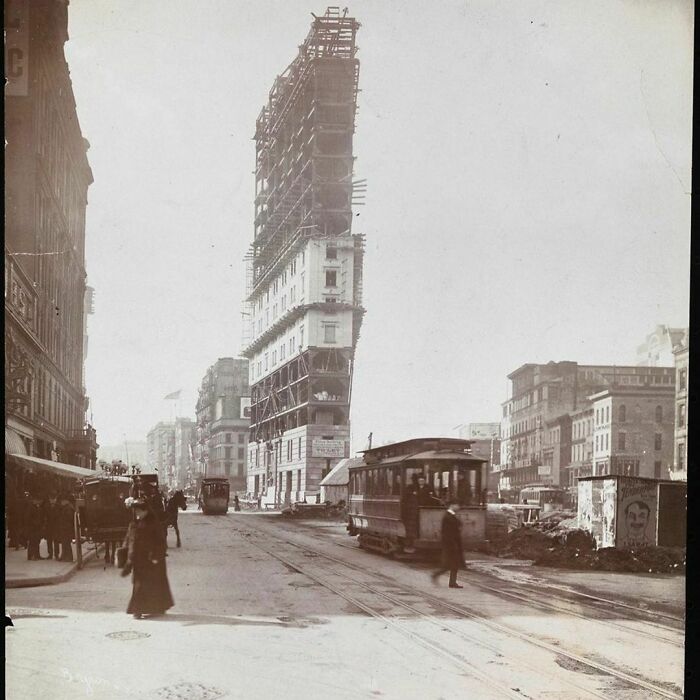
Image credits: historyatlas
#42 Belgium Coal Miners Crammed Into A Coal Mine Elevator, Coming Up After A Day Of Work, Circa 1900
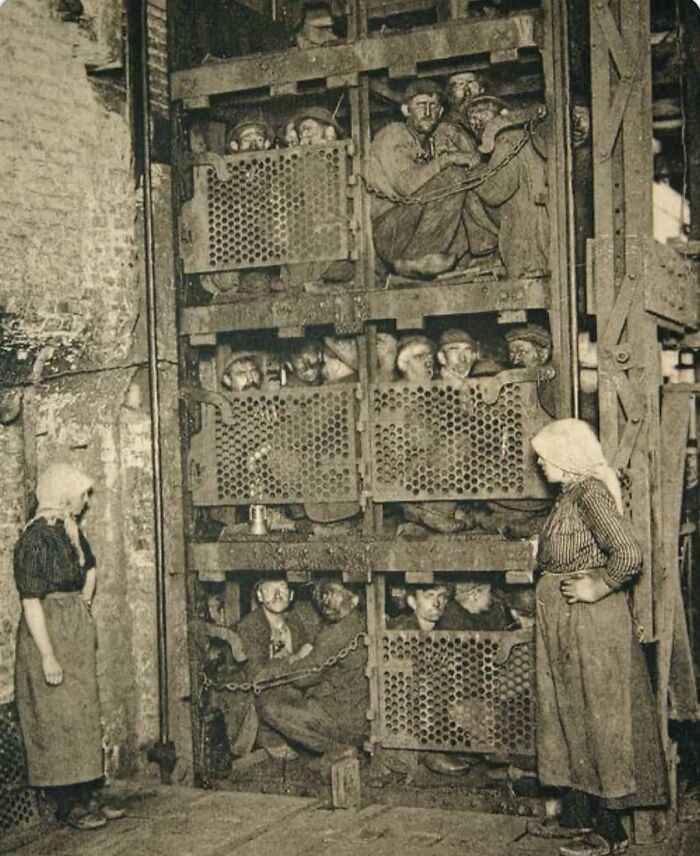
Image credits: historyatlas
#43 Mount Adams Incline And Price Hill Incline. Cincinnati Ohio 1906
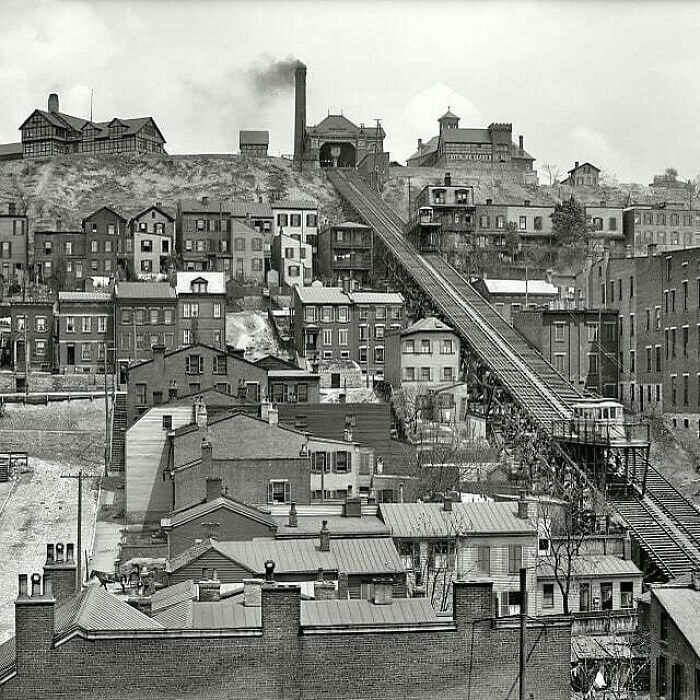
Image credits: historyatlas
#44 Second Class Saloon, Nome, Alska, July 1, 1901
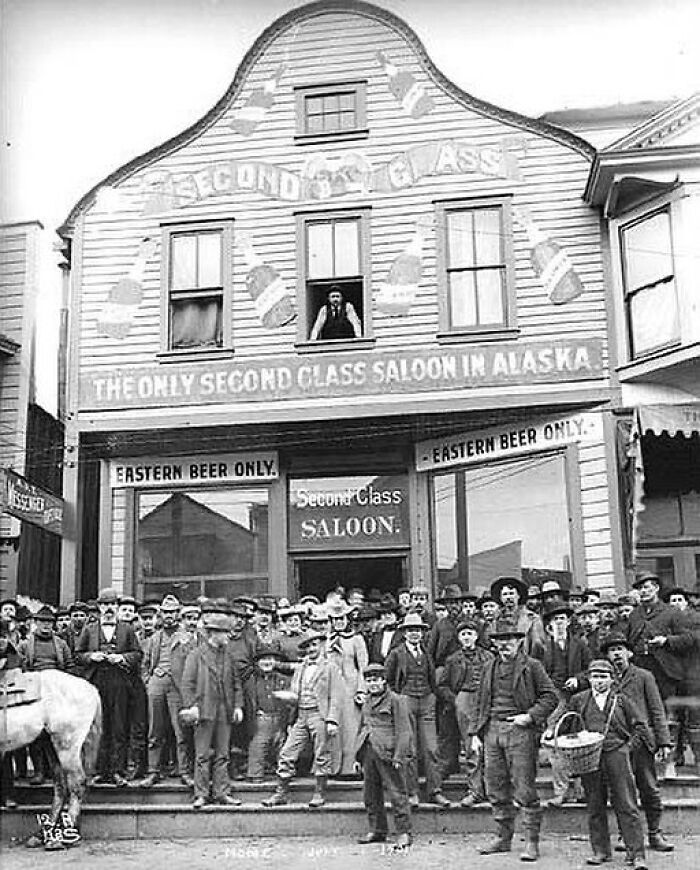
Image credits: historyatlas
#45 Los Angeles Development Boom Of The 1950s
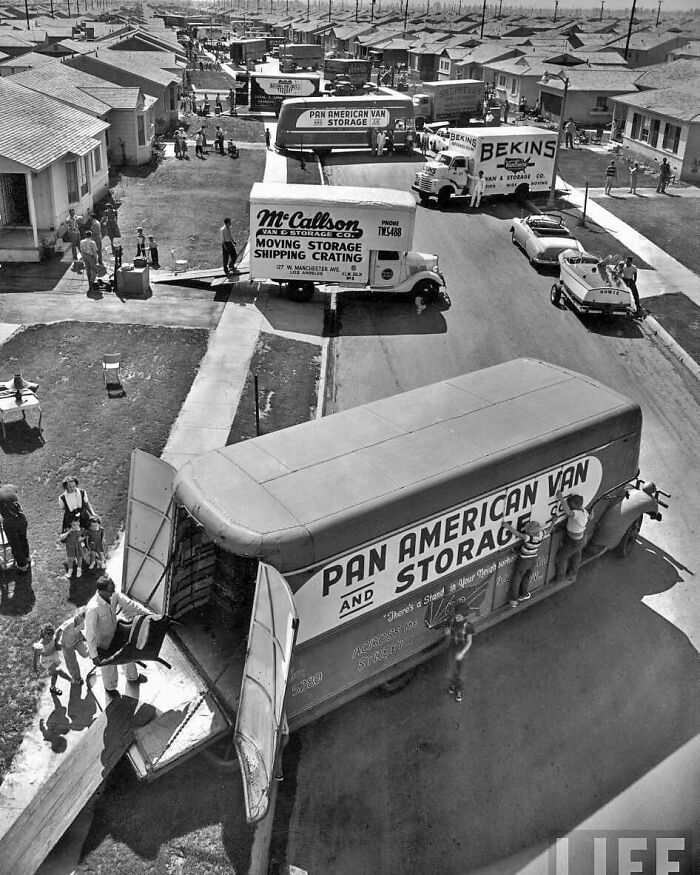
Image credits: historyatlas
#46 Fashion Show On Board The New York, New Haven, And Hartford Railroad’s Show Train, 1949
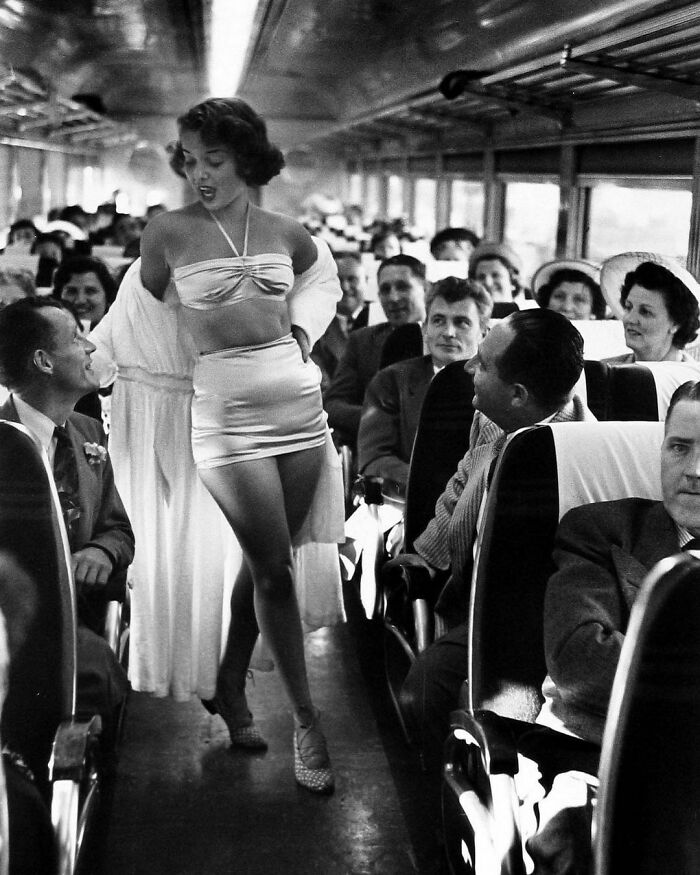
Image credits: historyatlas
#47 Vintage Tennis Photo Women Smoking Cigarettes 1930s
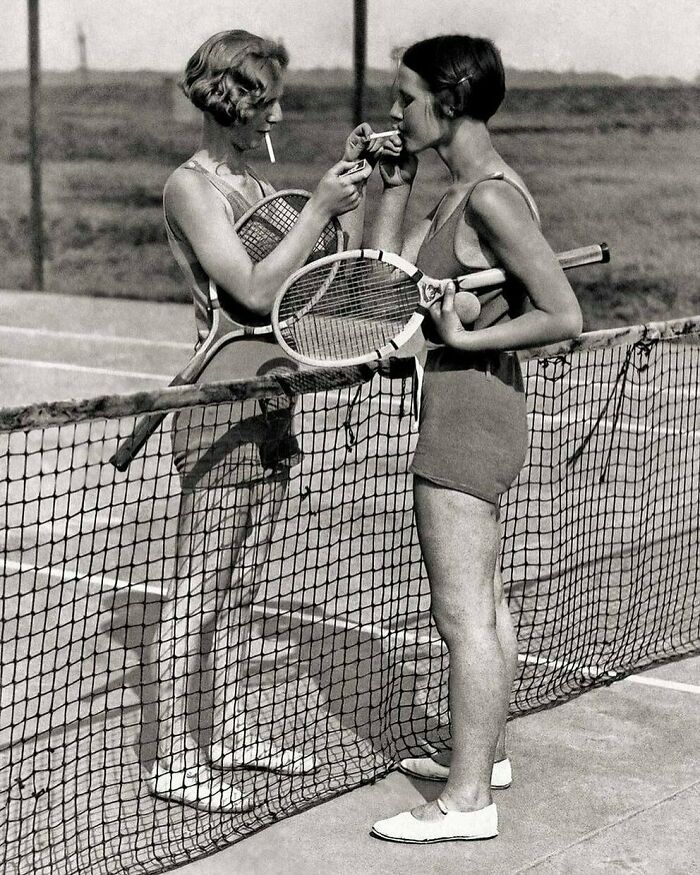
Image credits: historyatlas
#48 30 Men Prove The Strength Of The Dkw ‘Front Reichsklasse’ Type F7 Car, Amazingly Built By Wooden Coachwork 1930s
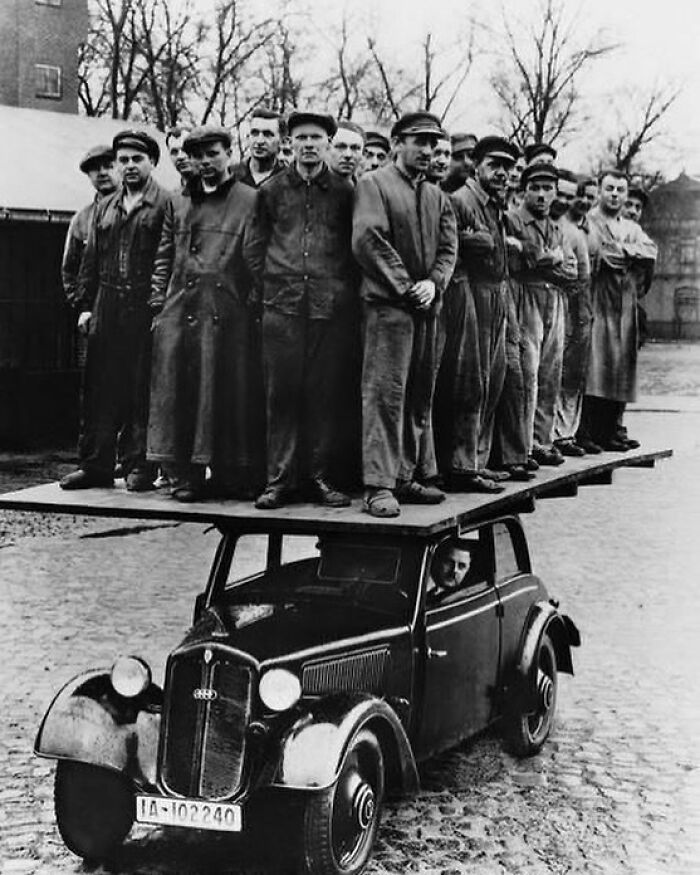
Image credits: historyatlas
#49 Rms Mauretania (Also Known As The “Maury”) Was An Ocean Liner Of The Cunard Line, Launched On 20 September 1906
At the time, she was the largest and fastest ship in the world. Mauretania became a favourite among her passengers. After capturing the Blue Riband for the fastest transatlantic crossing during her 1907 inaugural season, Mauretania held the speed record for 22 years.
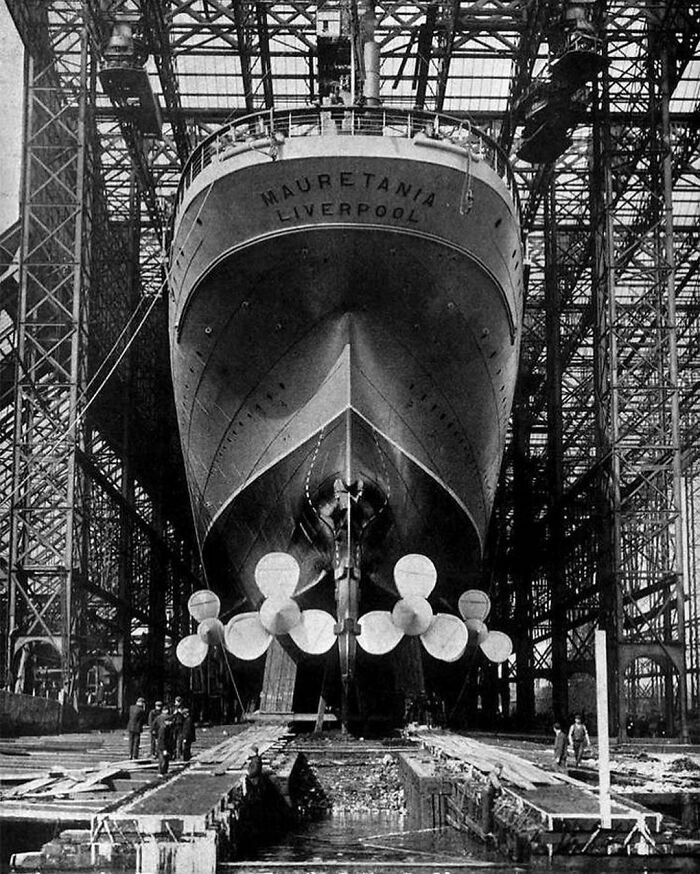
Image credits: historyatlas
#50 Tourists Sunbathing And Drinking Tea On Top Of The Great Pyramid Of Giza, 1938
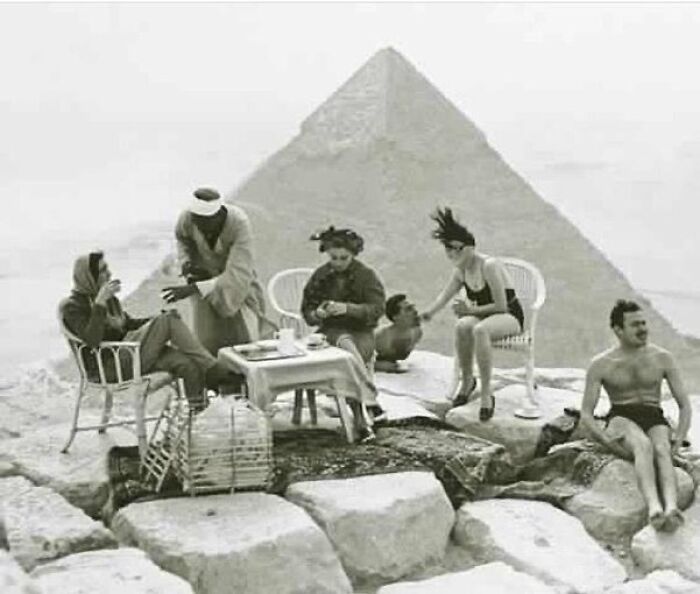
Image credits: historyatlas
50 Rare Historical Photos That You Probably Haven’t Seen Before
September 7, 2022
Learning about history is a continuously interesting, never-ending adventure. What makes it even more exciting is exploring the past through authentic photographs. These rare images, coupled with fascinating stories behind them, allow us to take an intimate glimpse into the lives of people long gone. They provide a tangible link that connects us to these unfamiliar faces and teaches us about their dreams, fears, and brave decisions that changed the course of history.
Our team here at Bored Panda absolutely adores discovering golden nuggets about the old days, and we’re thrilled to bring you plenty of images that correspond with them. Today’s post will serve as a captivating archive of some rarely seen photos filled with unstaged and genuine scenarios from the old days.
So let’s take a look at some historical moments — both big and small — that may just help us see the world in a different light. Continue scrolling, upvote your favorite entries and tell us in the comments which ones you loved the most and why. Then if you’re interested in broadening your mental horizons even further, check out our earlier piece about historical photos that might change your perspective right over here.
#1 In 1969, When Black Americans Were Still Prevented From Swimming Alongside Whites, Mr.rogers Decided To Invite Officer Clemmons To Join Him And Cool His Feet In A Pool
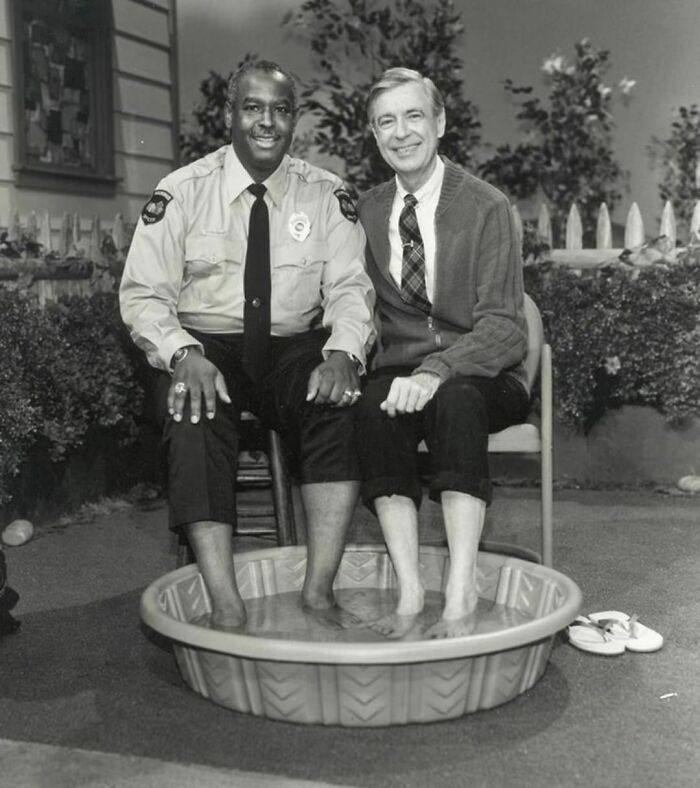
Image credits: years_in_photos
#2 On February 8th, 1943, Nazis Hung 17-Year-Old Lepa Radić For Being A Yugoslavian Partisan During World War II. When They Asked Her The Names Of Her Companions, She Replied: “You Will Know Them When They Come To Avenge Me.”

Image credits: years_in_photos
#3 Three Lads Play To The Camera, Jamaica
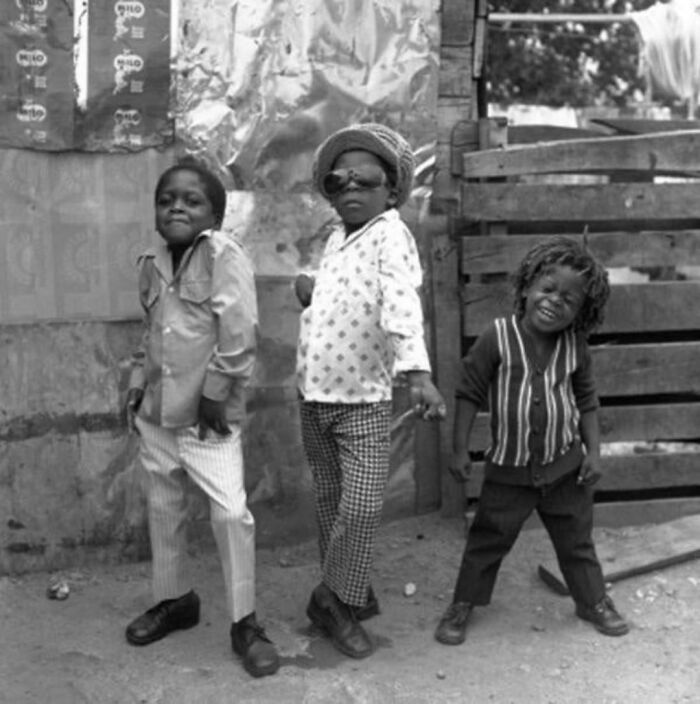
Image credits: years_in_photos
The best thing about stumbling across historical pictures like these is how much they spark our interest. Many of us immediately feel the urge to do a few Google searches, quickly click on hyperlinks, and dive headfirst into the world of knowledge, all to learn more about these past eras, long-gone events, and people who created something out of them.
It’s amazing how one simple photo can lead to hours of research about something you might not even have known existed before. By exploring historical events through photographs, you have a chance to interpret and enhance your perception of the world in a visual way. You’re suddenly presented with new information about how individuals lived back then and how their actions molded our society.
#4 One Of The Earliest Photos Showing A Native American With A Wolf – Unlike The Myths Created About Wolves By Settlers, Indians Maintained A Close And Respectful Relationship With Wolves
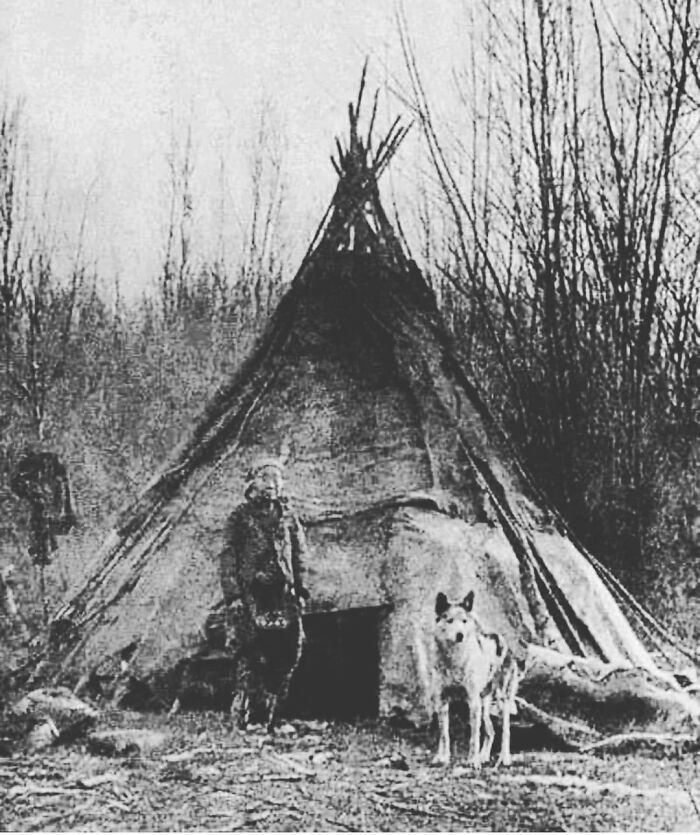
Image credits: years_in_photos
#5 Harlem Grocer Standing In Front Of His Store, 1937
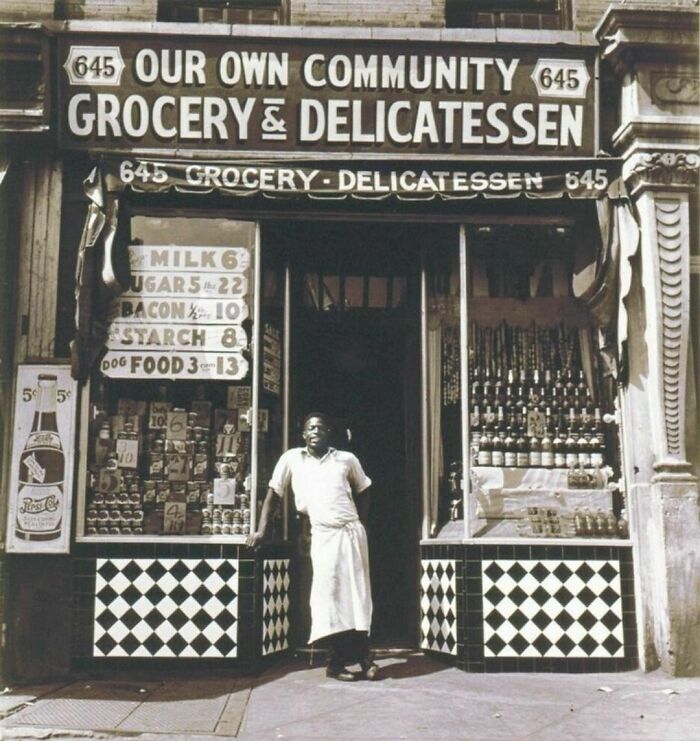
Image credits: years_in_photos
#6 Jewish Prisoners After Being Liberated From A Death Train, 1945

Image credits: years_in_photos
“Photography can definitely be a powerful tool in understanding history,” Jo Romero, a writer, sketcher, and founder of the blog called Love British History previously told Bored Panda. “It gives us that link between us and people in the past — we can look into the person’s eyes in a photograph and it creates that human connection between us.”
#7 The Boy And His Car, 1930s.little Man’s Got Style
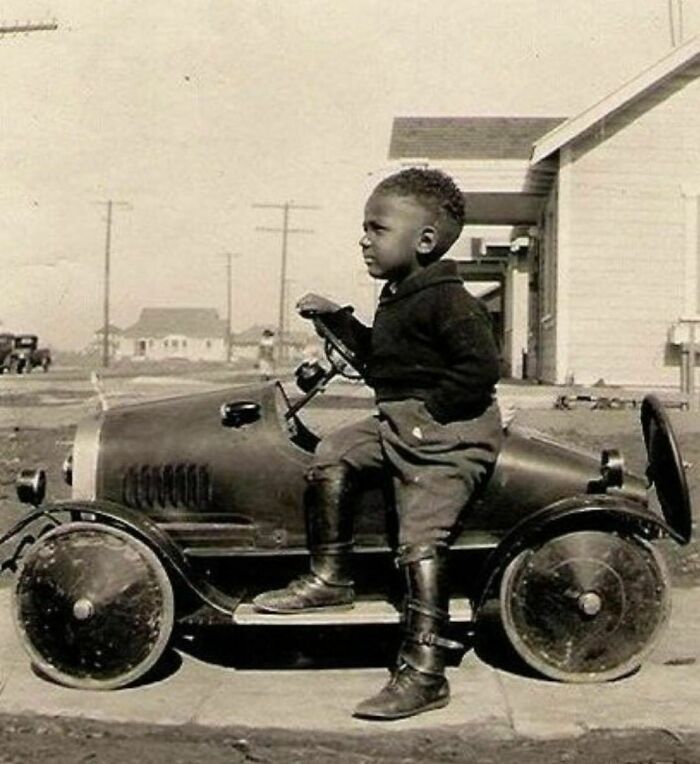
Image credits: years_in_photos
#8 ” Please, God, Please, Don’t Let Me Be Normal”. Sigourney Weaver’s High School Yearbook Picture.1967
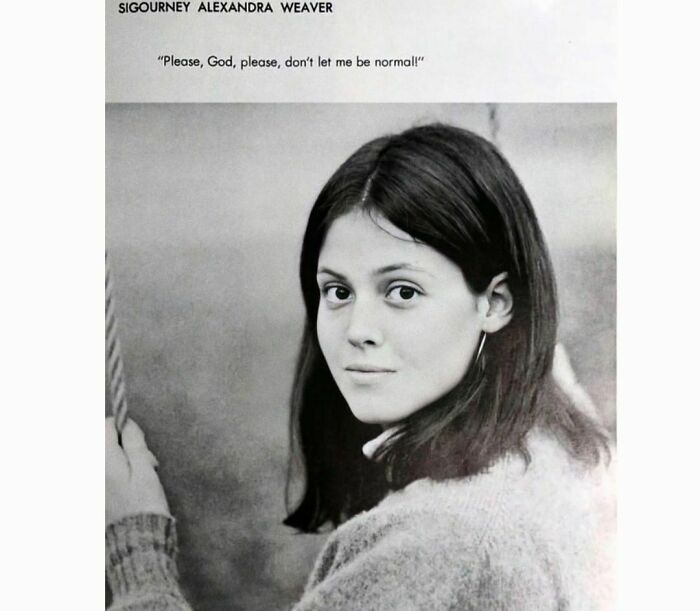
Image credits: years_in_photos
#9 Mother And Daughter Taking A Walk In New York City, 1970
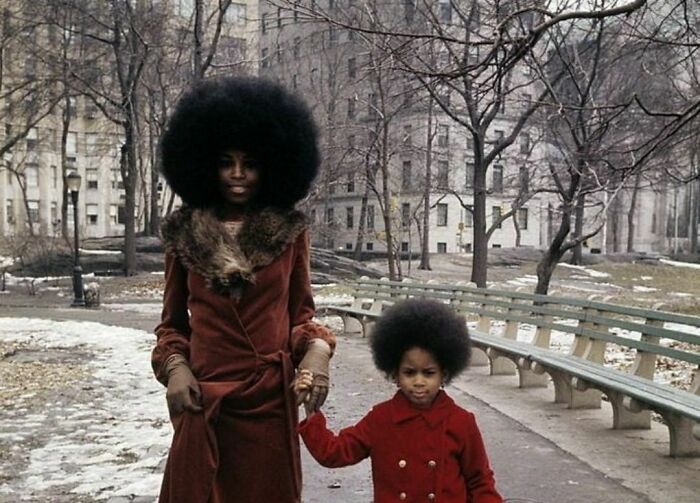
Image credits: years_in_photos
“From a photograph too, we can see body languages and poses within a group of people or the way a scene is laid out and this is much more than we could ascertain from reading a book,” Jo added. “Photographs help make history seem more real. They’re like a viewfinder into the past!”
And we can’t help but agree. Of course, oral traditions, artifact collection, and volumes of manuscripts and documents are essential sources of information for historical periods. But there’s something about photography that enhances our understanding of history. With each and every closing of the camera shutter, a moment is recorded and frozen in the past, and uncovering these gems makes them seem even more real.
#10 Japanese Couple Taking A Mirror Selfie, 1920s
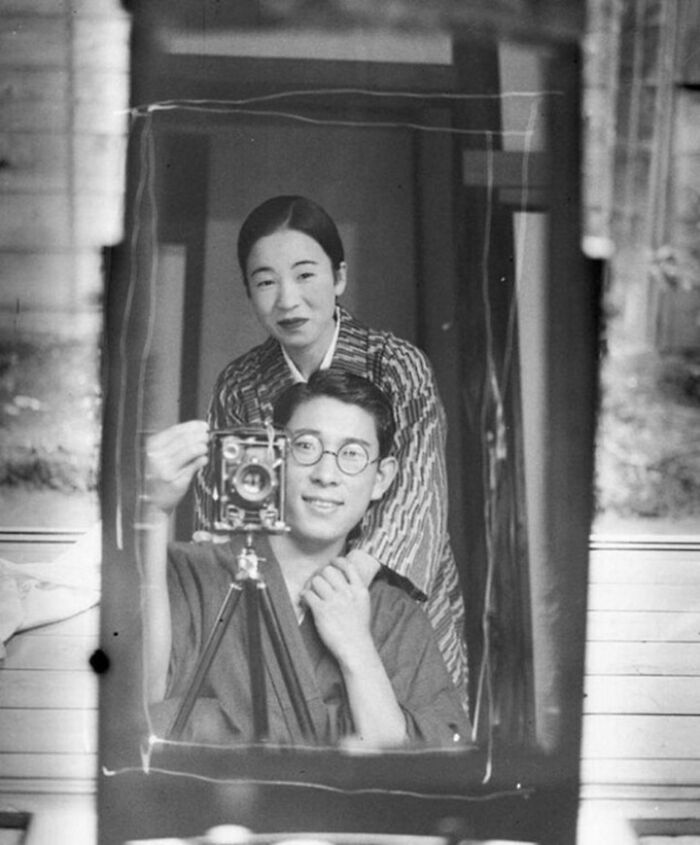
Image credits: years_in_photos
#11 22-Year-Old Wasp Pilot Shirley Slade In Her Flying Helmet, Goggles, And Gloves, 1943
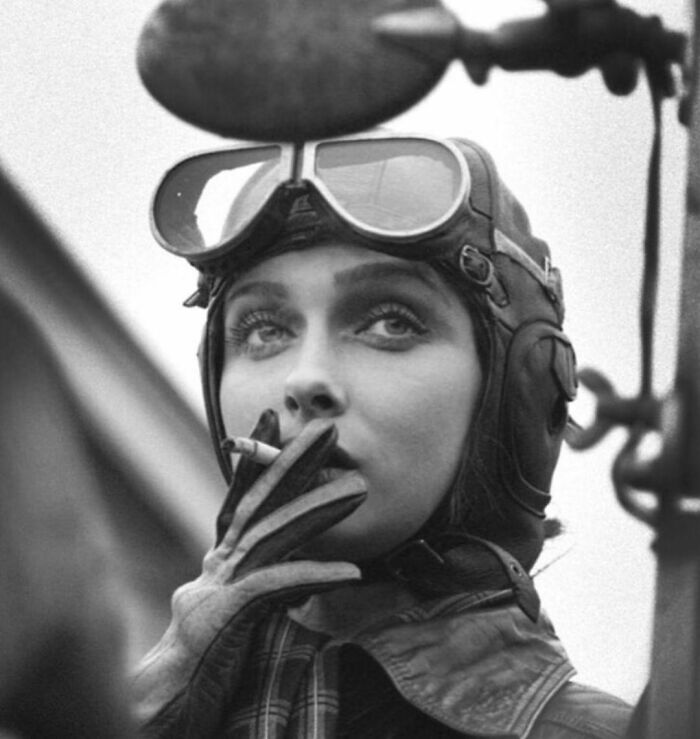
Image credits: years_in_photos
#12 Photograph Showing Inventor Charles S.l Baker And His Assistant Demonstrating Heating/Radiator System. 1906

Image credits: years_in_photos
“We have so much we can learn from the visual evidence that we have, whether that’s a portrait of a person or a snapshot captured of a group or scene,” the blogger pointed out that history is an extremely varied topic. Jo added that visual media helps make the past seem more accessible and that we can see photos like we see historical artifacts. “They add interest and give us context.”
According to Jo, it’s one thing to read about your great-great-grandfather on a page but then to see a photograph of him and look into his eyes, it’s completely different. She believes that “photos of people or scenes evoke a much stronger emotional reaction, and it’s great that they can be used alongside written sources for context. Not everyone wants to learn just by reading, and using different visual sources can help keep our interest and curiosity up and make the topic a lot more engaging.”
#13 Bobbi Gibb, First Woman To Run The Boston Marathon In 1966, She Ran Without A Number Because Women Were Not Allowed Into The Race
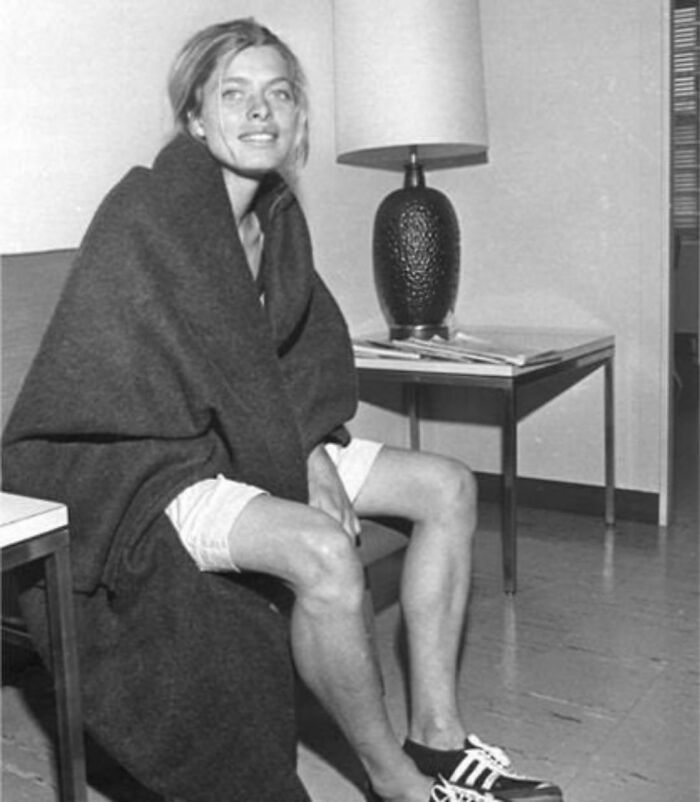
Image credits: years_in_photos
#14 Bride Leaving Her Recently Bombed Home To Get Married, London, Nov 4, 1940
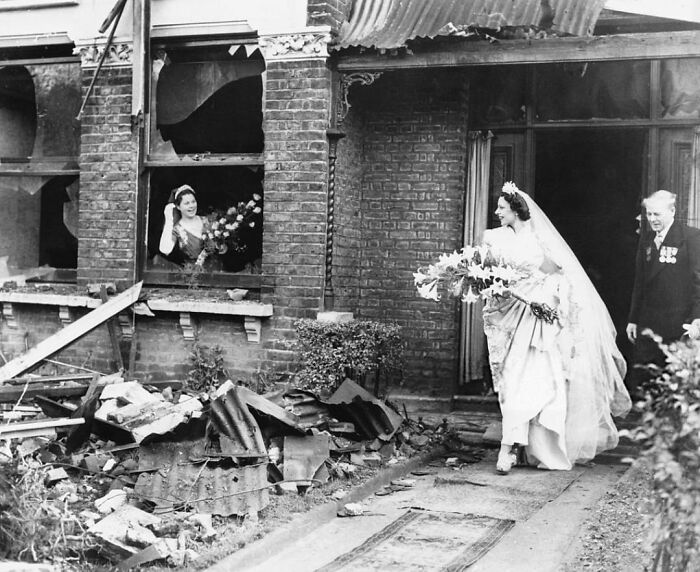
Image credits: years_in_photos
#15 A Jewish Hanukkah Menorah Defies The Nazi Swastika, 1931
On Hanukkah 1932, just one month before Hitler came to power, Rachel Posner, wife of Rabbi Dr. Akiva Posner, took this photo of the family Hanukkah menorah from the window ledge of the family home looking out on to the building across the road decorated with Nazi flags.
On the back of the photograph, Rachel Posner wrote in German (translated here): Chanukah 5692 (1932)
“Death to Judah”
So the flag says
“Judah will live forever”
So the light answers. -.
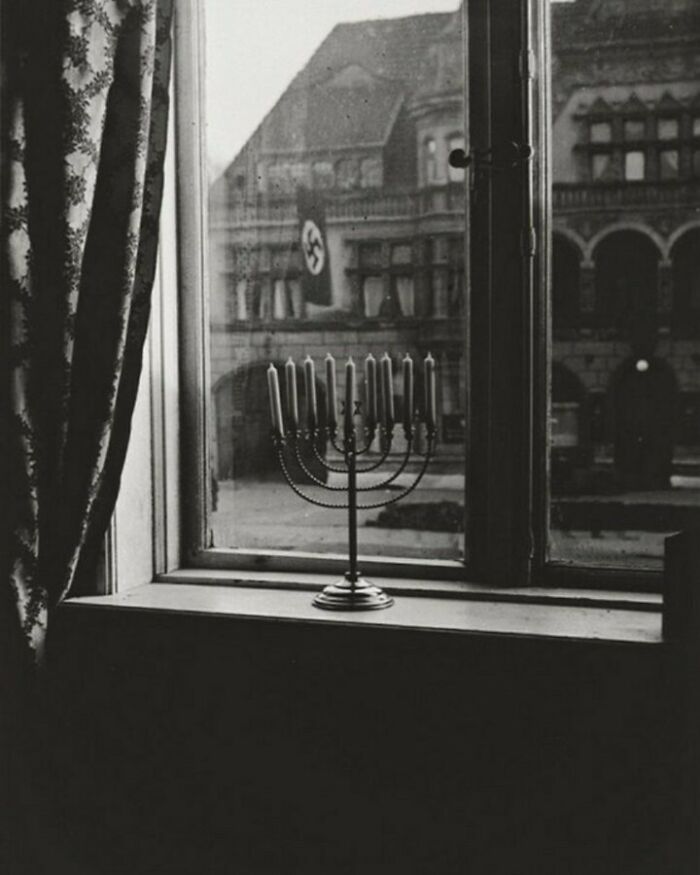
Image credits: years_in_photos
As Anna Pegler-Gordon, an associate professor at the University of Michigan, explained in a piece called Seeing Images in History, we rarely spend time exploring pictures that illustrate history. Most of the time, we focus on the written content “because of the way that images are presented in many historical texts and also because of the way that historians are trained to view images — as illustrations of written history rather than sources of history themselves.”
But this seems to be changing as Pegler-Gordon mentioned evidence of a “visual turn” in learning and teaching the subject in the last few years. It looks like more academics and historians now give more attention to visual images. By using photographs to teach, the professor noticed that students often see media as more accessible than written records. “Students themselves mention that images make the past seem more accessible, giving concrete shape to a world that sometimes seems intangible,” she added.
#16 Kiss Band With Their Parents, 1976
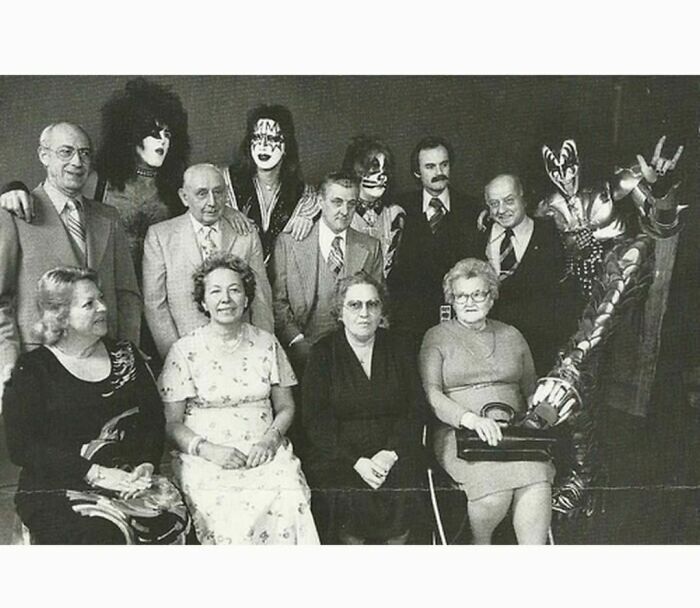
Image credits: years_in_photos
#17 Luzon Woman, 1875
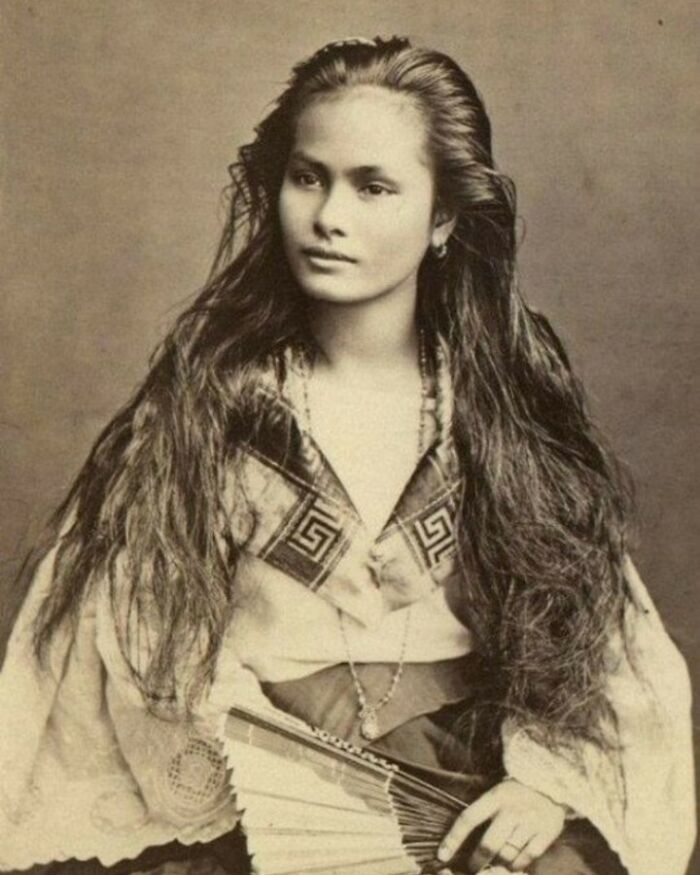
Image credits: years_in_photos
#18 Showgirls Playing Chess Before A Show , 1958
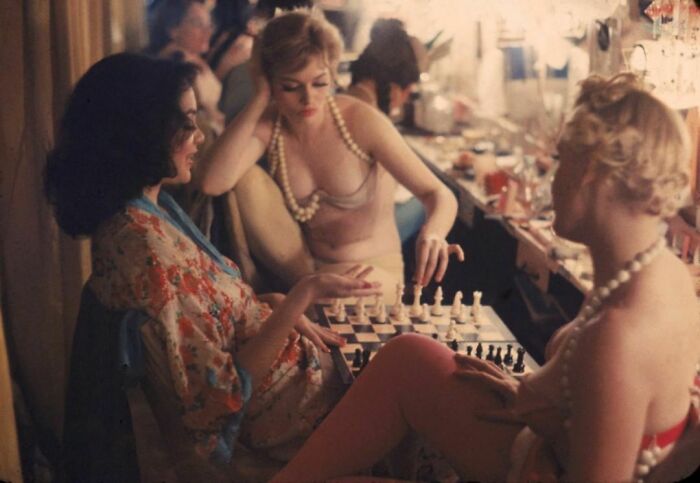
Image credits: years_in_photos
“The learners who arrive in our classrooms today are not only immersed in technology, but also in visual ways of learning. They appreciate the immediacy of the image, which often conveys information more quickly than a primary document written in unfamiliar, or even a foreign, language.” Another benefit is that this immediacy leads to a shared experience of viewing a picture together that can contribute to a lively group discussion.
Moreover, students are often advanced readers of graphic media, and with proper guidance and support from their teachers, they can truly enjoy the process of looking at and analyzing historical visual representations.
#19 Inuk Man Teaching A Boy How To Shoot. Circa 1920
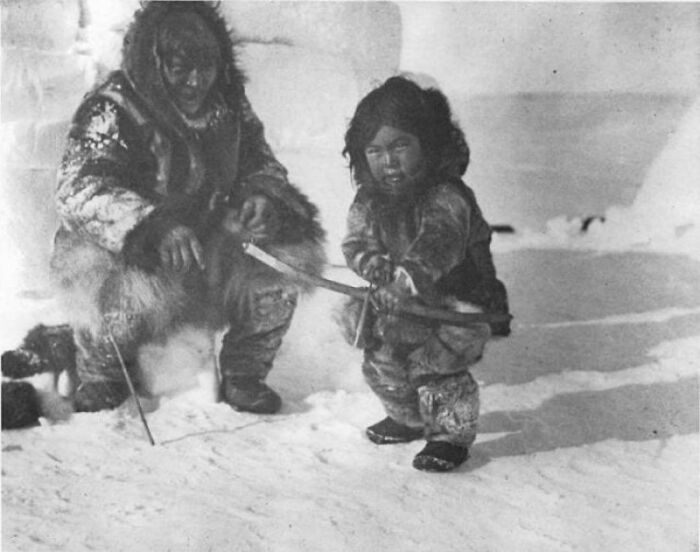
Image credits: years_in_photos
#20 Hippie Dad Walking With His Daughter. Amsterdam, 1968
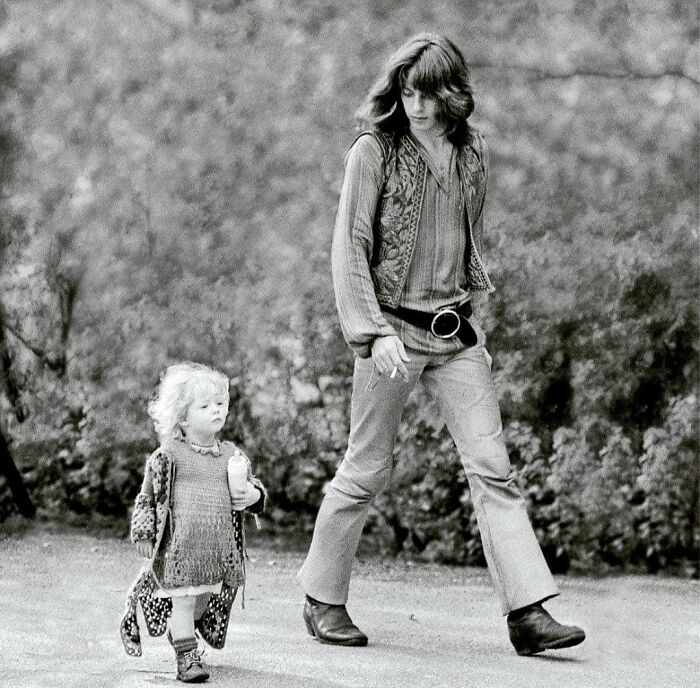
Image credits: years_in_photos
#21 David Isom, 19, Broke The Color Line In A Segregated Pool In Florida On June 8, 1958, Which Resulted In Officials Closing The Facility
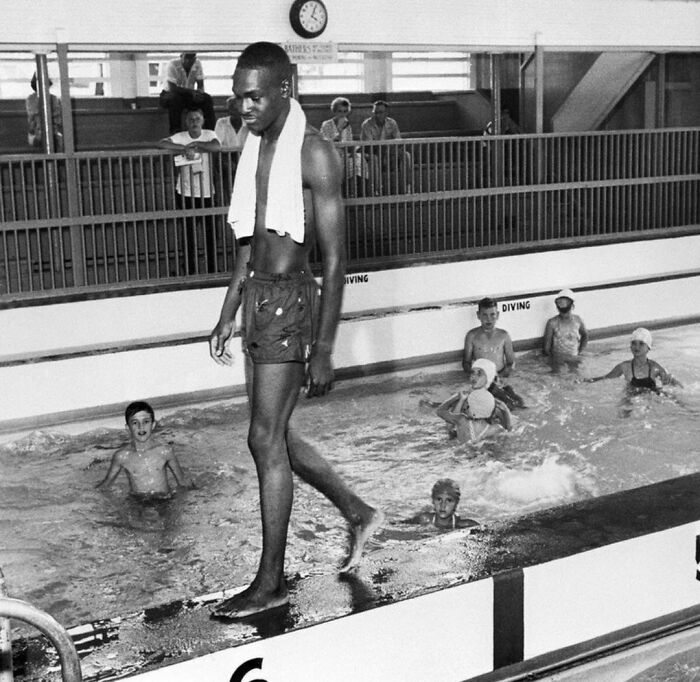
Image credits: years_in_photos
“However, visual images are also inaccessible for the same reasons that they are accessible. The apparent legibility of the image hides its historical construction, the ways in which the image was made, distributed, and read at the time it was produced and since.” Pegler-Gordon added that to become better at reading images, we must become informed about the history and the theory of images.
#22 The Real Meaning Of “Keep Calm And Carry On.” Milkman During The London Blitz 1940
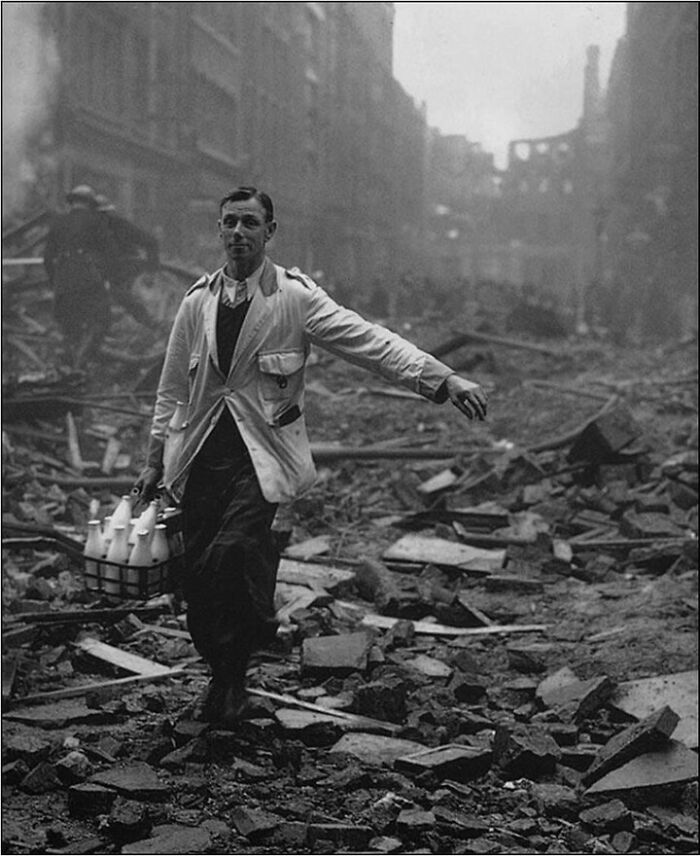
Image credits: years_in_photos
#23 Susan Kare, Famous Apple Artist Who Designed Many Of The Fonts, Icons, And Images For Apple, Next, Microsoft, And Ibm. (1980s)

Image credits: years_in_photos
#24 Father And Son Bonding Time 1980s
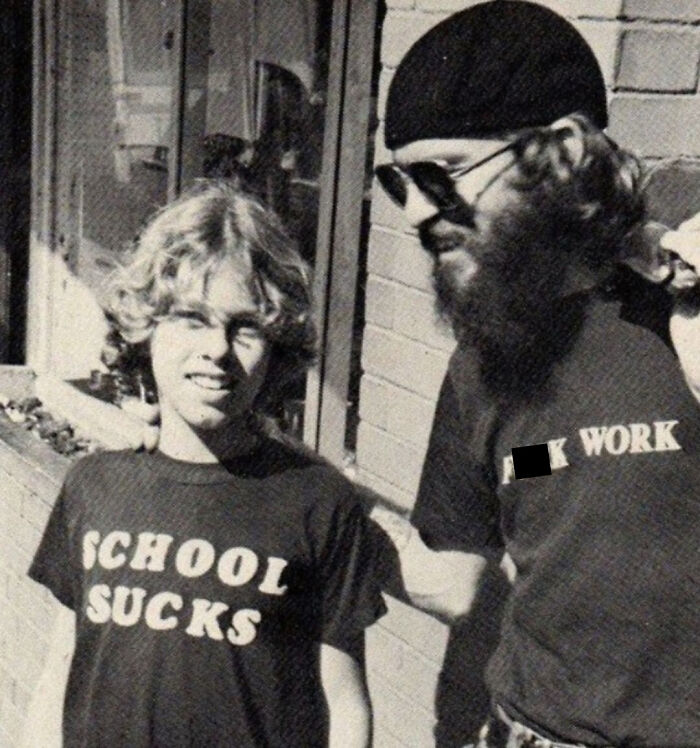
Image credits: years_in_photos
Once we arm ourselves with knowledge, photos can be a great tool to expand our mental horizons even further. “We establish a connection with not only the subject but also the photographer, so we see exactly what they saw through their lens that day as if we’re seeing it now and are part of the scene in a way,” blogger Jo Romero added. She concluded by saying that discovering the past through historical photographs simply makes it seem “much more relatable to us and we want to discover more.”
#25 Not Everyone Likes Bikini, Miami Beach, 1980s
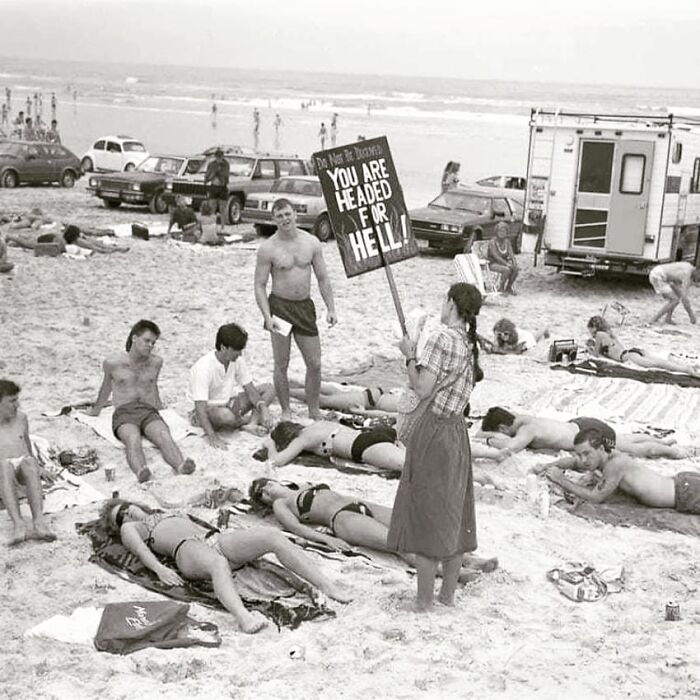
Image credits: years_in_photos
#26 Learning To Ride A Bicycle, 1961
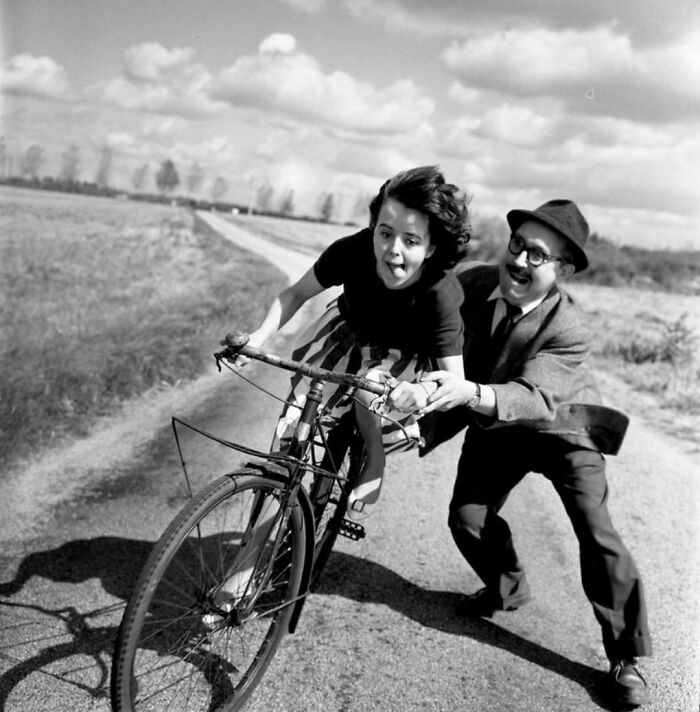
Image credits: years_in_photos
#27 The Two Kashmir Giants Posing With The American Photographer James Ricalton, 1903
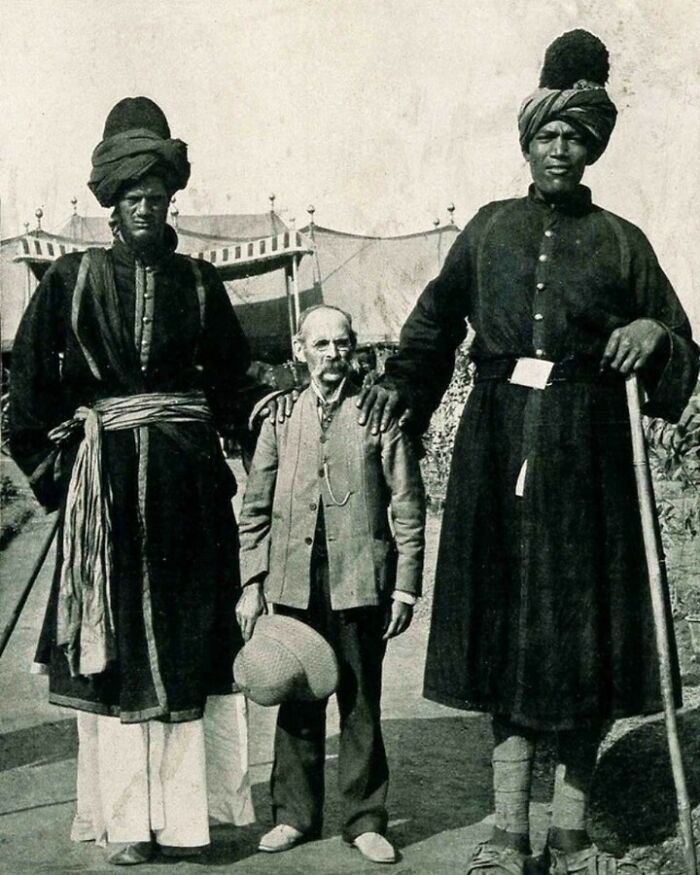
Image credits: years_in_photos
#28 Couples In A Bar, 1959 Pittsburgh

Image credits: years_in_photos
#29 No Dog Biscuits Today, London, 1939
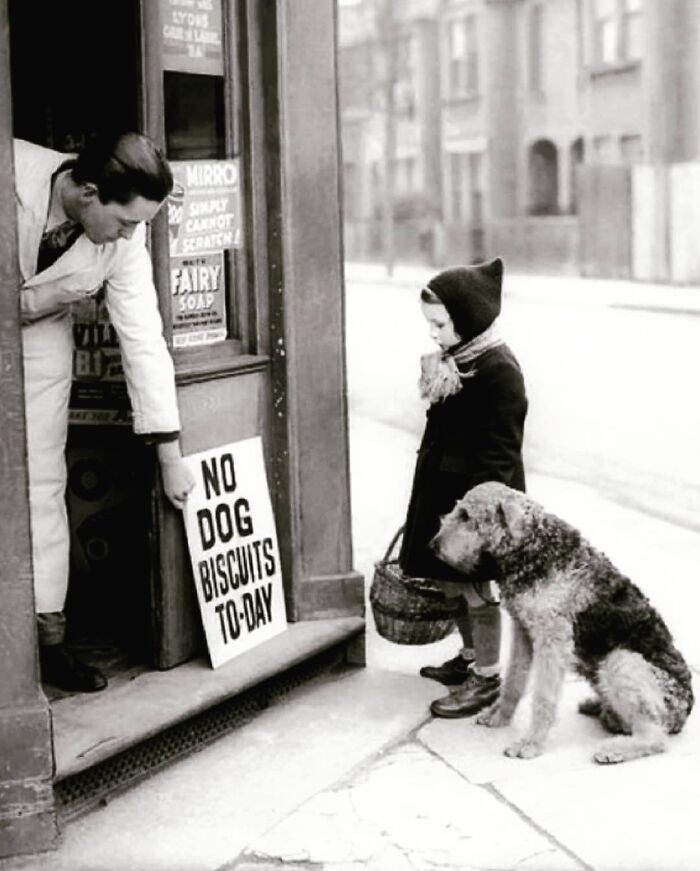
Image credits: years_in_photos
#30 “Easter Eggs For Hitler” Two African American Gi’s Pose At Easter Time With Personalised Infantry Shells. Ww2, 1940s
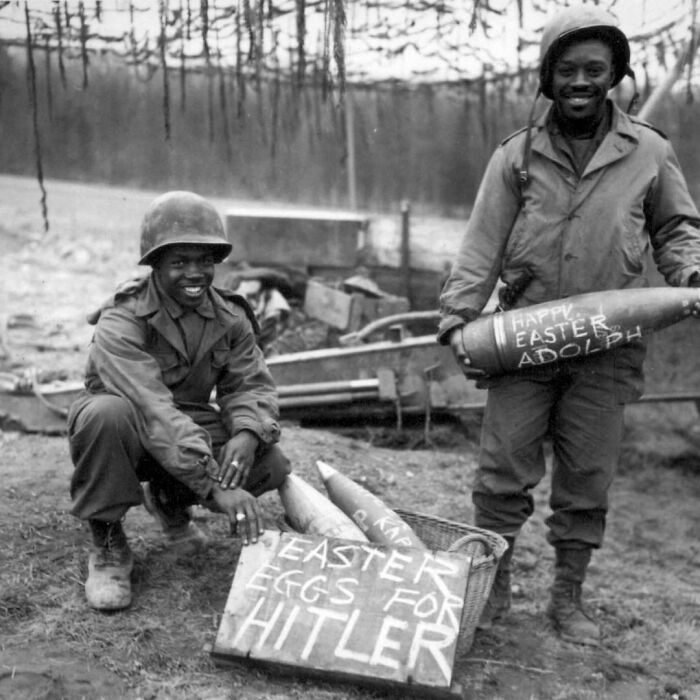
Image credits: years_in_photos
#31 Shooting The Original Mgm Logo, 1928
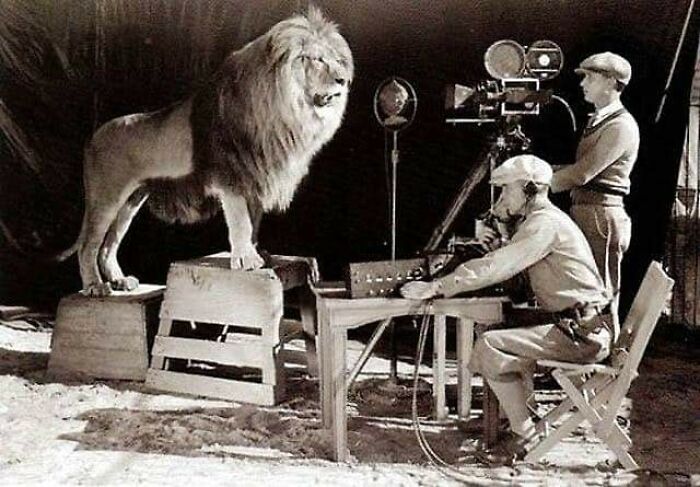
Image credits: Old Photos
#32 Marina Ginestà, A 17-Year-Old Social Activist, Journalist, And Translator, On The Rooftop Of The Hotel Colón In Barcelona In 1936
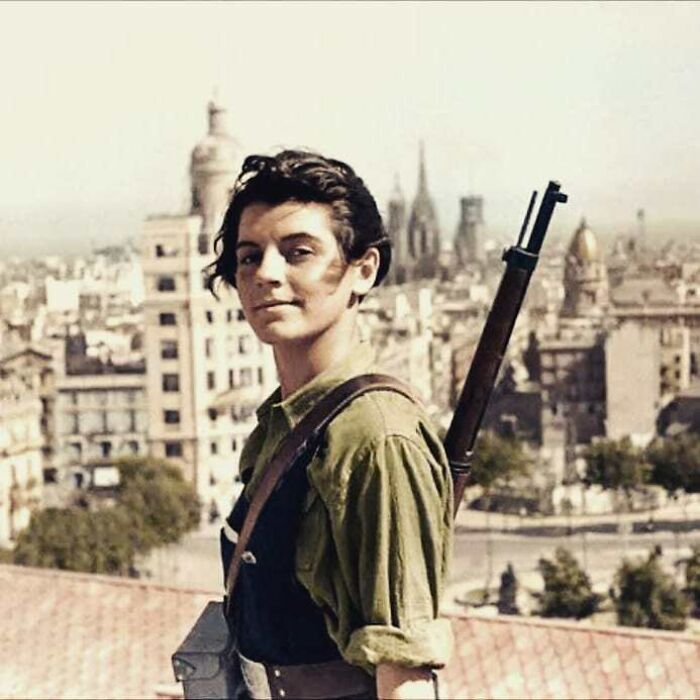
Image credits: years_in_photos
#33 An Ojibwe Native American Spearfishing, Minnesota, 1908
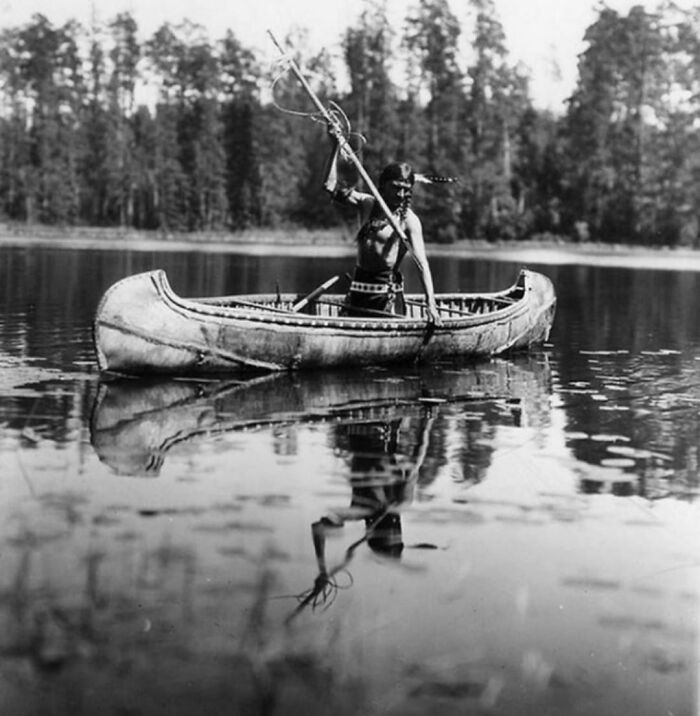
Image credits: years_in_photos
#34 Couple Viewing The Apollo 8 Spacecraft Launch, 1968
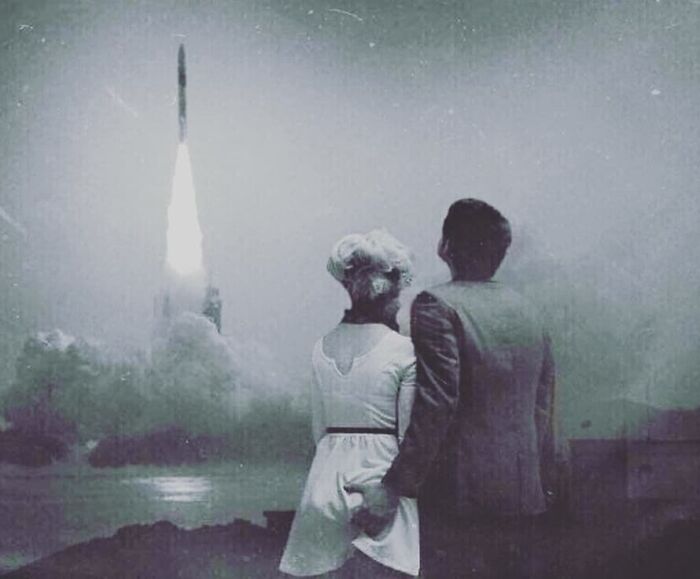
Image credits: years_in_photos
#35 That’s A Genuinely Happy Looking Family, USA, 1959
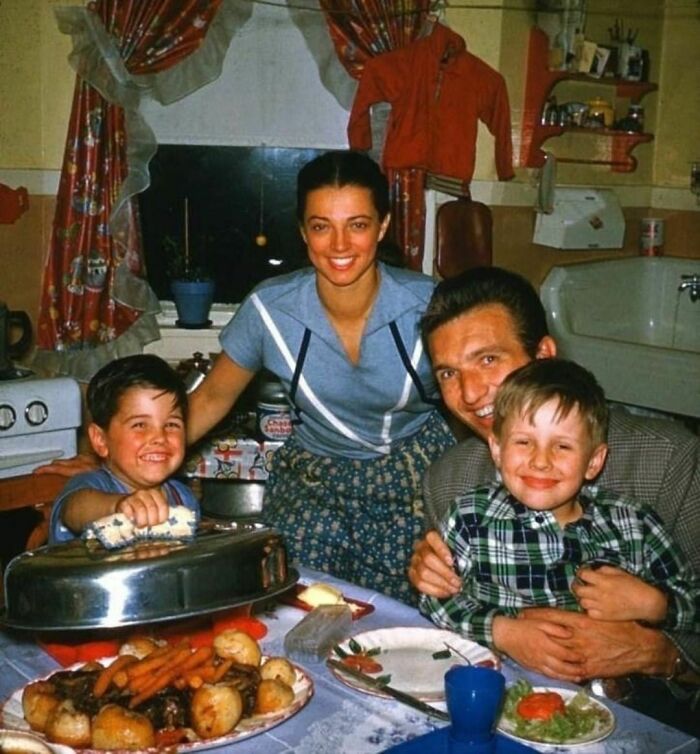
Image credits: years_in_photos
#36 Dad: Let’s Take A Picture That Will Make Mom Angry. 1970

Image credits: years_in_photos
#37 Oasis In Giza, 1917
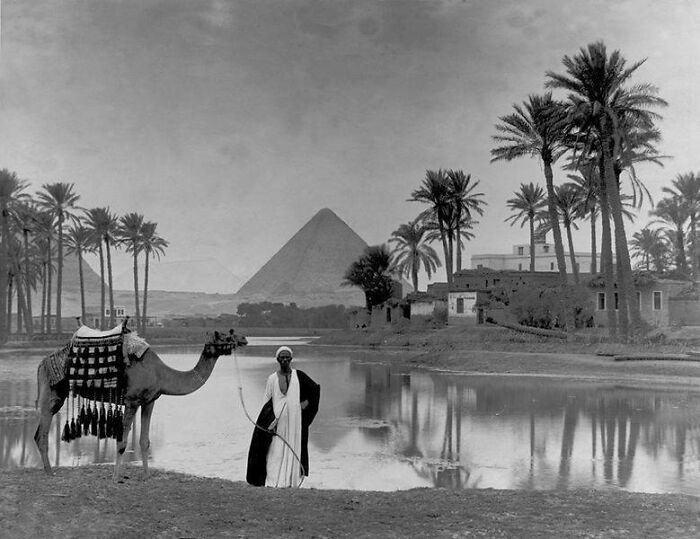
Image credits: Old Photos
#38 A Chippewa Indian Named John Smith Who Lived In The Woods Near Cass Lake, Minnesota Claimed To Be 137 Years Old Before He Died In 1922. Photo Taken In 1915
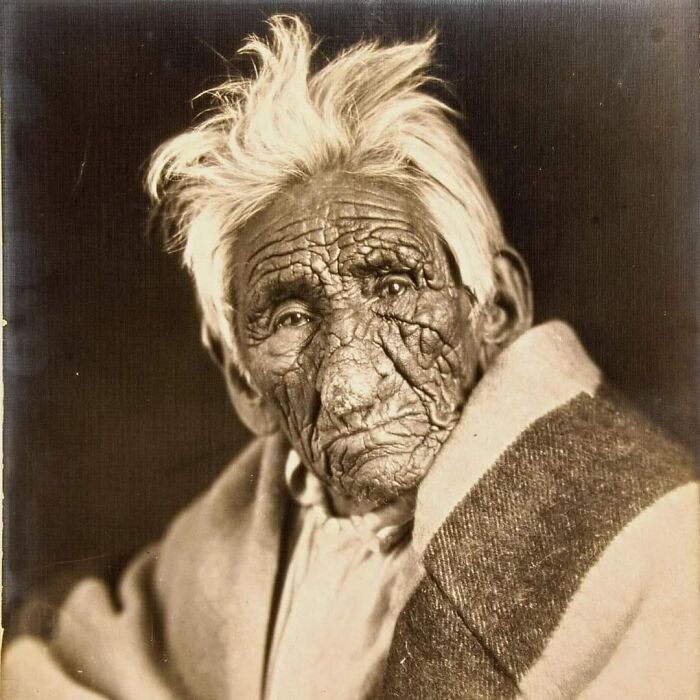
Image credits: Old Photos
#39 Paris – 1950
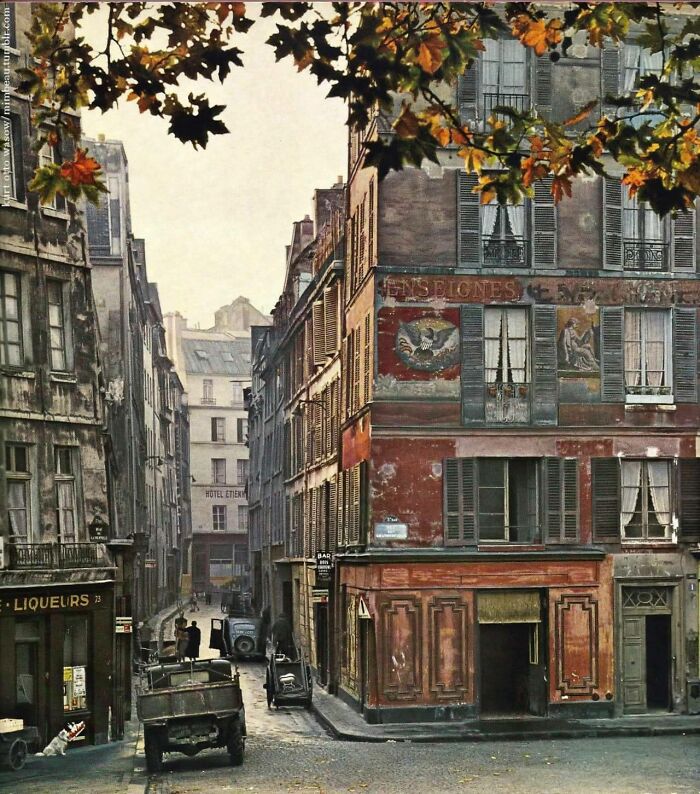
Image credits: Old Photos
#40 A Dude Gets Arrested For Growing Marijuana In The Mid 70s
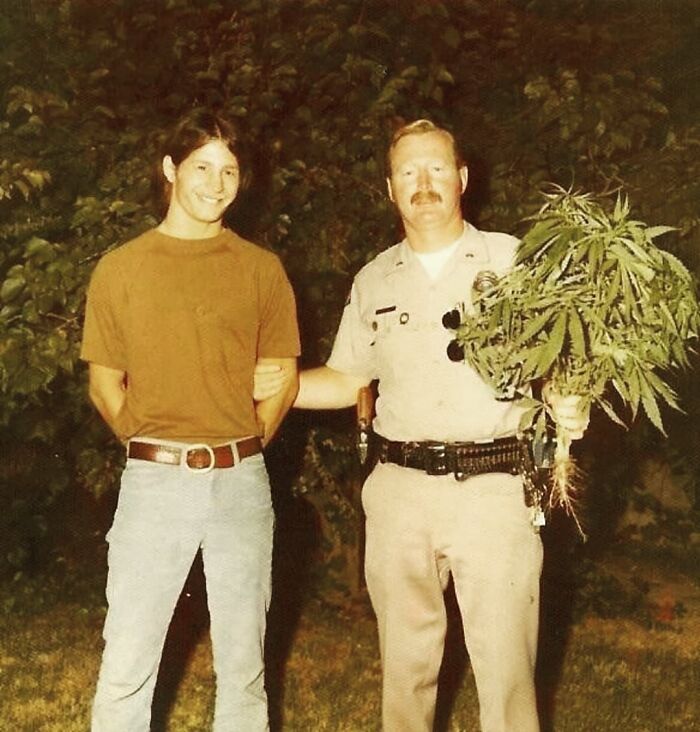
Image credits: years_in_photos
#41 A Teenager At An Elvis Presley Concert At The Philadelphia Arena In Philadelphia (Pa), April 6, 1957

Image credits: years_in_photos
#42 Central Park, New York City, 1973
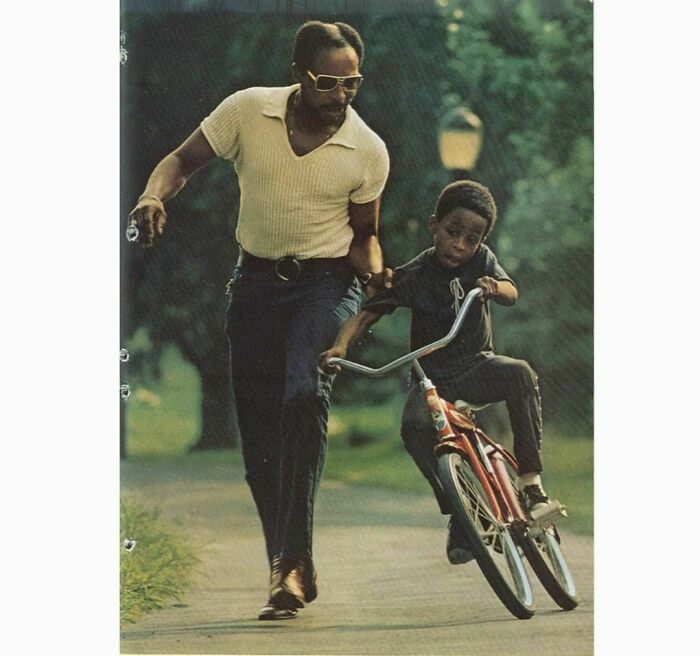
Image credits: years_in_photos
#43 Zuya Hiyaya (Goes To War) And His Daughter, Sicangu, 1905
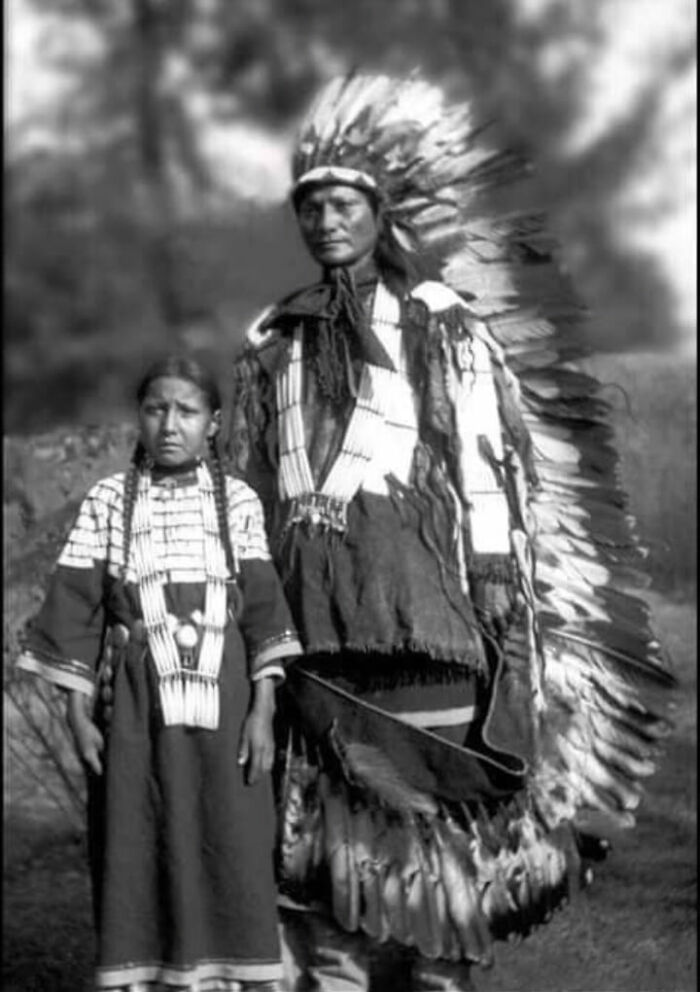
Image credits: oldphotosofyesterday
#44 New York City, September 11th, 2001
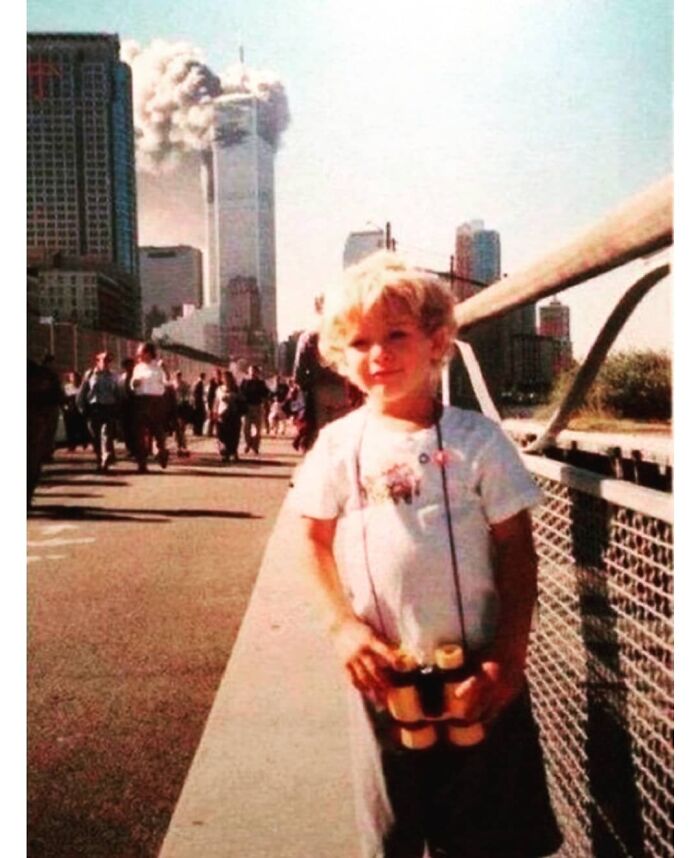
Image credits: years_in_photos
#45 New York Children Sleeping On The Fire Escape To Keep Cool At Night. Early 1900 ‘S

Image credits: years_in_photos
#46 Bushy Ladies Of The 70s

Image credits: years_in_photos
#47 New York City’s Subway System, 1980
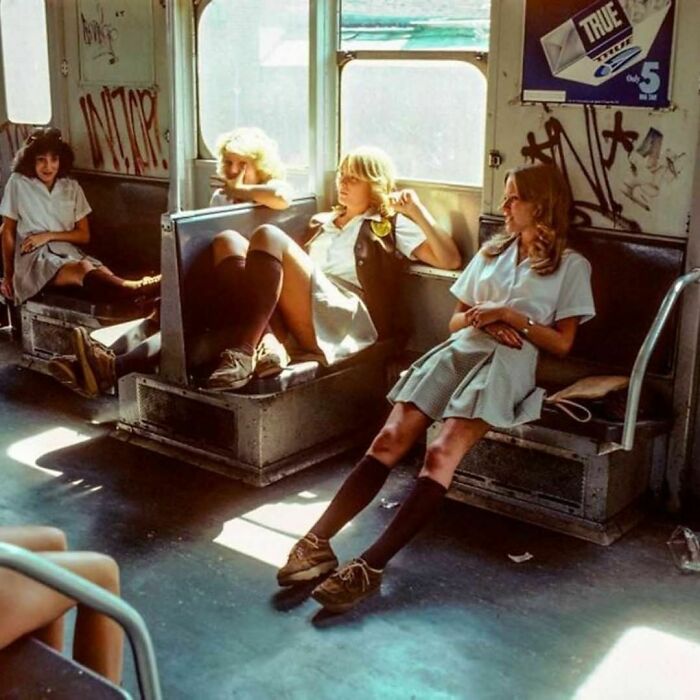
Image credits: years_in_photos
#48 French Riviera, 1974
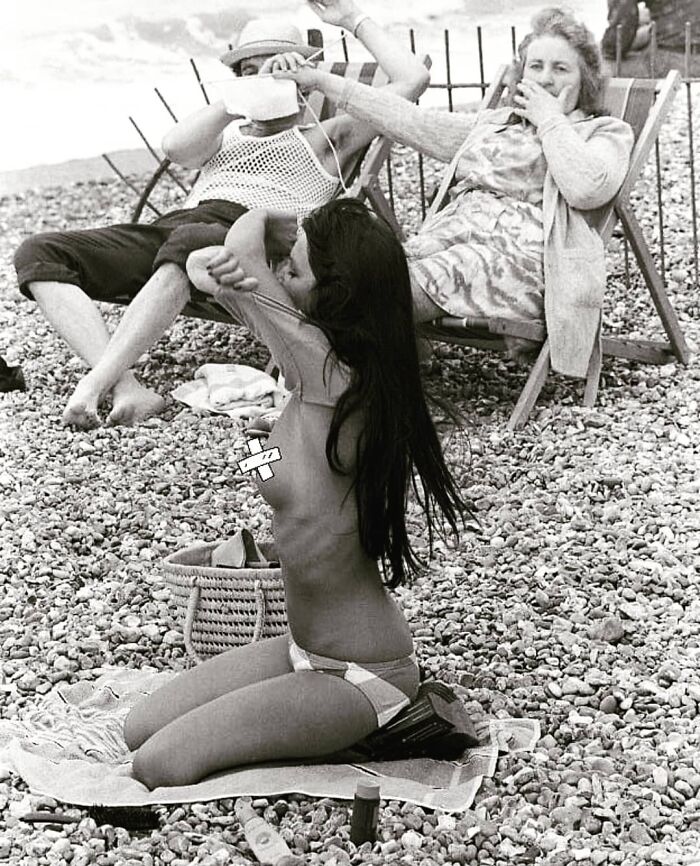
Image credits: years_in_photos
#49 Teenagers At A Party In 1947, Tulsa , Oklahoma.photo By Nina Leen
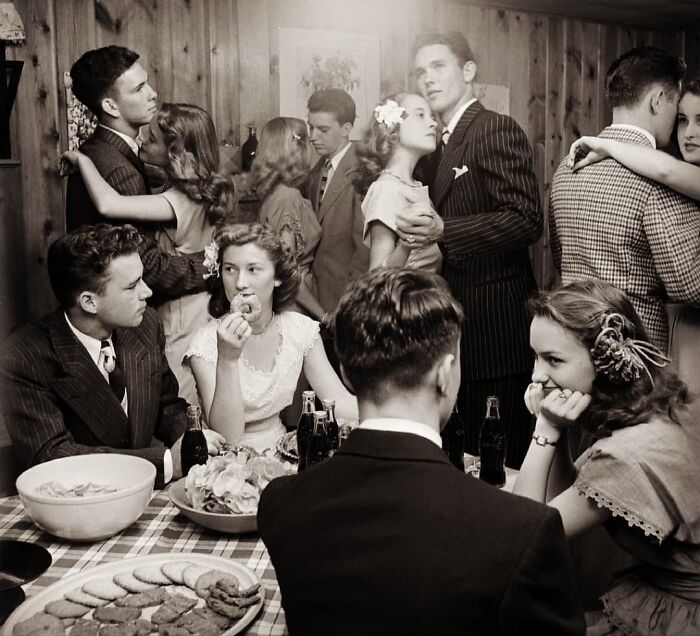
Image credits: years_in_photos
#50 Cleaning Women Washing A Crucifix, 1938
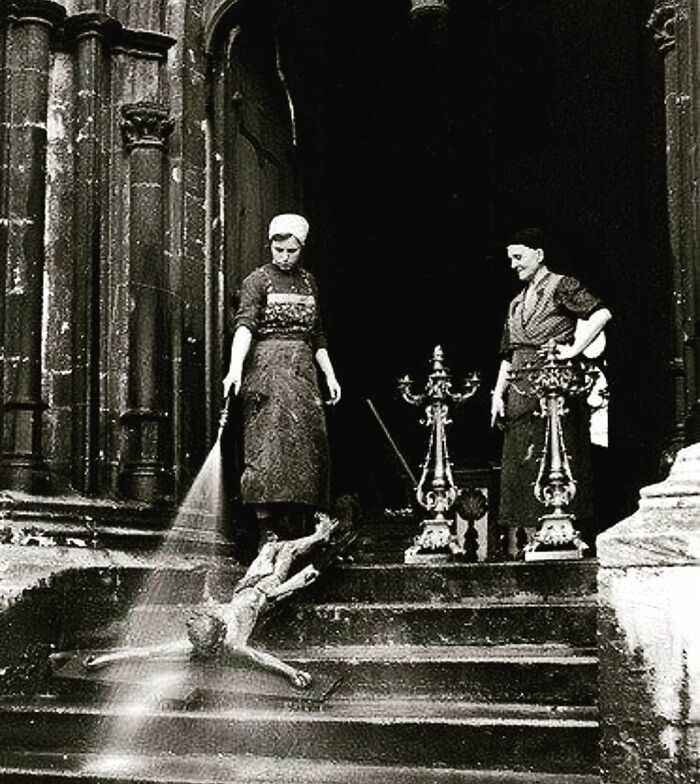
Image credits: years_in_photos
People Are Sharing ‘Alternate Angles’ Of Iconic Events And Places In History, Here Are 30 Of The Best
August 7, 2021
Close your eyes, and imagine the Statue of Liberty. You’ll probably picture its gigantic size, powerful posture, its intense face, the seven spikes of its crown, the way she’s holding a torch… Even if you’ve never seen it in real life, your mind most likely has a common image of it that most people have.
Thanks to the media, popular culture and instant access to virtually any information, we all have developed common perspectives of things, places and historical events. But what if we take a look at the Statue of Liberty from a completely different angle, let’s say, the very back of its head?
Well, one excellent corner of Reddit named “Alternate Angles” may have an answer or many answers to things we see at their face value. In fact, this relatively new online community created in 2019 is dedicated to showing a whole new viewpoint of “iconic events and places in history beyond the traditional well-known photos and videos.”
The result is fresh perspectives and never-before-seen angles that prove there’s so much more than what meets the eye! Plus, scroll down for the interview with the awesome moderator team behind the Alternate Angles subreddit.
#1 Aa Of The Sphinx – It Has A Tail!
![]()
Image credits: mattinglyschmidt
#2 Onlookers In Horror And Disbelief As They Watch The Twin Towers Collapse On 9/11
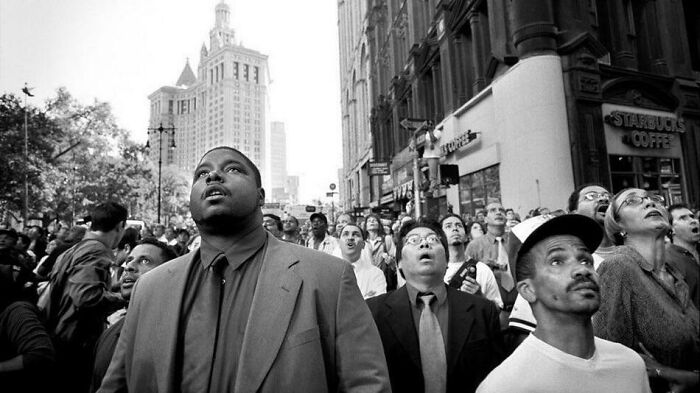
Image credits: Phantom_Katana
#3 Photo Of A Hiker Watching The Eruption Of Mt. St. Helens From Mt. Adams, About 37 Miles To The East.
![]()
Image credits: RampChurch
These days, when there’s so much content being shared on Reddit, it’s becoming hard to stand out from the rest of the subreddits. But the Alternate Angles subreddit proves that the internet can be an incredible place where we can all learn something new every day and expand our horizons.
With 132k members, Alternate Angles has been sharing a bunch of very interesting pics that show various objects, places, and events from unusual angles. It comes as a breath of fresh air where the dedicated and professional moderator team stands at the core of it.
#4 Bob Ross Before His Perm + Beard
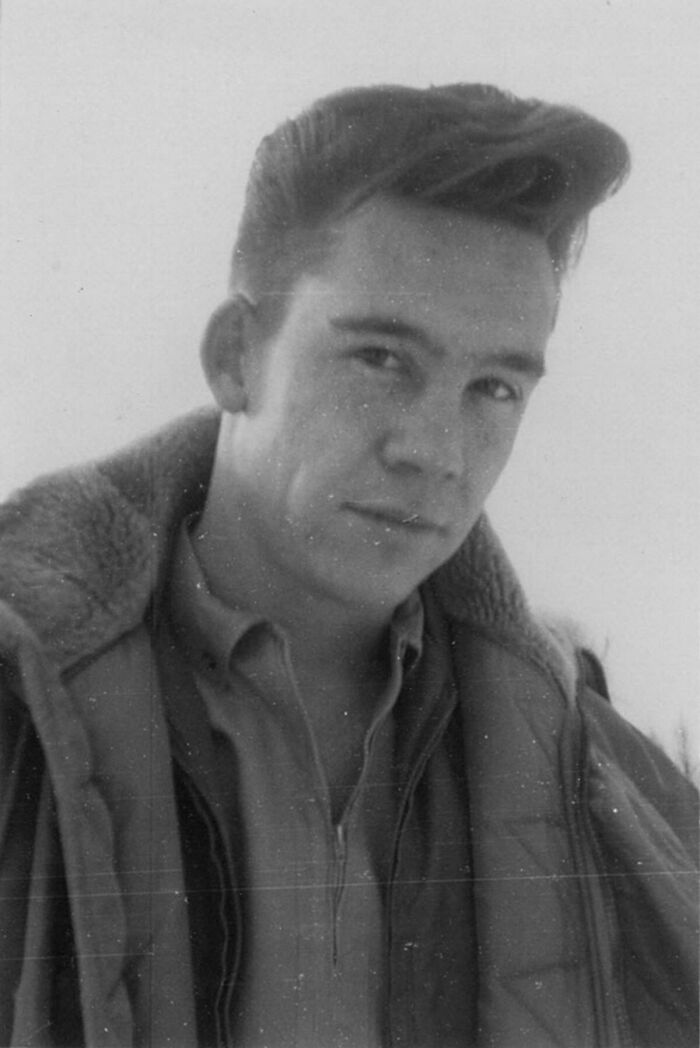
Image credits: hwhitead17
#5 Onlookers Reacting To The Explosion Of The Challenger Space Shuttle
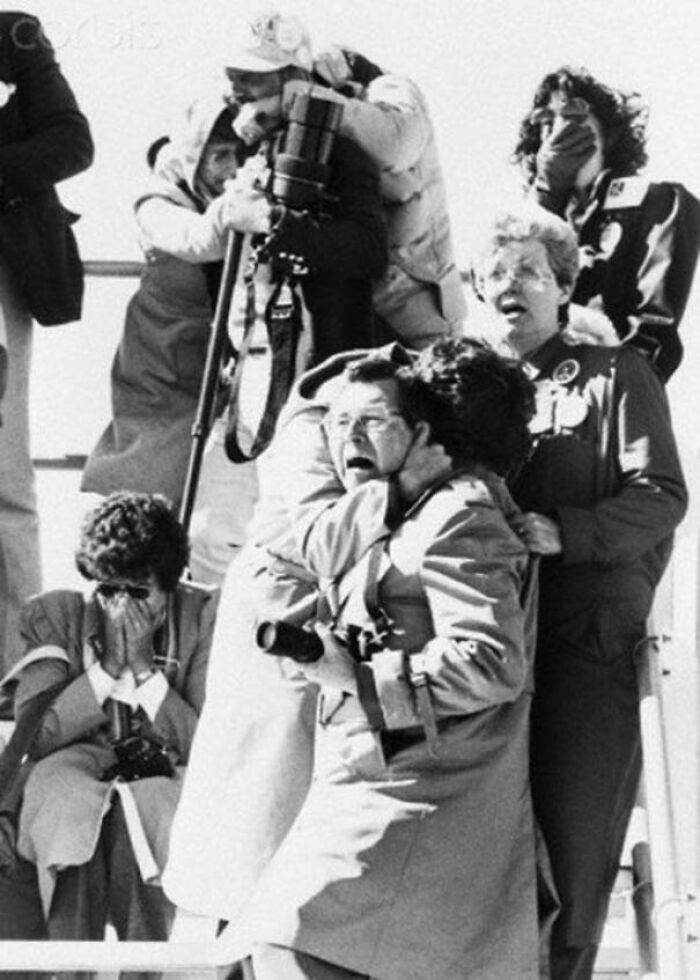
Image credits: Spenceh0616
#6 Prince William Giving “Middle Finger” After Prince Louis’ Birth
![]()
Image credits: tangledswing
“The origins are really quite simple,” the mod team told Bored Panda and continued: “A comment in another subreddit of famous pictures suggested that someone should create a sub of different views of famous pictures, which led to the creation of r/AlternateAngles by u/Murkon and another Redditor who decided to step down and is no longer a moderator.”
Most importantly, we asked the moderators to explain the very concept of Alternate Angles. They said that “it can be summed up by a rule: Limit all submissions to alternate views, or unique perspectives, of well-known locations, items, people, and events. An alternate angle of your kitchen does not qualify but Gordon Ramsay’s kitchen does.”
Having said that, the moderators added that determining what is “well known” is subjective. Hence, “the occasional post of an obviously non-well-known picture slips through, but we strive to keep with the original objective.”
#7 Charles Ebbets Photographing “Lunch On A Skyscraper”, The Famous Picture Of Workers In NY Eating Their Lunch On A Hanging Steel Beam
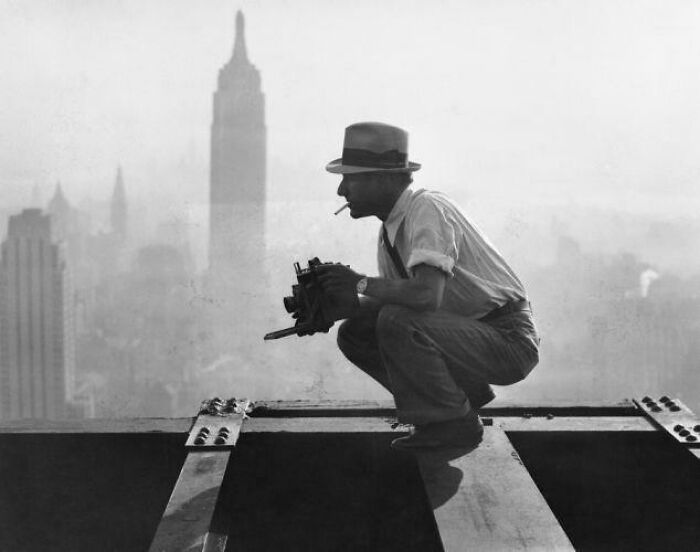
Image credits: WamuuAyayayayaaa
#8 The David Statue Protected By Bricks During Ww2
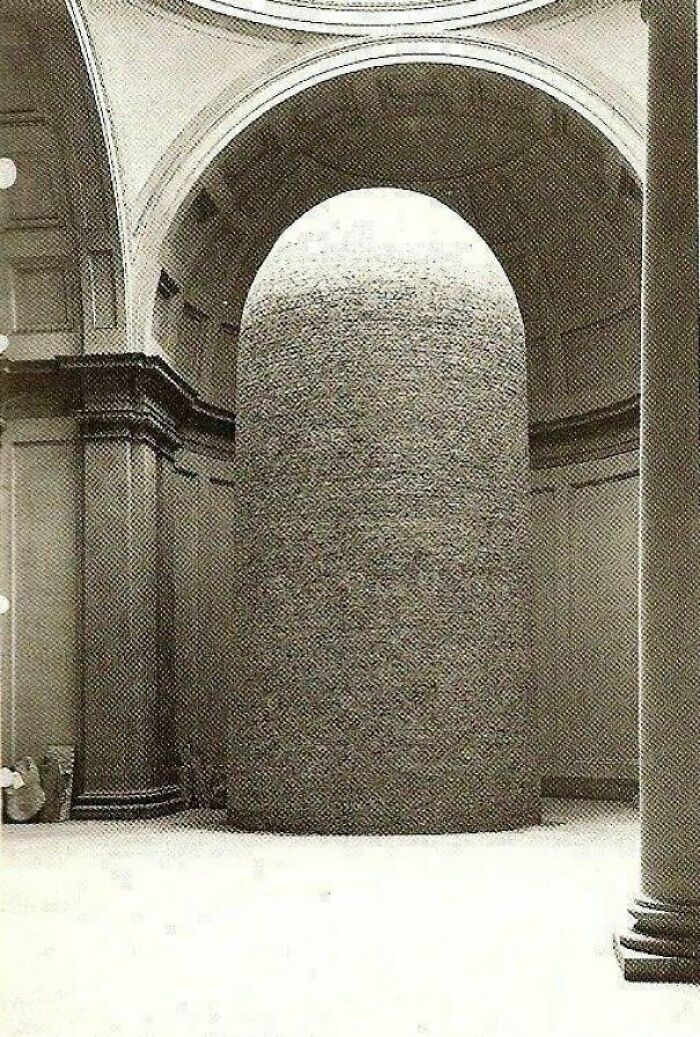
Image credits: wowthisslapps
#9 Neil Armstrong’s Family Watching His Launch To The Moon-1969
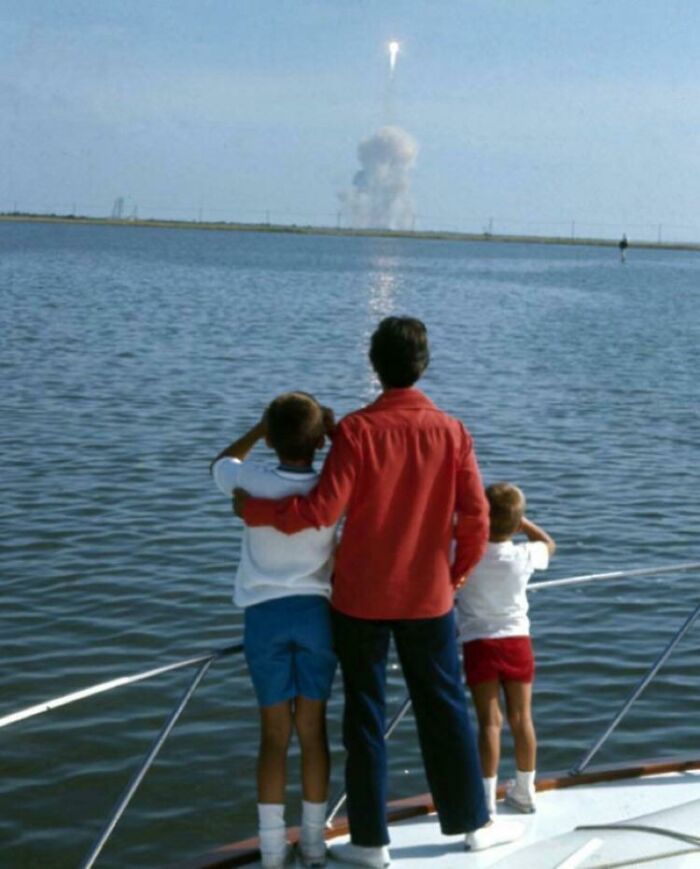
Image credits: justculture
Turns out that much harder posts to moderate are those that are fakes or photoshopped. For this reason, the team relies on “the fantastic and active user base to help out with those.”
When asked to share some of their own personal Alternate Angles posts, the moderator team said they “could have spent hours culling through thousands and thousands of posts to pick out more.” However, they picked a couple ones for our readers to enjoy: the Lincoln Memorial before the reflecting pool, recording Leo the Lion (the MGM’s iconic mascot), this alternate angle of one of the biggest tragedies in US history, and this rare view of the back panel of Mona Lisa.
#10 A More Depressing View Of The Taj Mahal
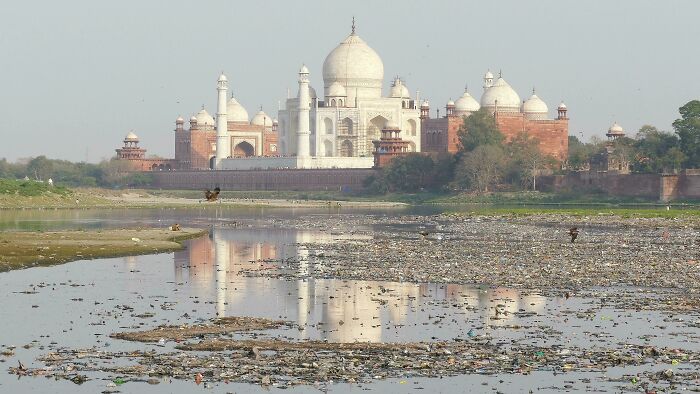
Image credits: RossBobArt
#11 The Statue Of Liberty At The 1878 Paris World Fair Before Being Fully Assembled And Shipped To The United States
![]()
Image credits: daffietiger
#12 Backside Of Tutankhamuns Mask
![]()
Image credits: daddyicecream
#13 Different View Of The Pyramids
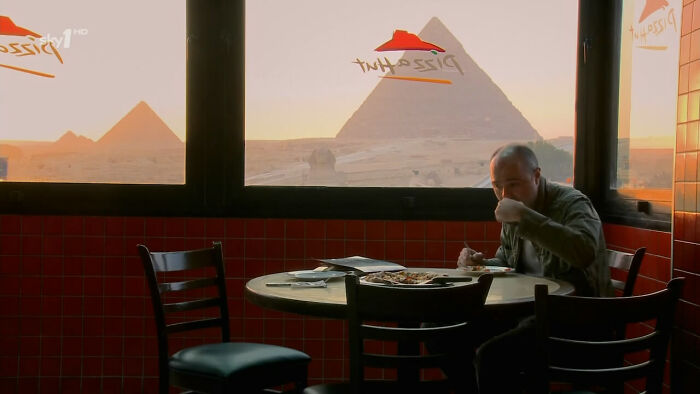
Image credits: Pucl
#14 Queen Filming The Iconic Bohemian Rhapsody Music Video In 1975
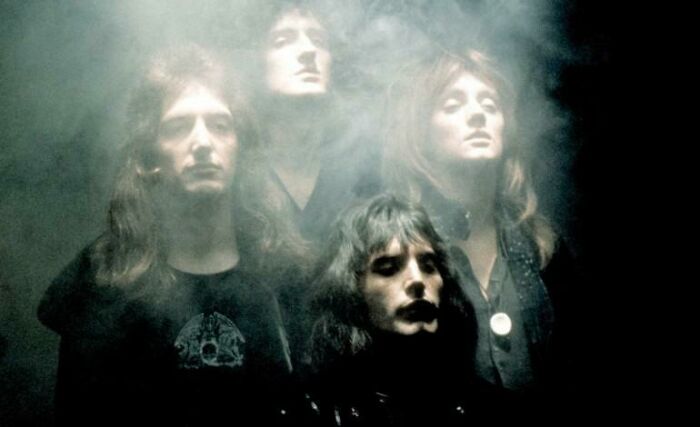
Image credits: Lacious
#15 Lincoln Memorial Before The Reflecting Pool
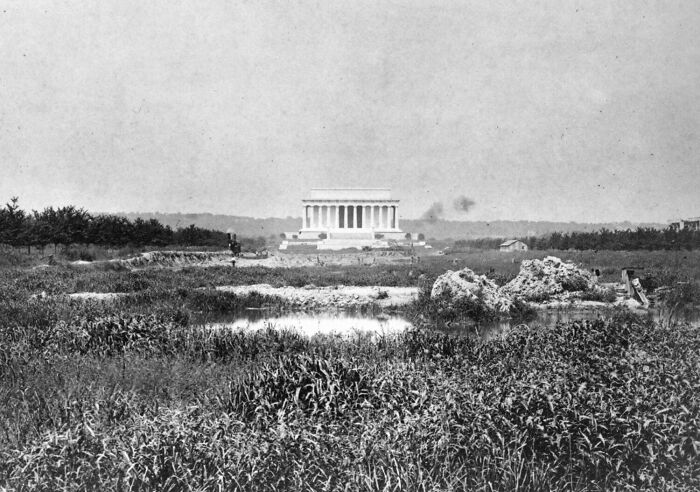
Image credits: DickDover
#16 I Have A Dream
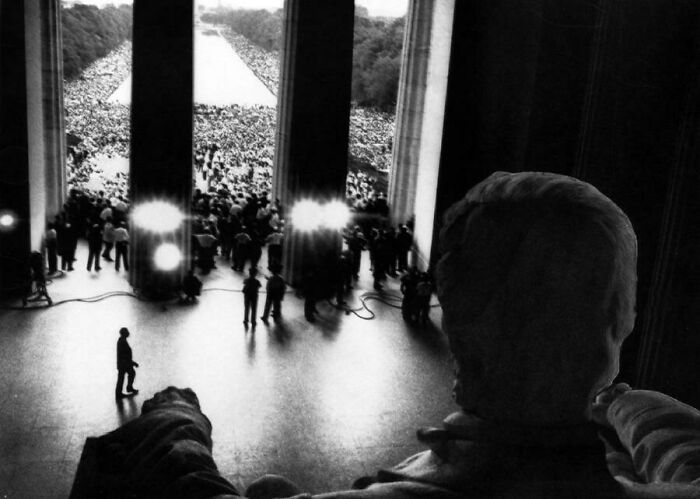
Image credits: hendrixnash
#17 The Tank Man Photo From The Day Of The Tiananmen Square Massacre In 1989, Uncropped
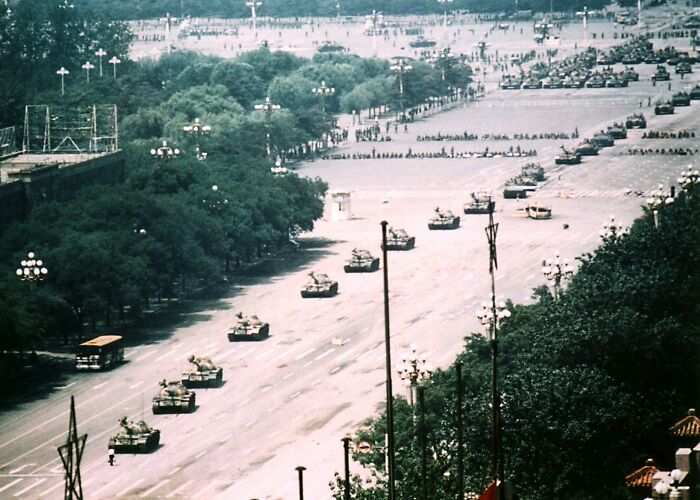
Image credits: radokobrata
#18 Star Wars Episode Iv Opening Crawl

Image credits: KevlarYarmulke
#19 The Beatles Lining Up For The Abbey Road Album Cover Photo
![]()
Image credits: walterwhitest
#20 Tiananmen Square Before The Infamous Picture, The Guy Is In The Top Left, 1989
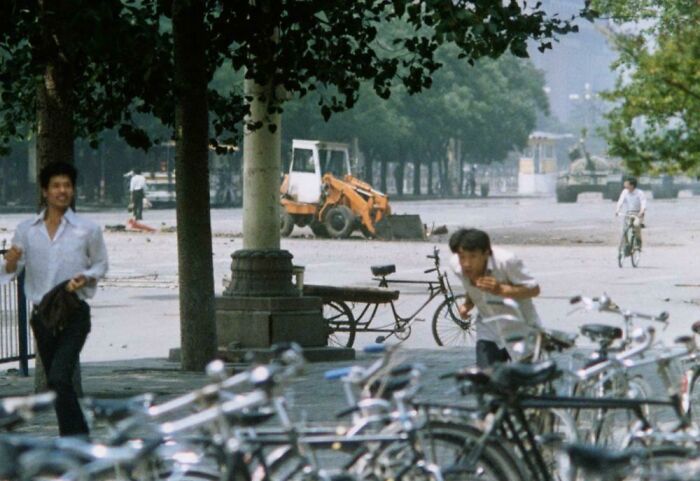
Image credits: Emberifyy
#21 Lady Liberty

Image credits: outofthebox5038
#22 The Nevermind Baby Getting Out Of The Pool
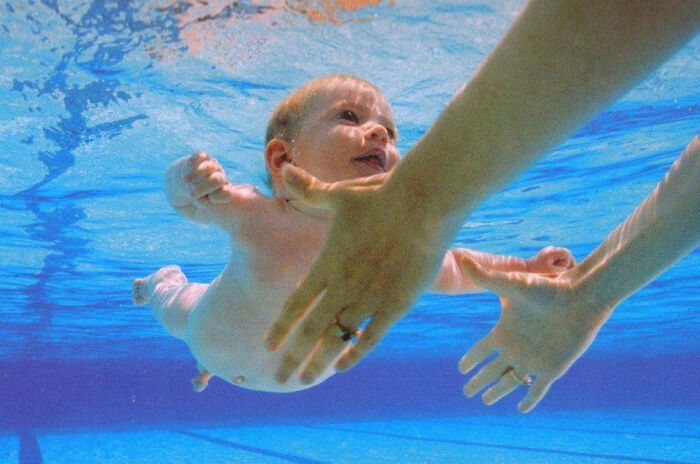
Image credits: gredgex
#23 North Korean Founder Kim-Il Sung Had A Baseball Sized Tumor On The Back Of His Head. North Korean Propaganda Officials Had All Photos Taken Of Him From The Left Side. This Is One Of The Few Candid Photos Of The Tumor
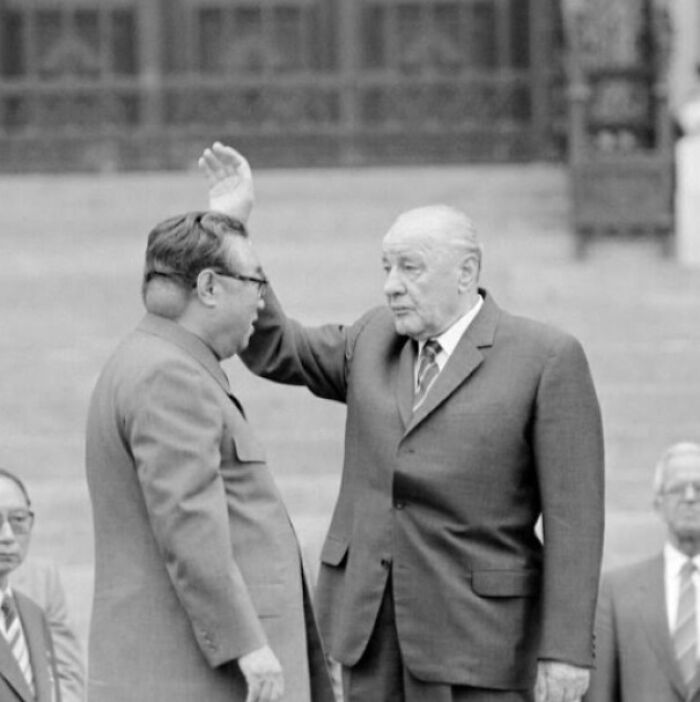
Image credits: justculture
#24 Sydney Opera House From Top
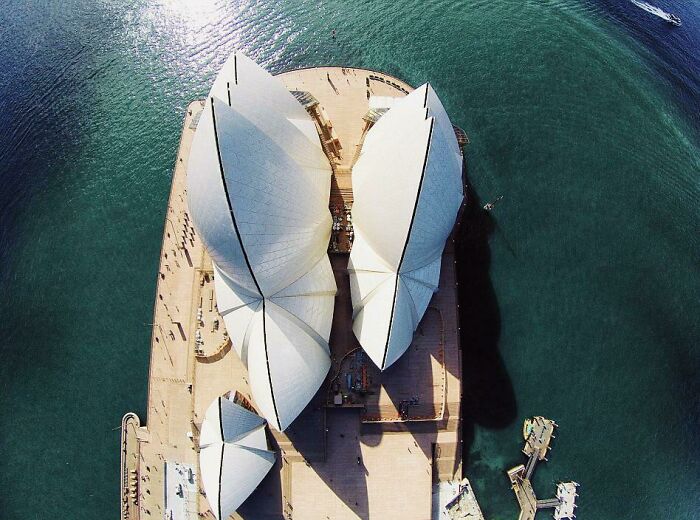
Image credits: _mono_no_aware
#25 Alternate Angle Of The Phantom Menace
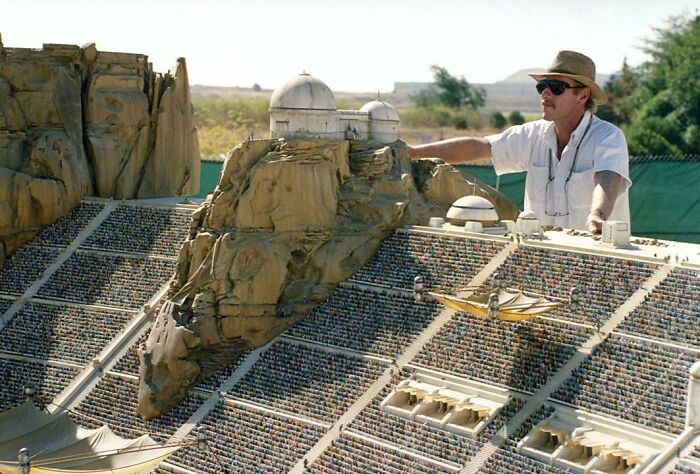
Image credits: coltsstrong23
#26 The Leaning Tower Of Pisa Is Empty On The Inside
![]()
Image credits: rick_n_snorty
#27 Behind The Price Is Right Wheel

Image credits: cheese__chester
#28 Vincent Van Gogh
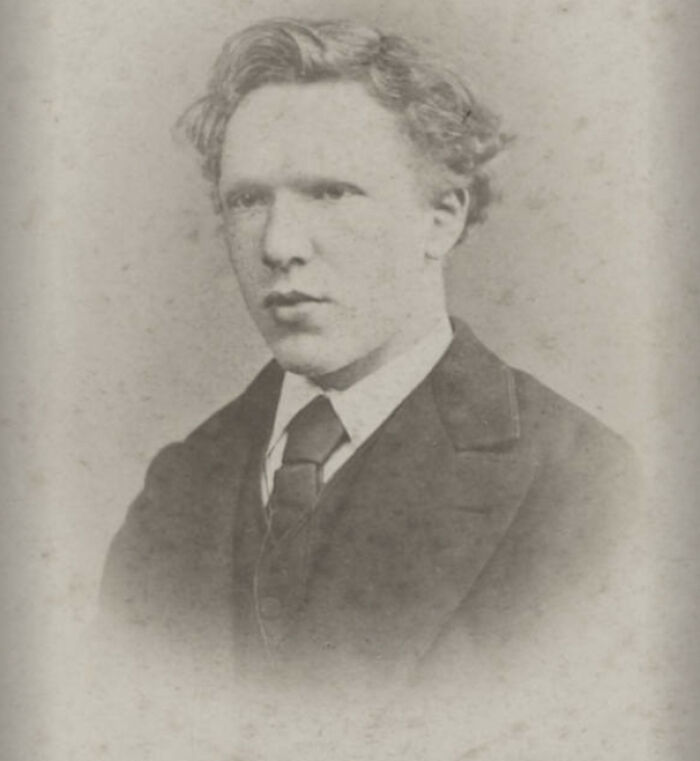
Image credits: Moofisilla
#29 Not The Typical View Of The Tiananmen Square Protests…
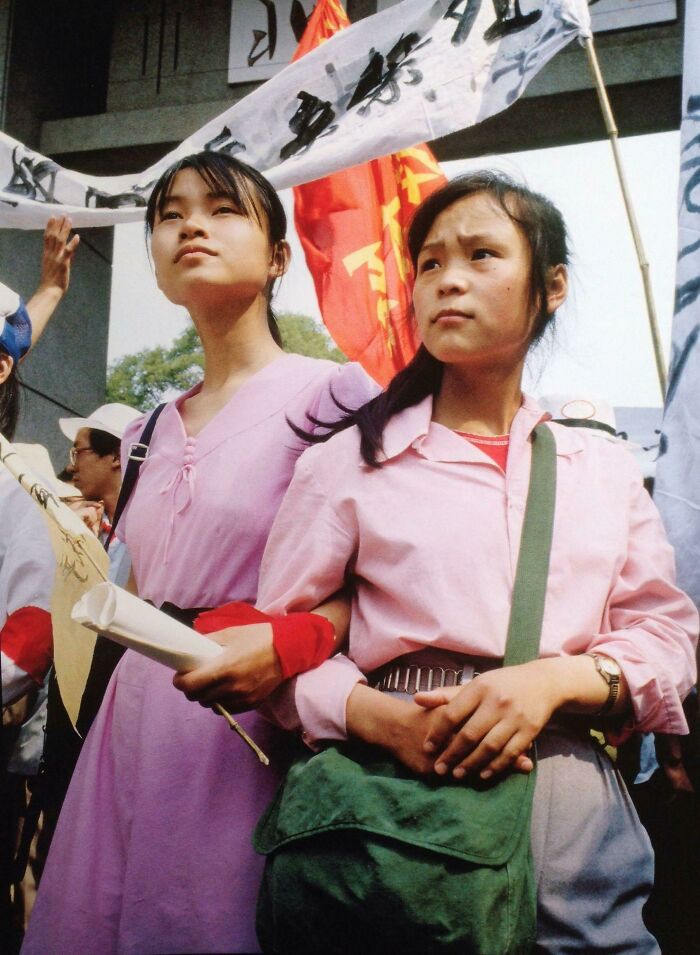
Image credits: fisherman363
#30 The Position Of The Camera Man Who Took The Picture Of The Dallas Shooter
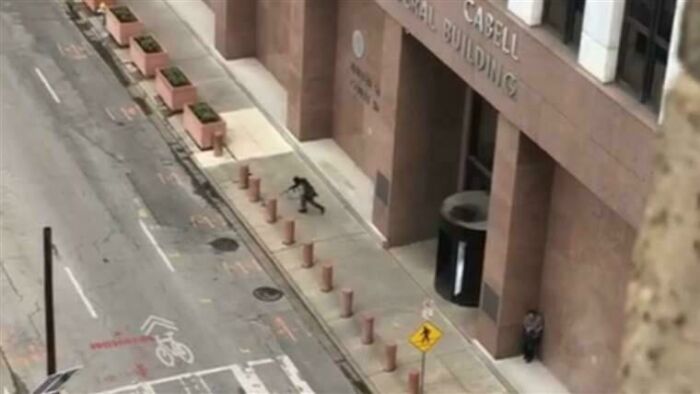
Image credits: penguinitoloco
50 Funny Pics To Prove That The Best Way To Learn History Is Through Memes
July 7, 2021
Our avid readers will know how much we love memes here at Bored Panda, from science memes, viral 2020 memes, and very literal memes to more specific memes like jokes and memes for women to relate to and car memes to laugh at while you’re stuck in traffic. Because memes are the unofficial language of the internet and if you haven’t been off to the moon lately, you’ll surely know how to speak a word or two.
So this time, we have a special treat for your inner nerd or anyone who missed that once-in-a-lifetime chance to make their history teacher proud. Yep, we’re talking dates, events, and contexts that happened either far back or quite recently in the past.
Welcome to the history memes fueled by the r/HistoryMemes subreddit, where a whopping 2.7M members and self-confessed history experts crack jokes about the old days. Scroll down and upvote your favorites!
#1 I See What U Did There

Image credits: bea_ker
#2 Selective Breeding

Image credits: NoLifeLine
#3 A Joke Book From 1940

Image credits: Physics_Simon
Internet memes have been a widely used visual form of online rhetoric since the early 2000s. Today they have become a prominent method of communication across the internet, but as a research subject, they’re still not very well-examined.
With 20 years of communicating in memes, we still don’t know their exact implications, says Rebecca Ortiz, an assistant professor of advertising at the Newhouse School. “Research on internet meme effects is still in its infancy. But we can look to past media effects research to hypothesize how people may be influenced by them.”
#4 But At Least They Have The Cool Building With All The Flags In It

Image credits: cuntfruitcake93
#5 Professionals Have Standards

Image credits: SuperMegaPepega
#6 History Repeats Itself

Image credits: puffinleaves
We should never underestimate the power that social media and the content that’s surfing there has on our beliefs, identities, and culture. “The most shareable content on social media will reach the most people and potentially have the greatest effect,” she said.
Think of memes as bits of humor that capture shared cultural meanings and speak to some of the largest audience on our planet. “[They] are some of the most shareable pieces of content on social media and therefore they deserve scrutiny and better understanding as to how they may influence us,” Ortiz explained.
In that sense, understanding a meme is a way to bond with people and feel a strong sense of community. We as humans are wired to do so, so memes are the perfect gateway to that.
#7 Not The Tea

Image credits: prylex1
#8 Scientifically Proven
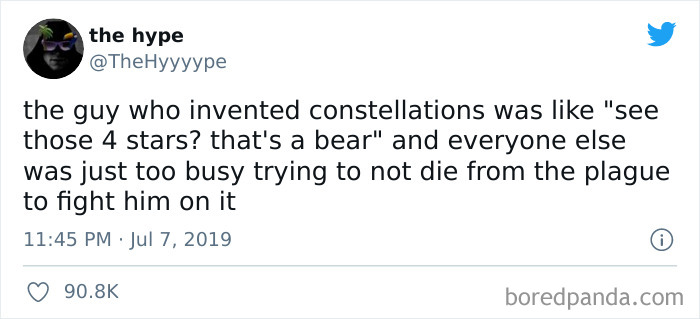
Image credits: TheHyyyype
#9 So Much Spice!
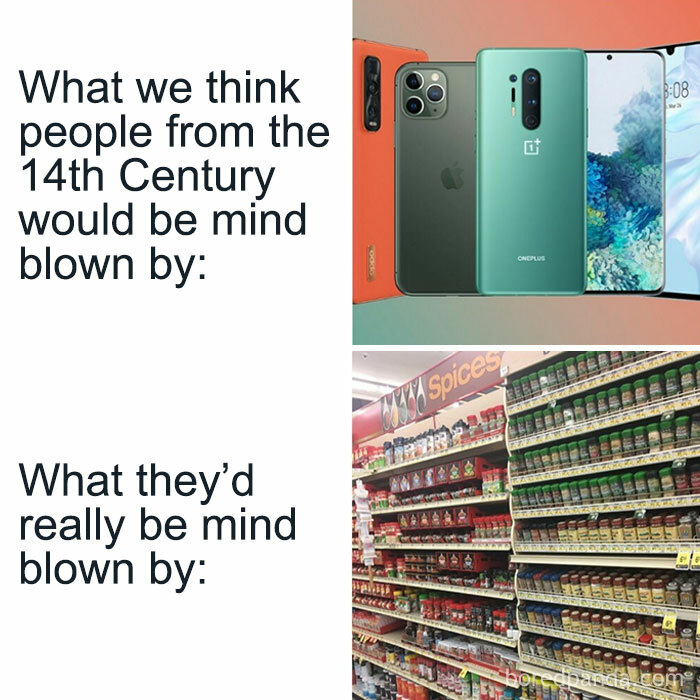
Image credits: Mr_Elijiah
#10 If You Don’t Believe Me Look At China Right Now

Image credits: valsagan
#11 They Here Cause You Dragged Them Her

Image credits: Baswdc
#12 Black Panther Flashbacks
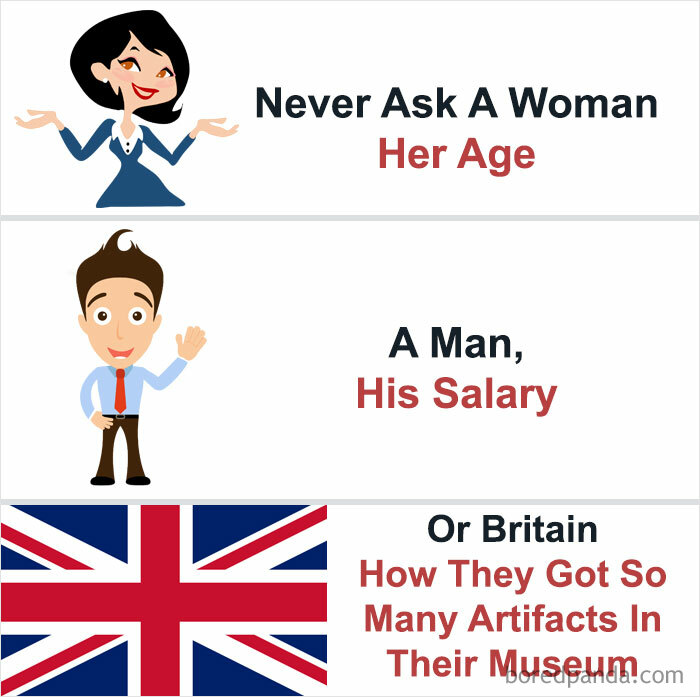
Image credits: LightSwitch545
#13 Ah, Good Times
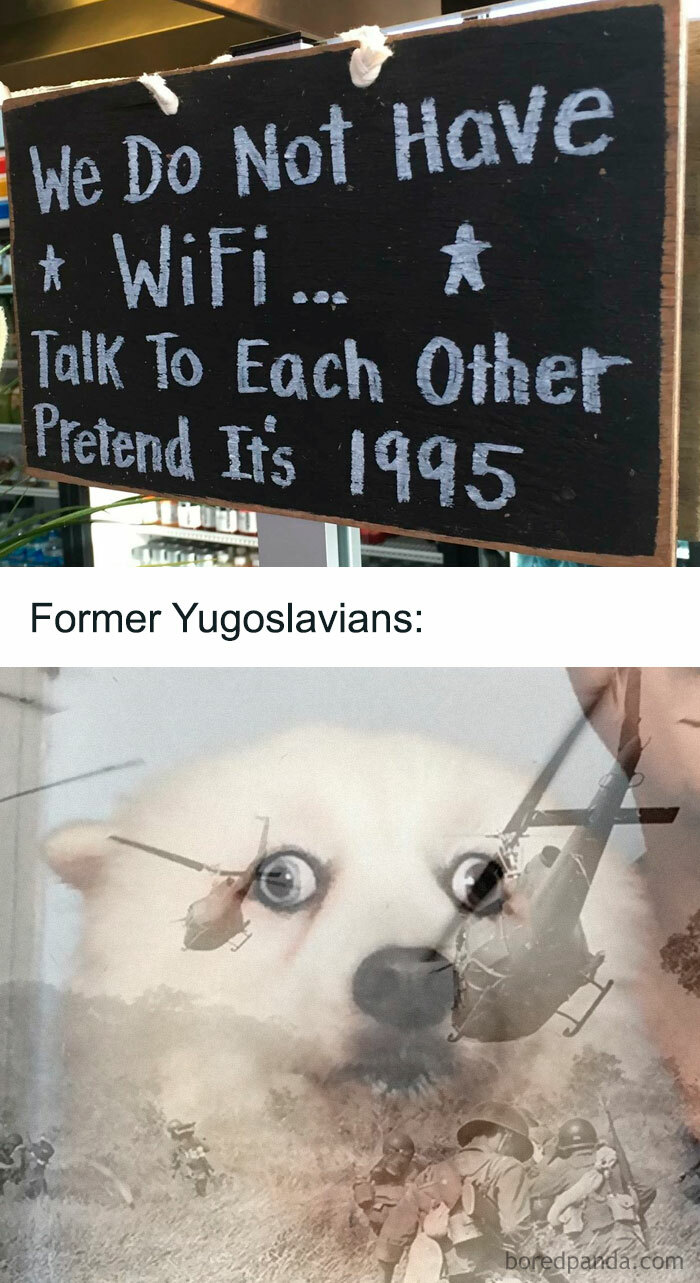
Image credits: tree_branch1
#14 Enslaving People Because Of Color Skin? Absolutely Barbaric!

Image credits: reddit.com
#15 I Dont Think You Want
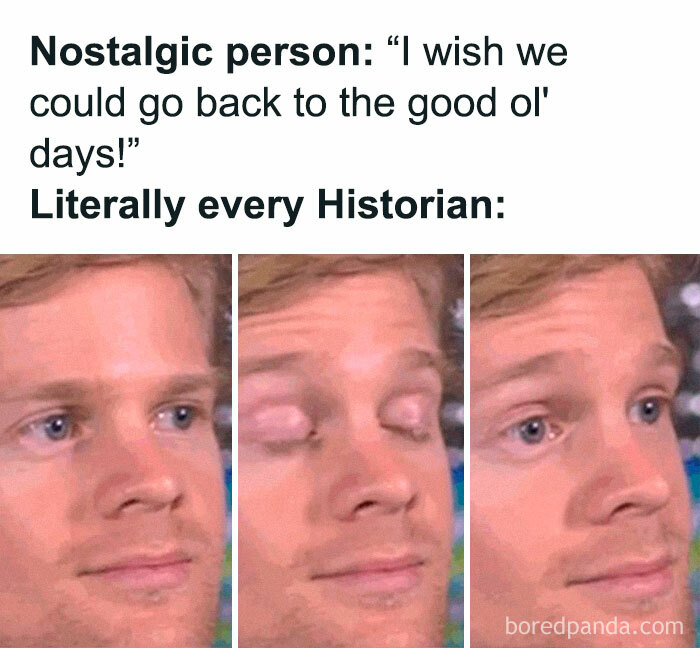
Image credits: SedoSedi
#16 Just Make Up Your Mind!

Image credits: eingutjungen
#17 A Toast To The Irish
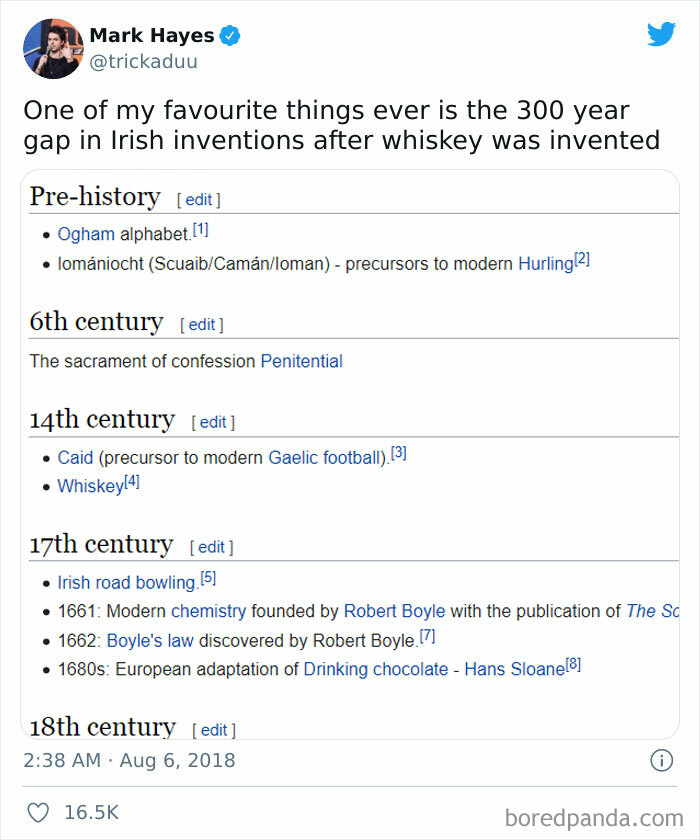
Image credits: SunnyWolf17
#18 UK Is Like Belgium
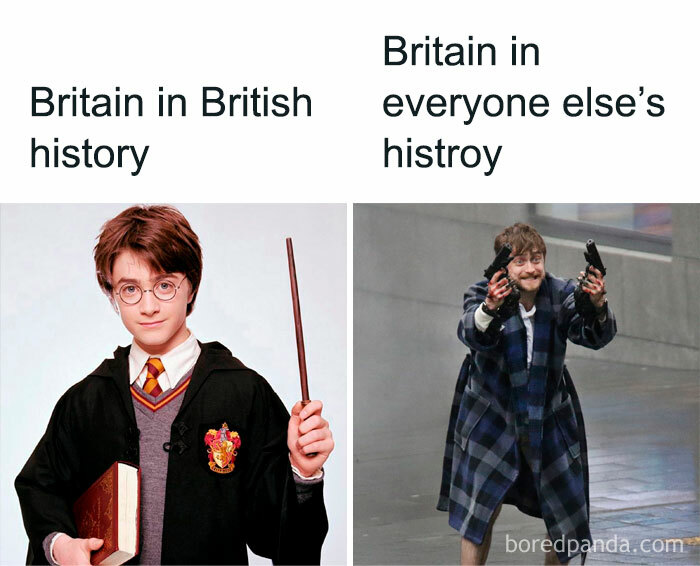
Image credits: reddit.com
#19 What A Nice Little White Girl

Image credits: Hottestfish69
#20 Life’s A Witch
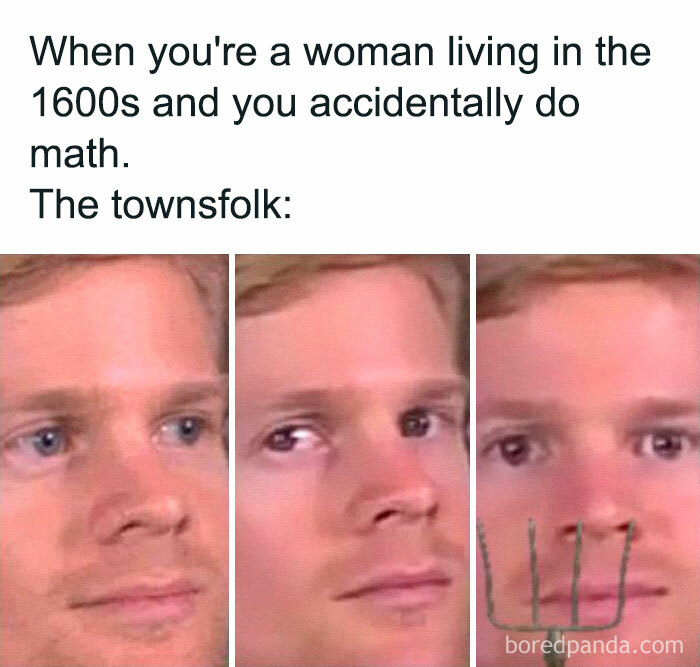
Image credits: thelonecompanion
#21 A Rare Glimpse Of A History Meme In The Wild

Image credits: rexavior
#22 Oh Well Its Not Like We Can Do Anything About That

Image credits: karkeris
#23 *laughs In Nazi Gold*

Image credits: EliotHudson
#24 This Country Is Gonna Be Lit!
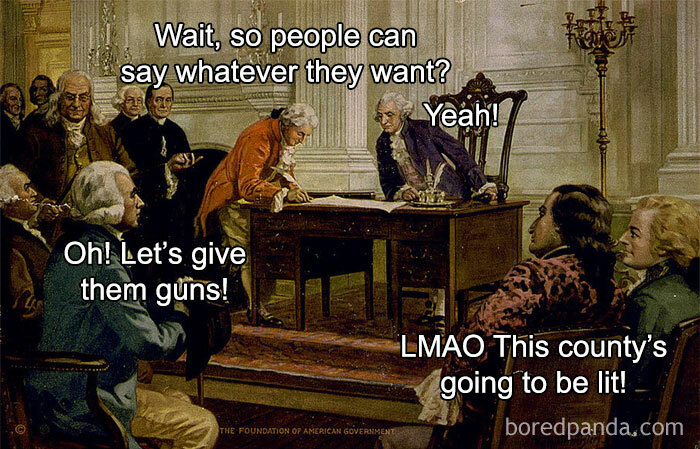
Image credits: subwanuno
#25 Literally Grave Robbers
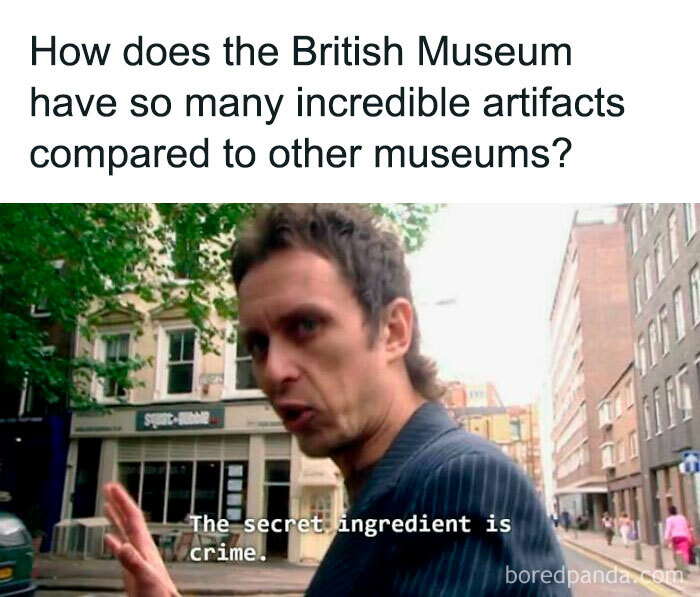
Image credits: gofundmemetoday
#26 Also Forgot To Mention Hera Was His Sister…still A Classic Though

Image credits: Ben_Swolo501
#27 Ratatouille’s Revenge

Image credits: speedoc
#28 The Madlad

Image credits: ImnotaNixon
#29 I’m So Lucky
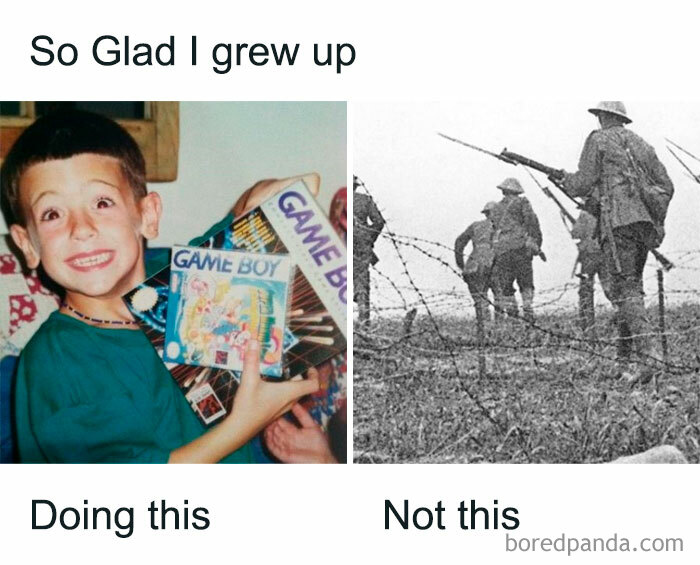
Image credits: Nonkel_Jef
#30 “George, I’ve Just Noticed Something…”
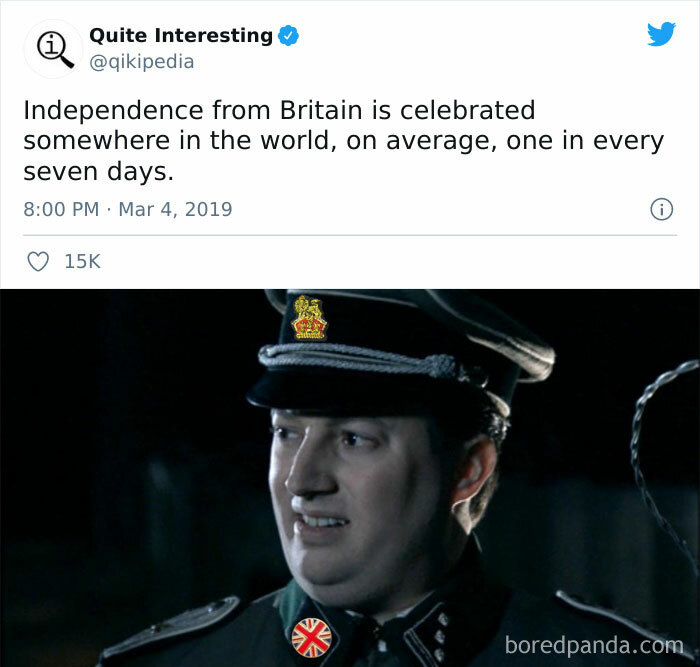
Image credits: chompythebeast
#31 Belgian History 101

Image credits: -MElonMusk
#32 It’s Not Even Close Really
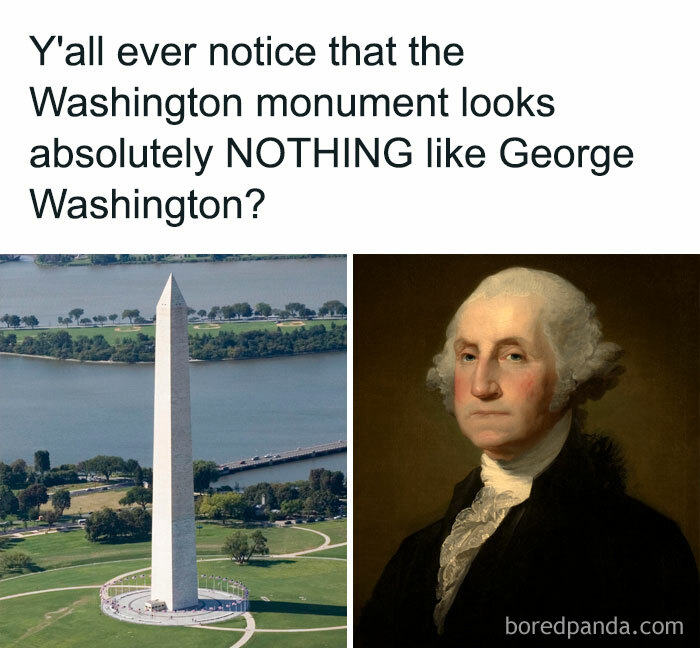
Image credits: reddit.com
#33 The Grand Tour Has A Lot Of Meme Potential
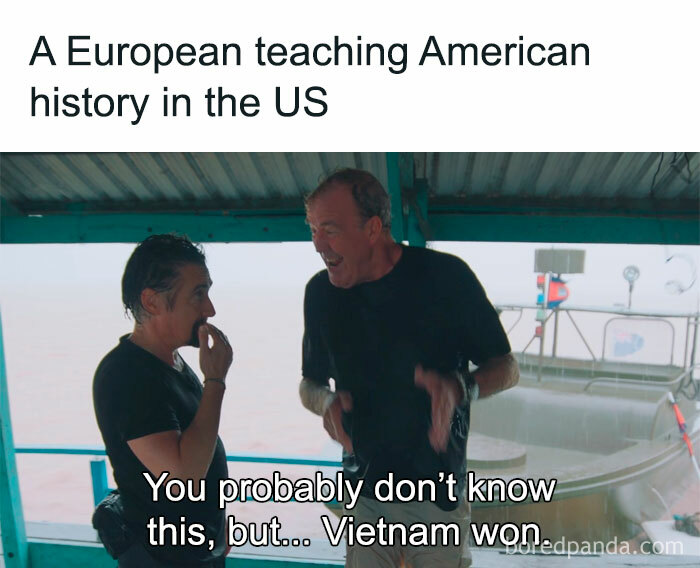
Image credits: PoliticsEnthusiast
#34 This Is In The Book I’m Reading
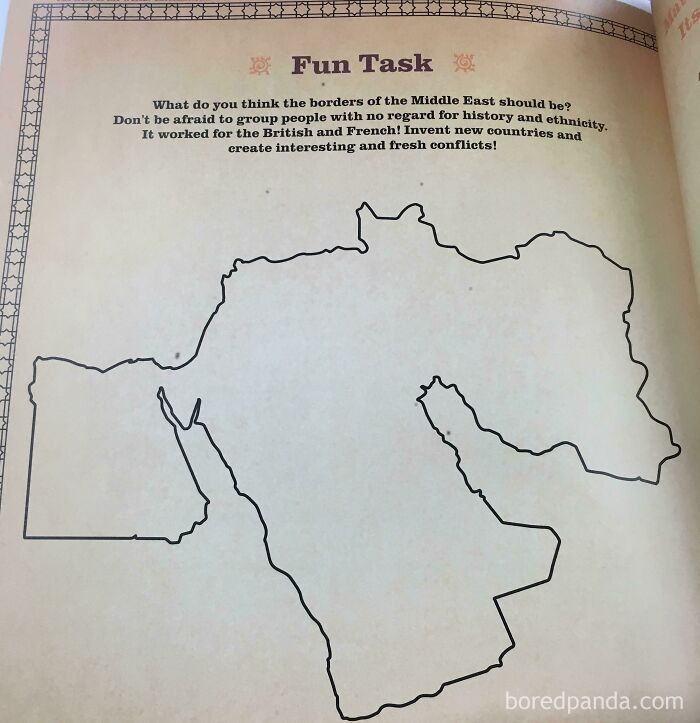
Image credits: Hazeandnothing
#35 God Is An Englishman

Image credits: Rob-With-One-B
#36 One Of Our Fellow Scholars

Image credits: GolHahDov
#37 Guten Tag, Polen
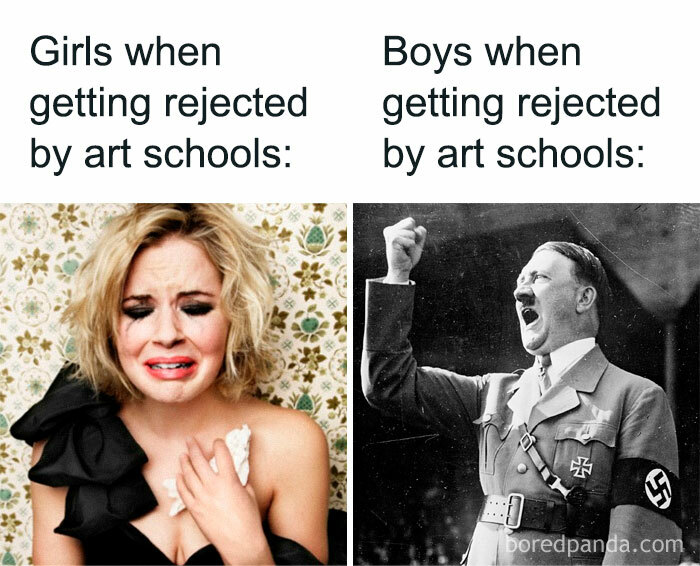
Image credits: turk_tangle_ig
#38 Coincidence? I Think Not

Image credits: ItsAndyRyan
#39 So True

Image credits: deadlyspawn187
#40 Oh No
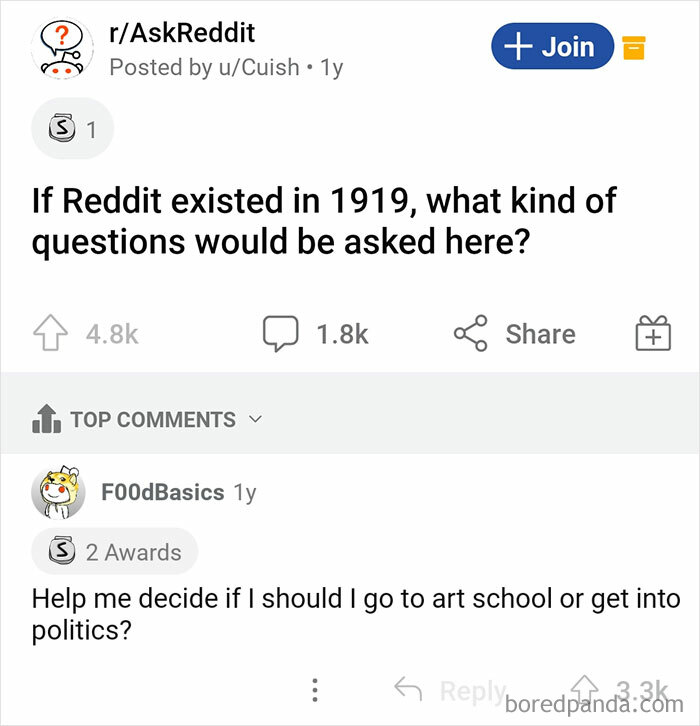
Image credits: reddit.com
#41 Not Sure If This Has Been Done Before

Image credits: PrimeMemeister
#42 All Road Lead To Rome
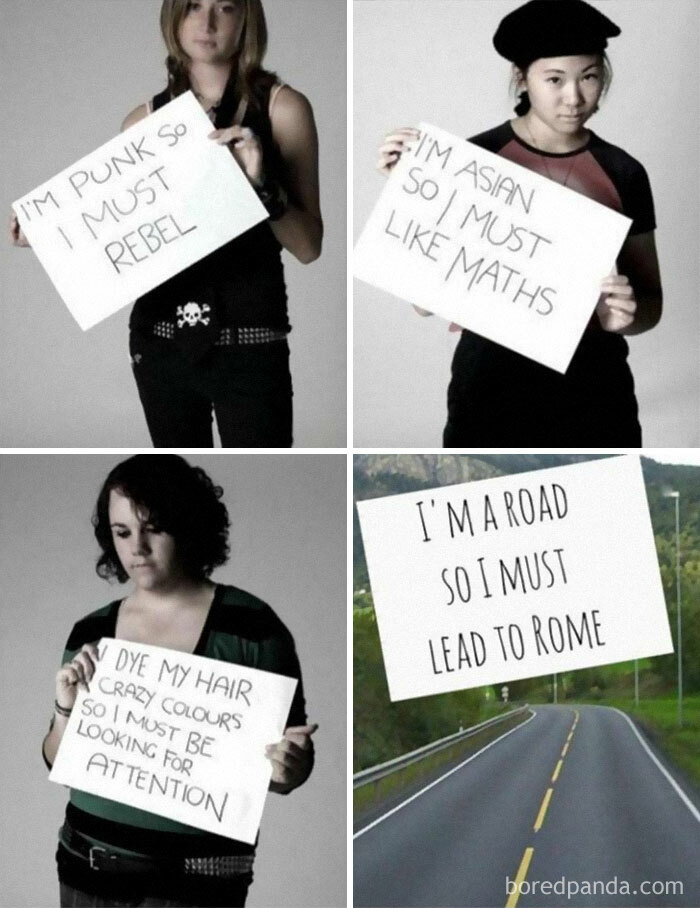
Image credits: Fadhilll
#43 Quick Fake China Is Asleep! Up-Vote Flag Of Real China

Image credits: Yhorm_The_Gamer
#44 Sparta, This Is
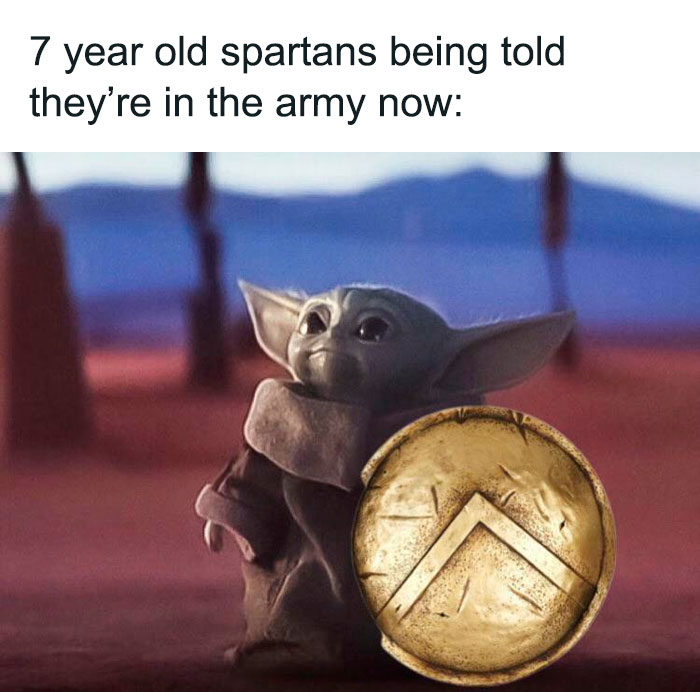
Image credits: Lean-II-Machine
#45 Faked Their Deaths
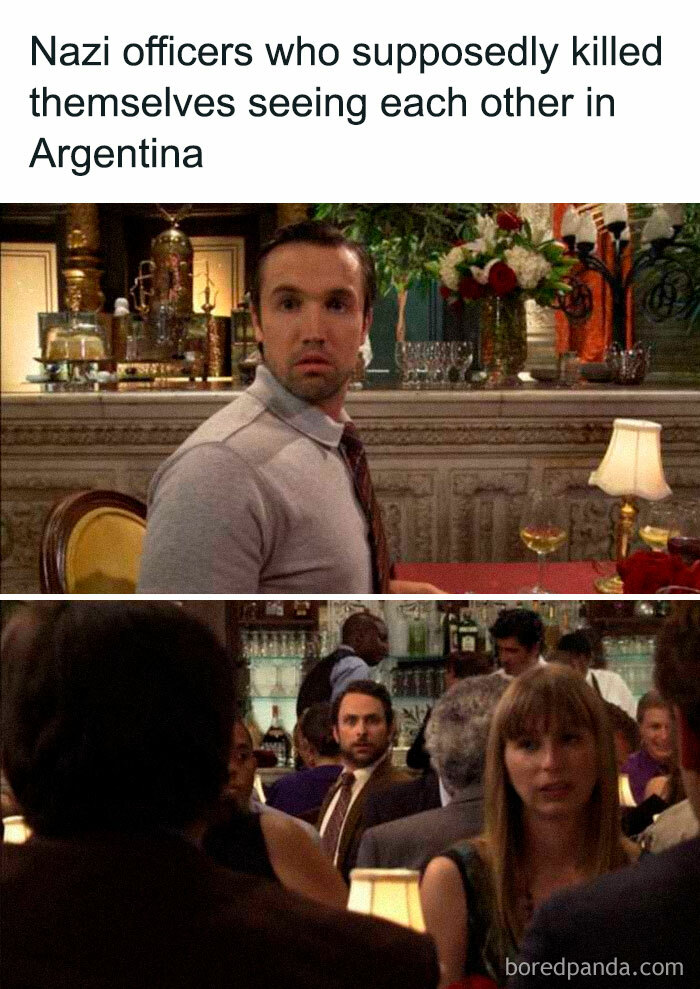
Image credits: rad302
#46 Manifest Destiny Be Like
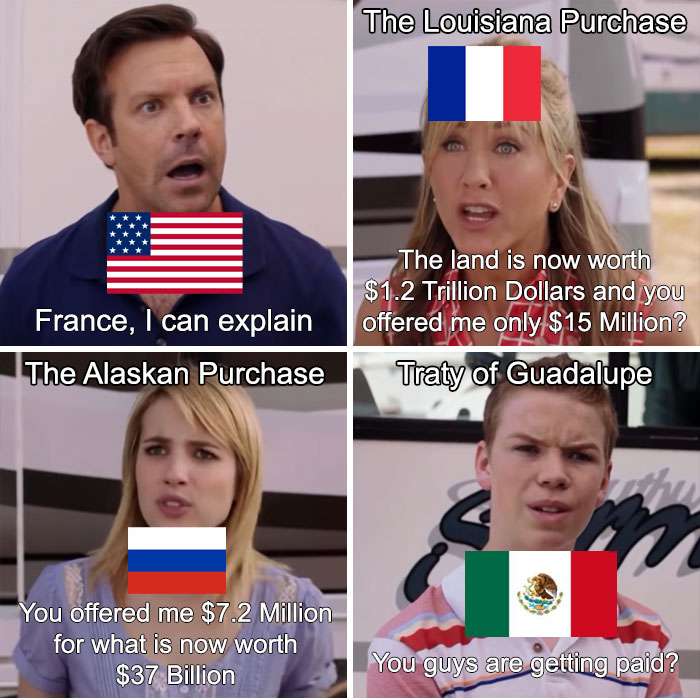
Image credits: klayb
#47 Yeah, Someone Definitely Used A Ruler To Draw Some Of These Borders
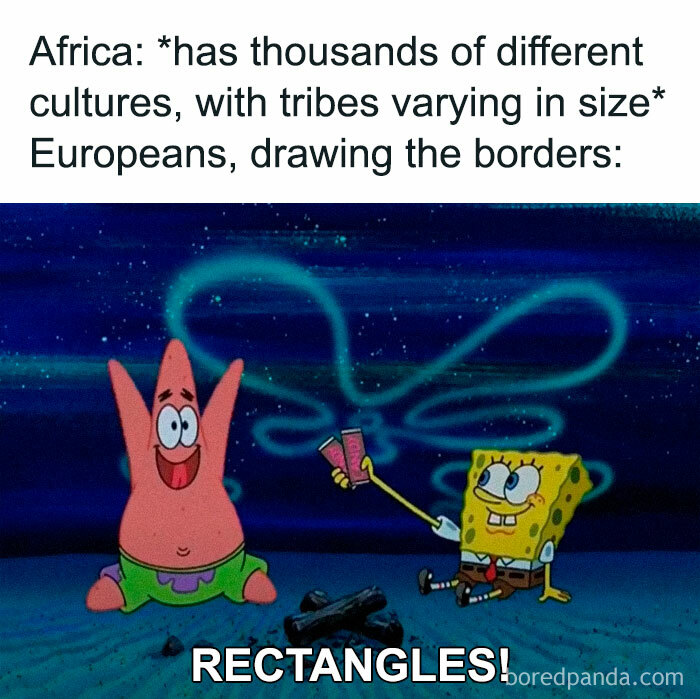
Image credits: Geschiedenismemes
#48 Not Cool Andrew Jackson
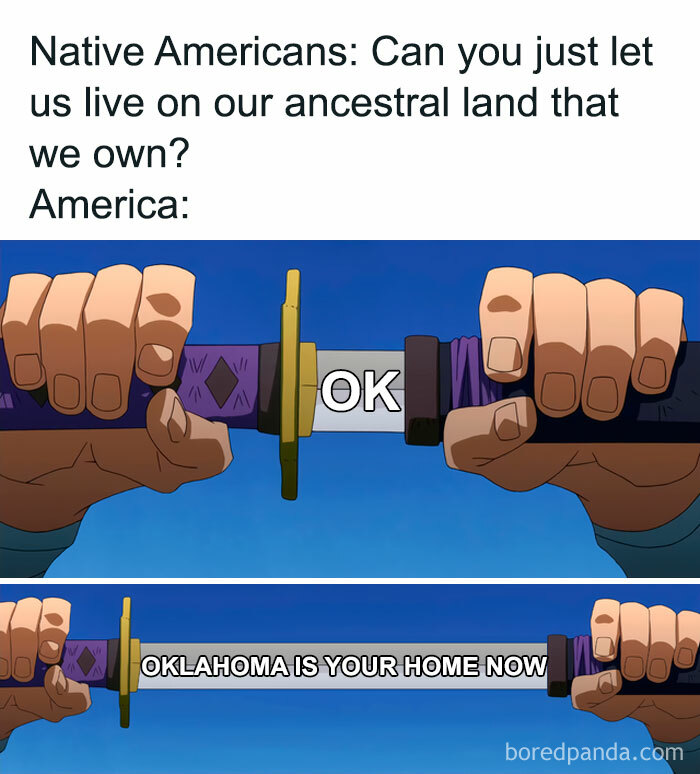
Image credits: IUseRedditAmICoolNow
#49 We See Through Your Disguise, Himmler

Image credits: frankieluigi
#50 Are We The Baddies?
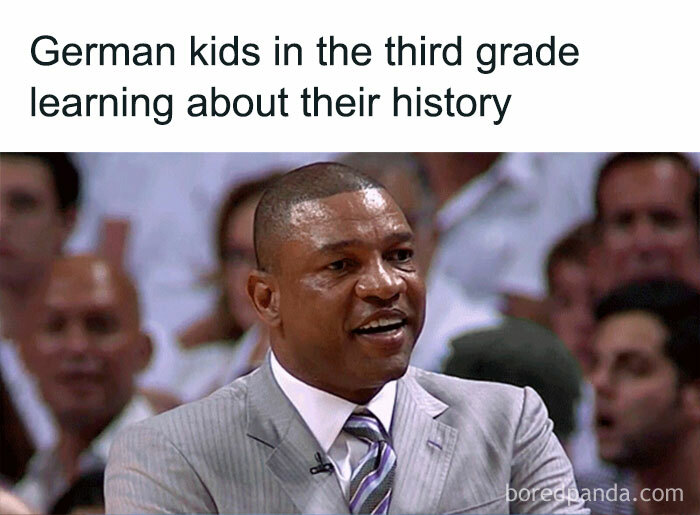
Image credits: klayb
